Best bike lights of 2025 - Tried and tested options for night time riding
The best bike lights help you see, be seen, and keep you safe when cycling on and off road
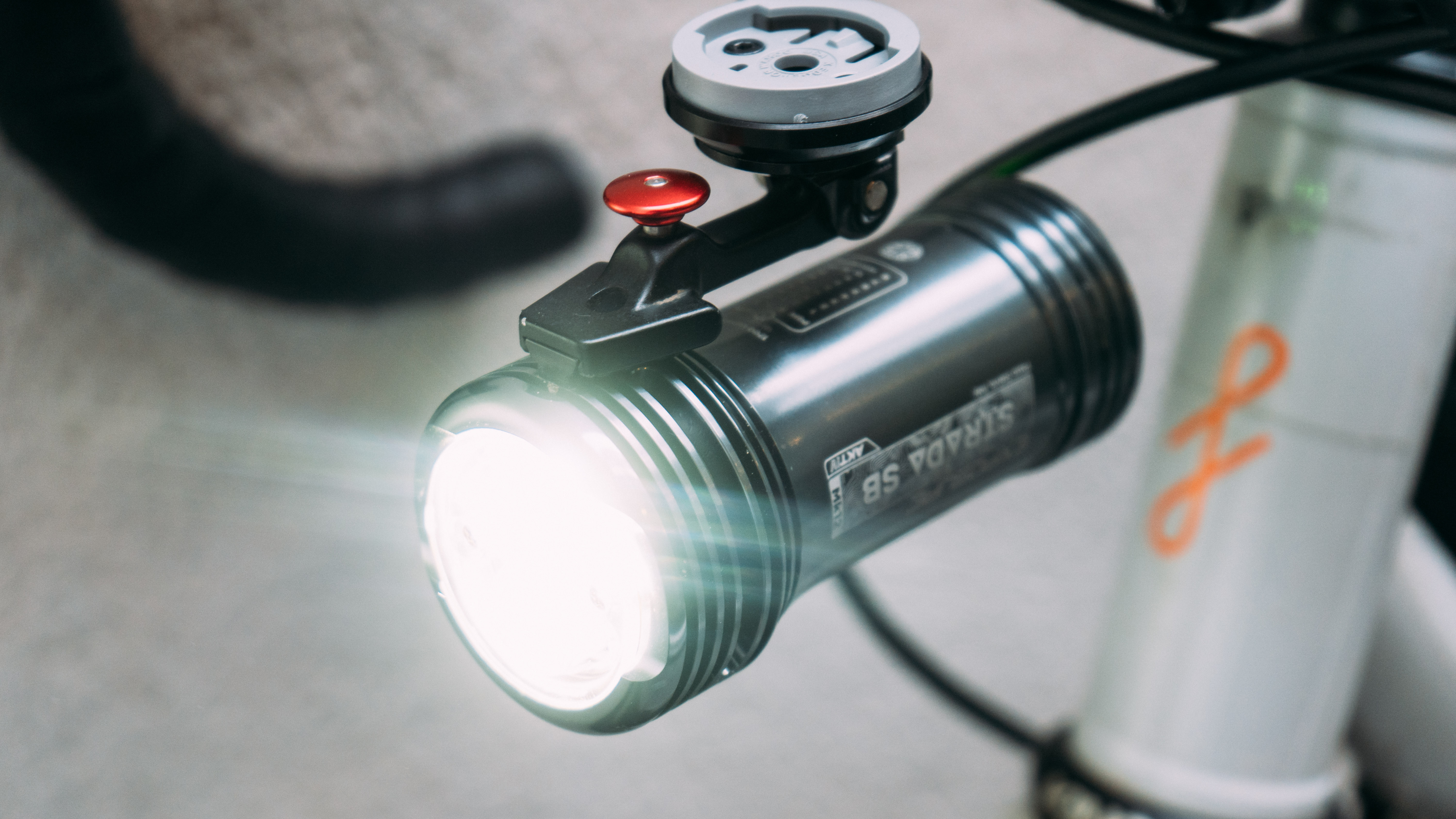
- Quick list
- FRONT LIGHTS
- ▶ Best overall - Front
- ▶ Best budget - Front
- ▶ Best beam shape
- ▶ Best commuter - Front
- ▶ Best for gravel
- ▶ Best for daytime - Front
- ▶ Brightest front light
- REAR LIGHTS
- ▶ Best overall - Rear
- ▶ Best budget - Rear
- ▶ Best for group riding
- ▶ Best for commuting - Rear
- ▶ Best for daytime - Rear
- ▶ Most powerful - Rear
- ▶ Best for safety
- Also consider
- How to choose
- How we test
The best bike lights fall into one of two categories. The first - 'be seen' lights - are bright enough to attract the attention of other road users around you, but not quite bright enough to light up the road ahead of you. Both front and rear options fall into this category, and the majority of budget lights fall here too.
Secondly, are the 'see' lights, in that they help you see where you are going when riding in the dark. These naturally also serve to make you more visible too, but are brighter and often more expensive. Only front lights fall into this category, of course, and a lot of riders bolster their 'seeing' front light with a 'be seen' auxiliary one too.
I've got first-hand experience with nearly all the lights in this guide, and on the few occasions where I don't, I'm drawing on my colleagues' direct feedback after substantial testing of their own.
The basic need for ll bike lights is be bright enough for their intended use, have a battery that lasts long enough for your intended journey, and robust enough to deal bad weather. Each light in this list fits the bill in these regards, so it's just a matter of picking the best setup for your intended use, and your budget.
In the guide below I've made my suggestions as clear as possible, but if you are left with more questions, there's an FAQ section at the bottom of the page to help guide you through.
Quick list
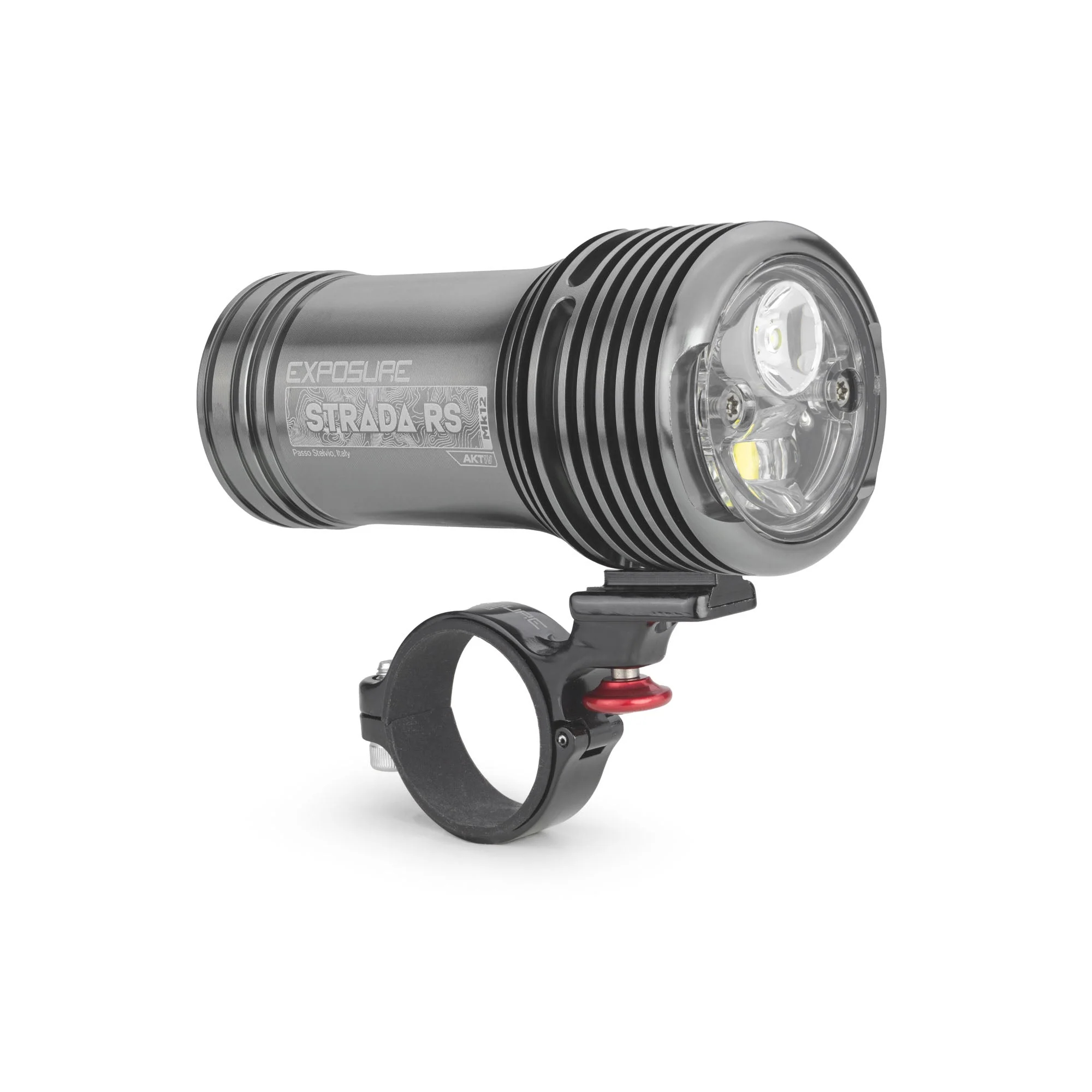
+ Incredible build quality
+ Huge battery life
- Hefty
The Strada is an investment, but it packs so much into one light it easily justifies the price tag. Incredible battery life, bombproof, and it can automatically dip the beam when it senses car headlights.
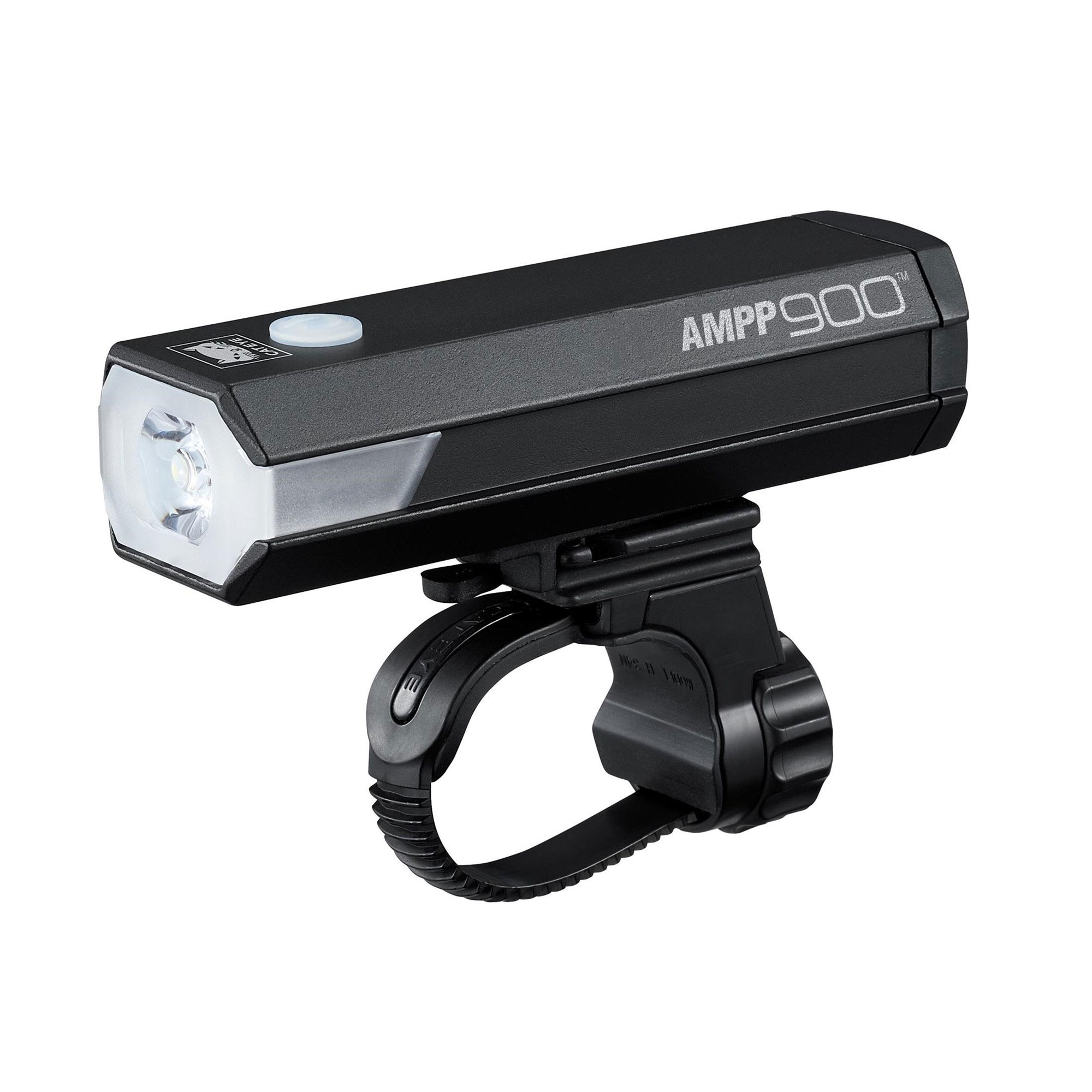
+ Easy universal mount
+ Bright enough to do most things
- Harder to mount under a computer
A well-executed, no-nonsense front light that'll clip to round and aero bars if needed, and cover you for city commutes and the occasional foray into darker places without breaking the bank.
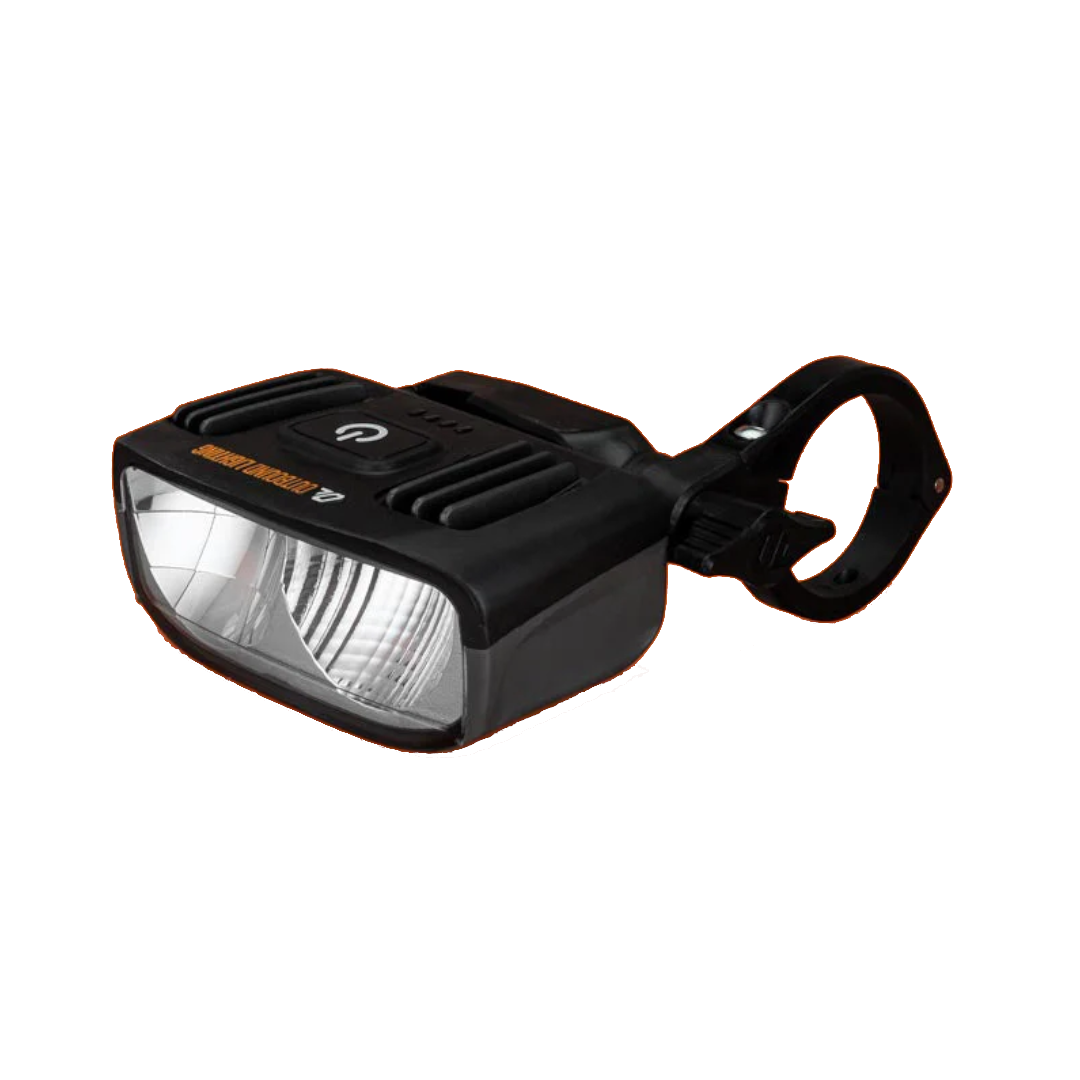
+ Sharp beam cutoff
+ Great battery life
- Sits very far forward under a computer
Reasonably priced, well made, and with a shaped beam that's great for road riding. The battery life is good, and you can charge it while using it too for long, dark rides.
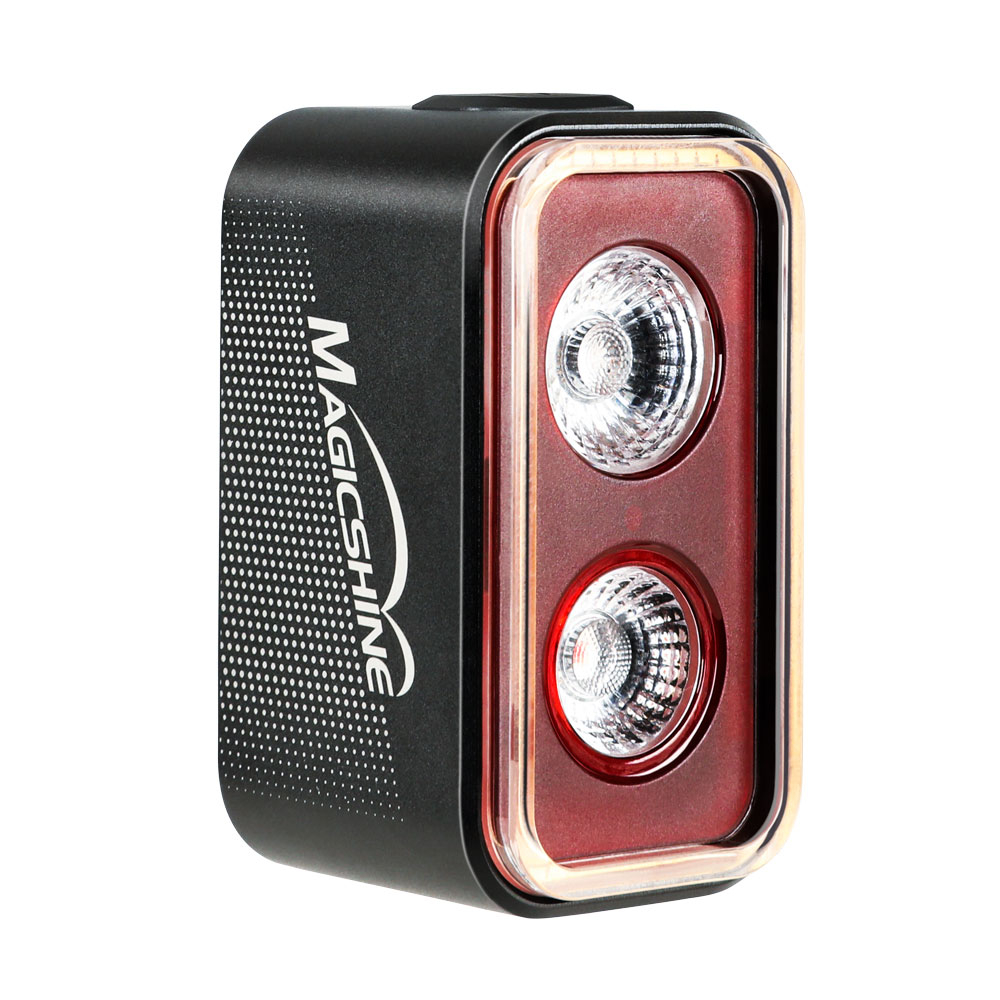
+ 200hrs battery life
+ Downward LED illuminates road
- A Little Bulky
If you are truly forgetful about remembering to charge then this is for you. The battery life is HUGE, and it's also bright, with a downward facing LED that projects a red halo around you for increased side visibility.
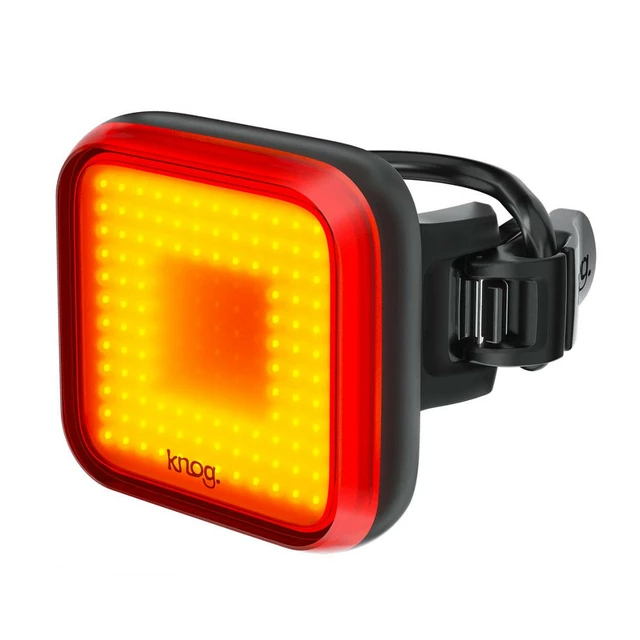
+ Direct USB charging
+ Big light area
- Not angled for seatposts
A big flat square with numerous tiny LEDs inset into it that you can plug directly into a USB socket to recharge. Bright, with dynamic patterned flash modes for added visibility.
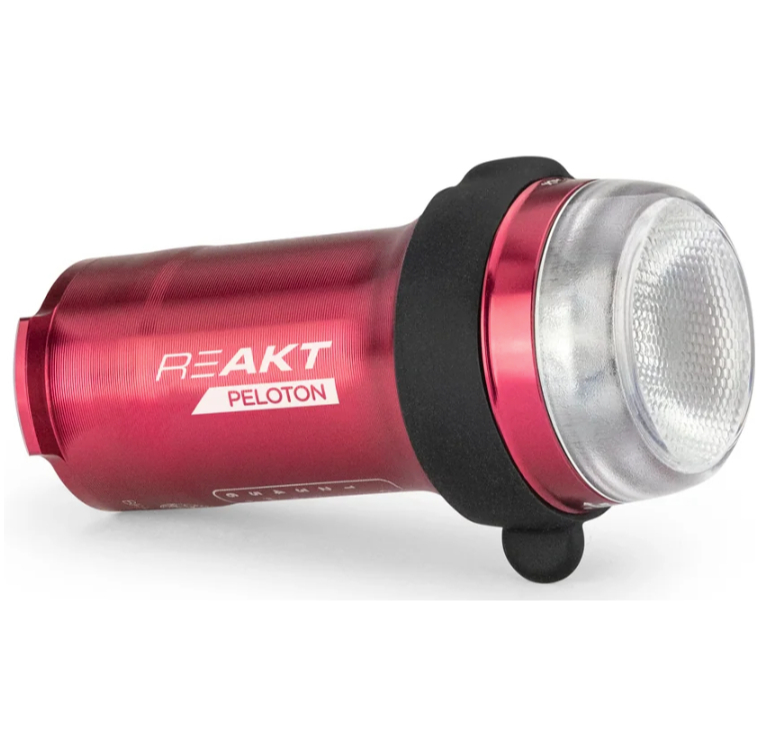
+ Extremely bright
+ Great added features
- High RRP
Small, extremely well made, and a host of added features including the ability to act as a brake light, and automatically dimming when it detects you are in front of another rider.

Having spent the last decade without a turbo trainer I have lost count of the number of hours I've spent riding only by the light of whatever is clipped to my bars, or slung beneath my bike computer in recent years, both on and off-road. Bike lights are a necessity for many of us, but in my opinion they can be as transformative for your winter riding as mudguards and proper winter layering.
Recent updates
19th February 2025 More testing has been underway since the prior update, so in this edit, we've amended some product descriptions to make our findings clearer. The products we recommend are unchanged, but we've added context to help readers find the ideal product more easily.
Best front bike lights
Best front bike light overall
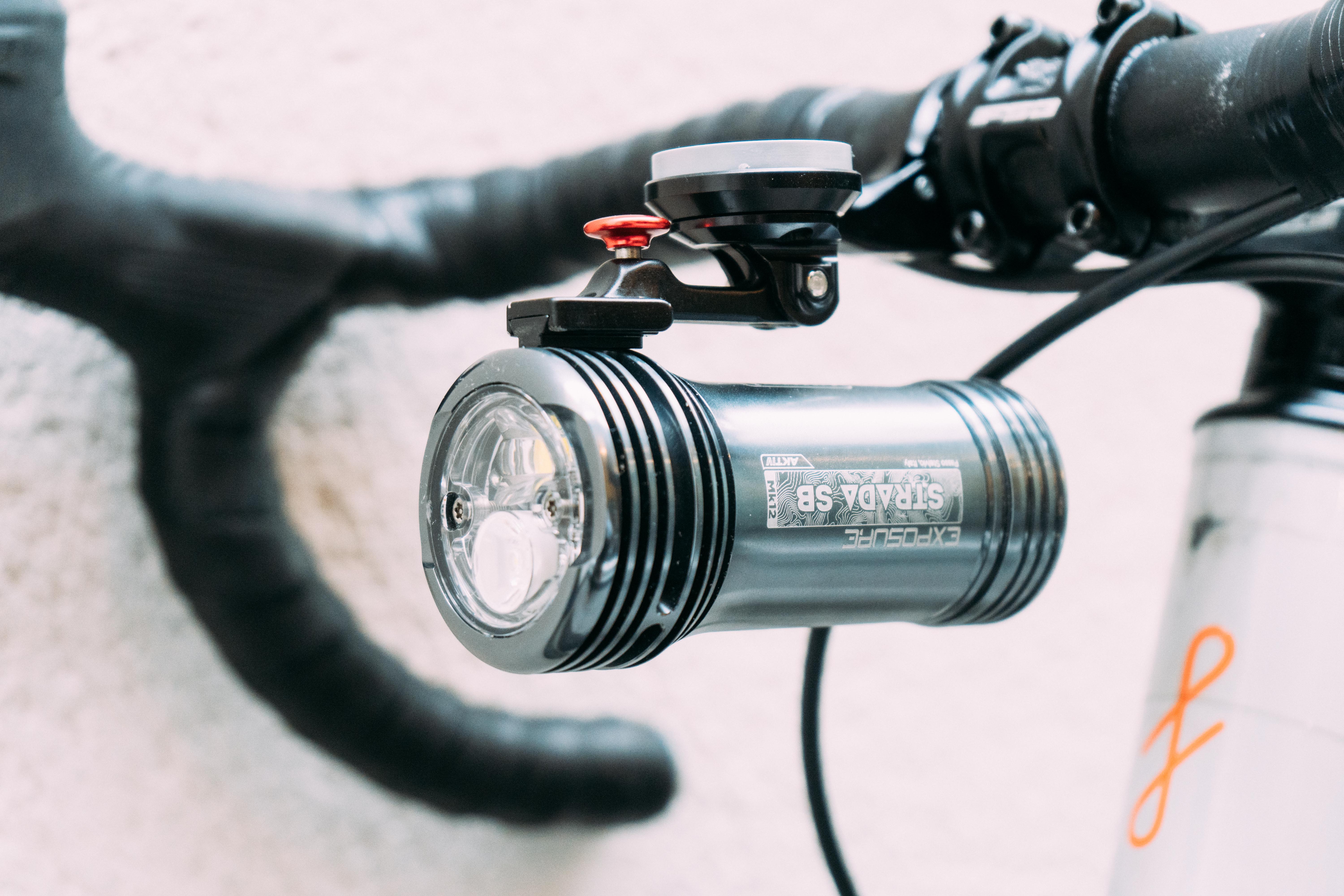
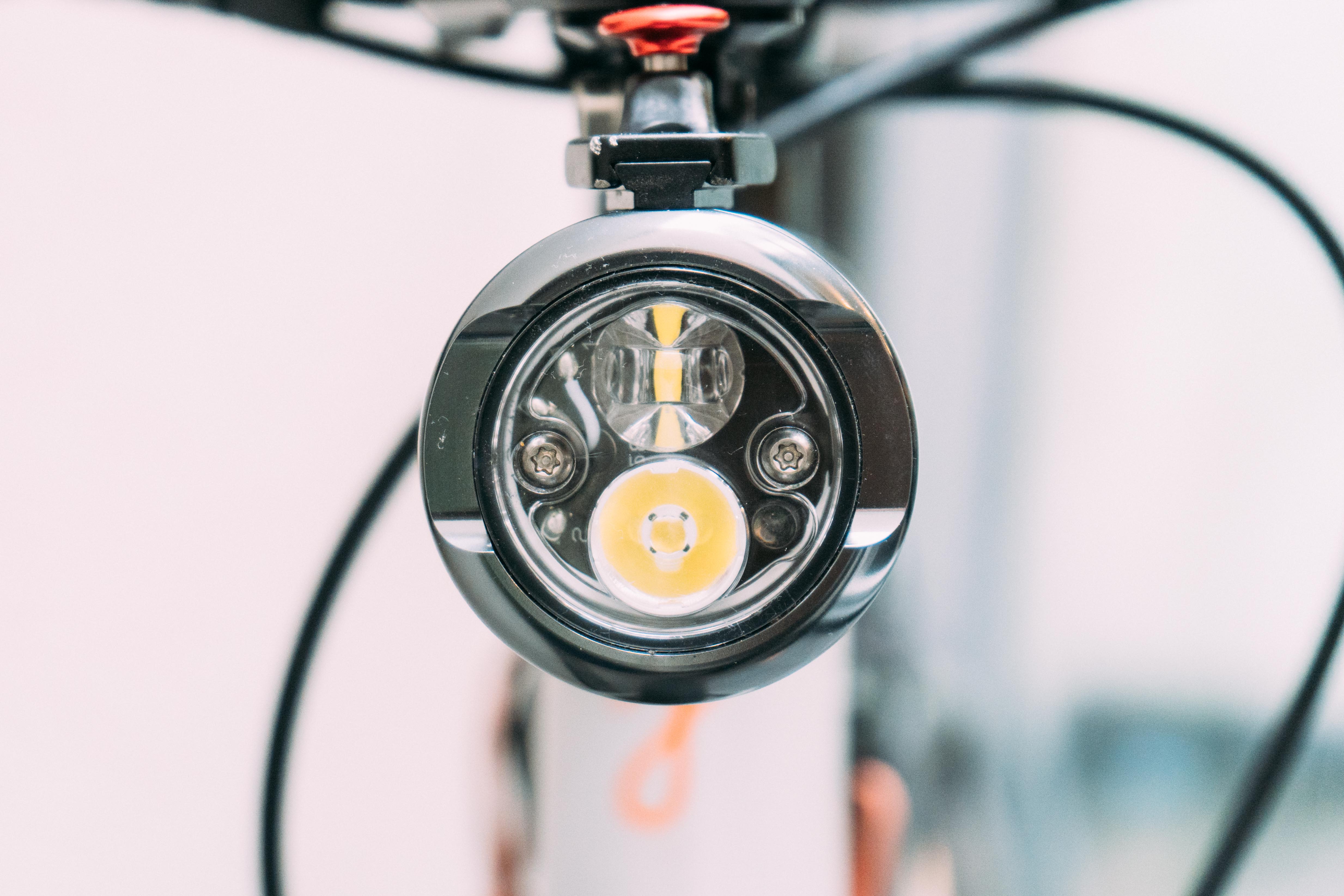
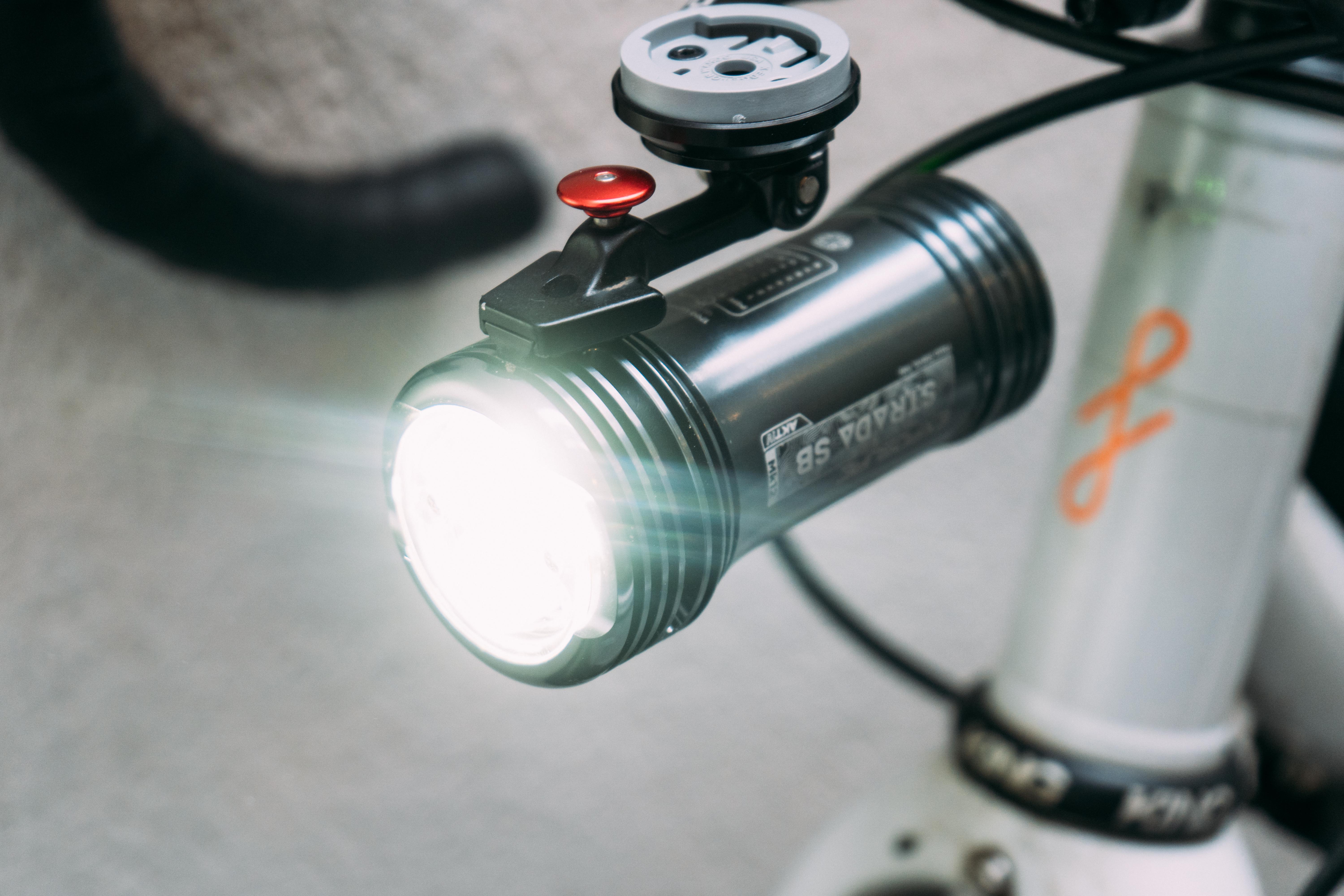
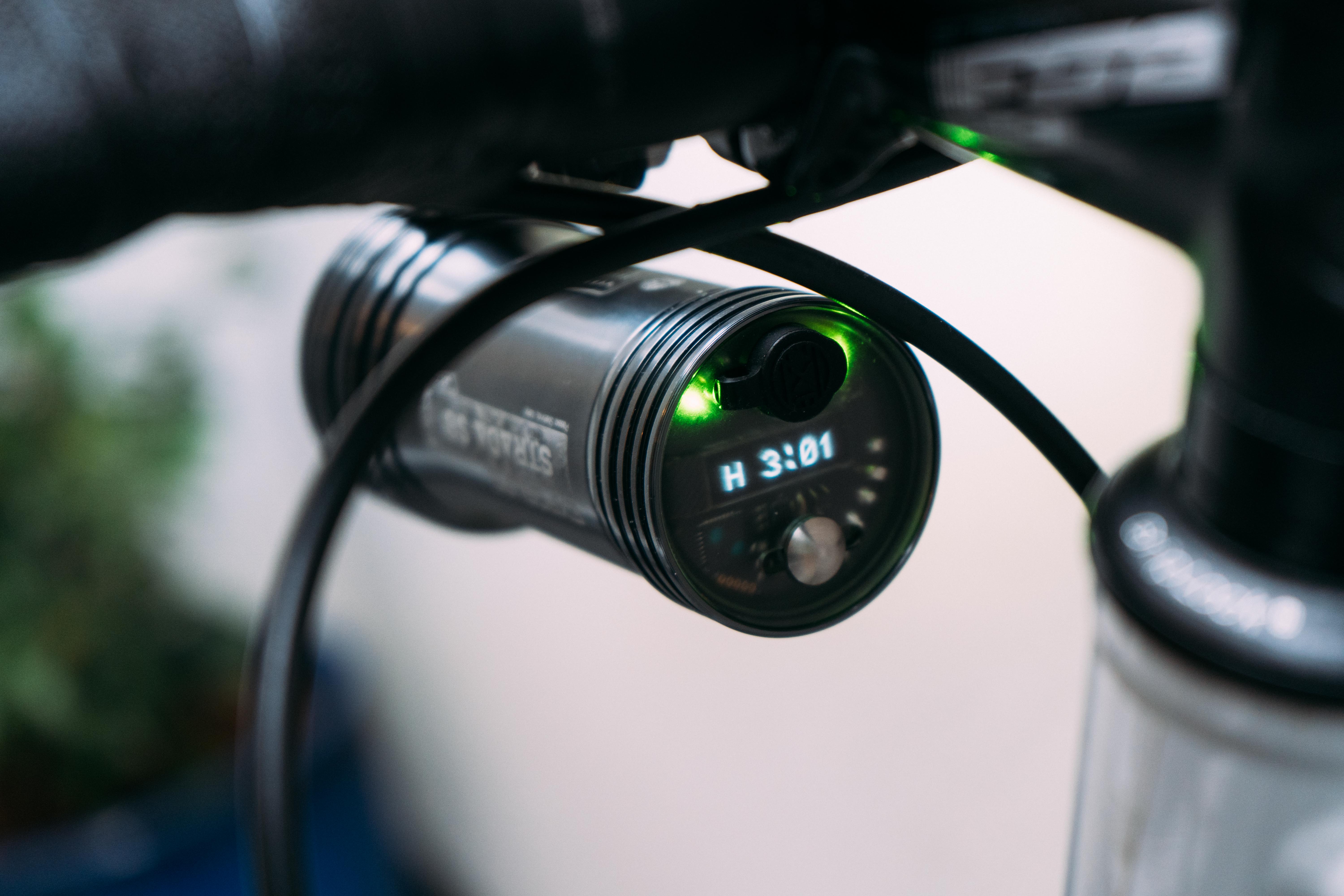
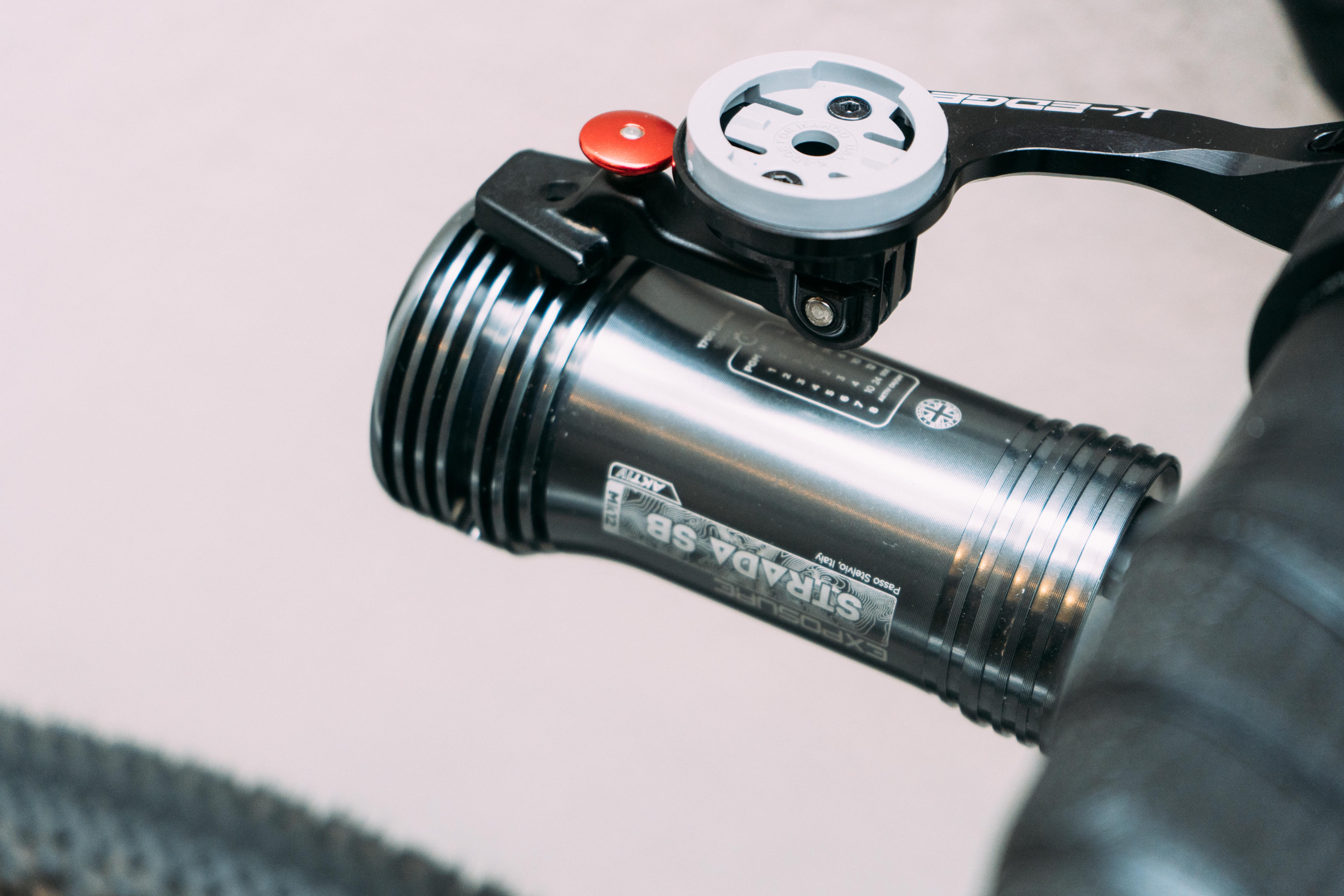
Specifications
Reasons to buy
Reasons to avoid
✅ You want the ultimate road light: This has all the bells and whistles you could ask for. The beam is flat, shaped for road riding, and auto-dims when sensing an oncoming car's headlights.
✅ You want bombproof quality: I used a plastic mount to sling mine beneath my computer, which snapped at 65kmh. The light barrelled down the road, and was still working fine when I found it. This thing is unkillable.
❌ You're a weight weenie: At 258g it's a bit of a tank, mostly because of its large internal battery. The Exposure Race light (number 5) is a slightly lighter alternative if you can stomach the price.
❌ You want to charge everything with USB-C: Exposure lights all use a brand-specific charging setup, with a big included charger. It's clunky, and feels a little out of step with modern trends. If this is an issue and you can handle the shorter battery and reduced brightness, then the Outbound Detour is a good bet.
If you want the ultimate, all-singing, all-dancing front road light then this is where you should be spending your money. The Exposure Strada is a wonderful light and I used it all winter last year and it didn't skip a beat. Yes, it's expensive, and yes, there is a learning curve, but it's got so much going for it that you can look past those things if your pockets are deep enough.
The beam is extremely well shaped. It doesn't have quite the same hard upper cutoff as the Outbound Lighting Detour, but in order to not blind drivers it has a party trick up its sleeve. Switch on 'Aktiv' mode and the light senses oncoming headlights and automatically dips the beam until they have passed. It's much like swapping from full beam to dipped in your car, if you have one, and is utterly seamless. You can switch it off, but I couldn't think of a reason to.
The initial setup is a bit of a faff, whereby you have to select from a list of 7 options of brightness groupings, each option containing three different brightnesses that you can cycle between, either through the bottom on the rear or via a wired-in button you can mount to your bars, but once you have your desired setup it's about as fit-and-forget as you can get.
It's hefty, but if, like me, you're fitting it to a winter bike with mudguards and a frame pump and aren't using it for a hill climb it isn't really an issue. The weight does mean I strongly recommend you use a metal computer mount if you're slinging it beneath your computer. I initially fitted it under the plastic mount that came with my Hammerhead Karoo 2, which snapped on a descent and sent the light and computer tumbling down the road at warp speed. The light was still working when I found it, despite the massive impact it had taken, a testament to the brilliant build quality of these things.
The massive internal battery is what allows this light to have such enormous battery life, and if this light wasn't also the 'best overall' it would certainly be down as 'best battery life'. It is about as good as a bike light gets, and only really gets market down for the size and weight (which are necessary for its performance) and the high RRP.
If you want more details then head to our Exposure Strada Mk11 SB AkTIV review. It is the previous model, but the changes to the Mk12 are very minor so the majority of it is still relevant.
Best budget front bike light
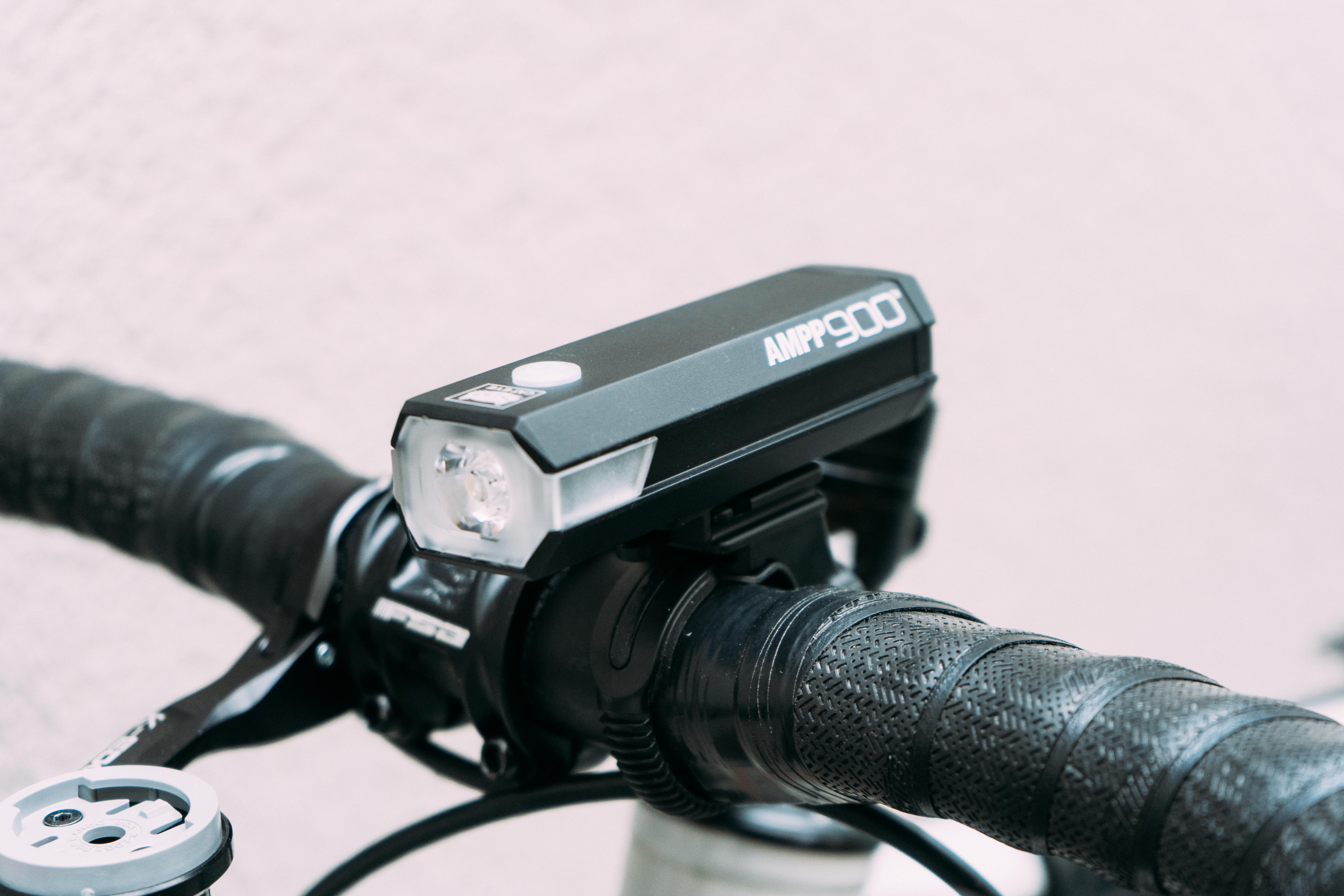
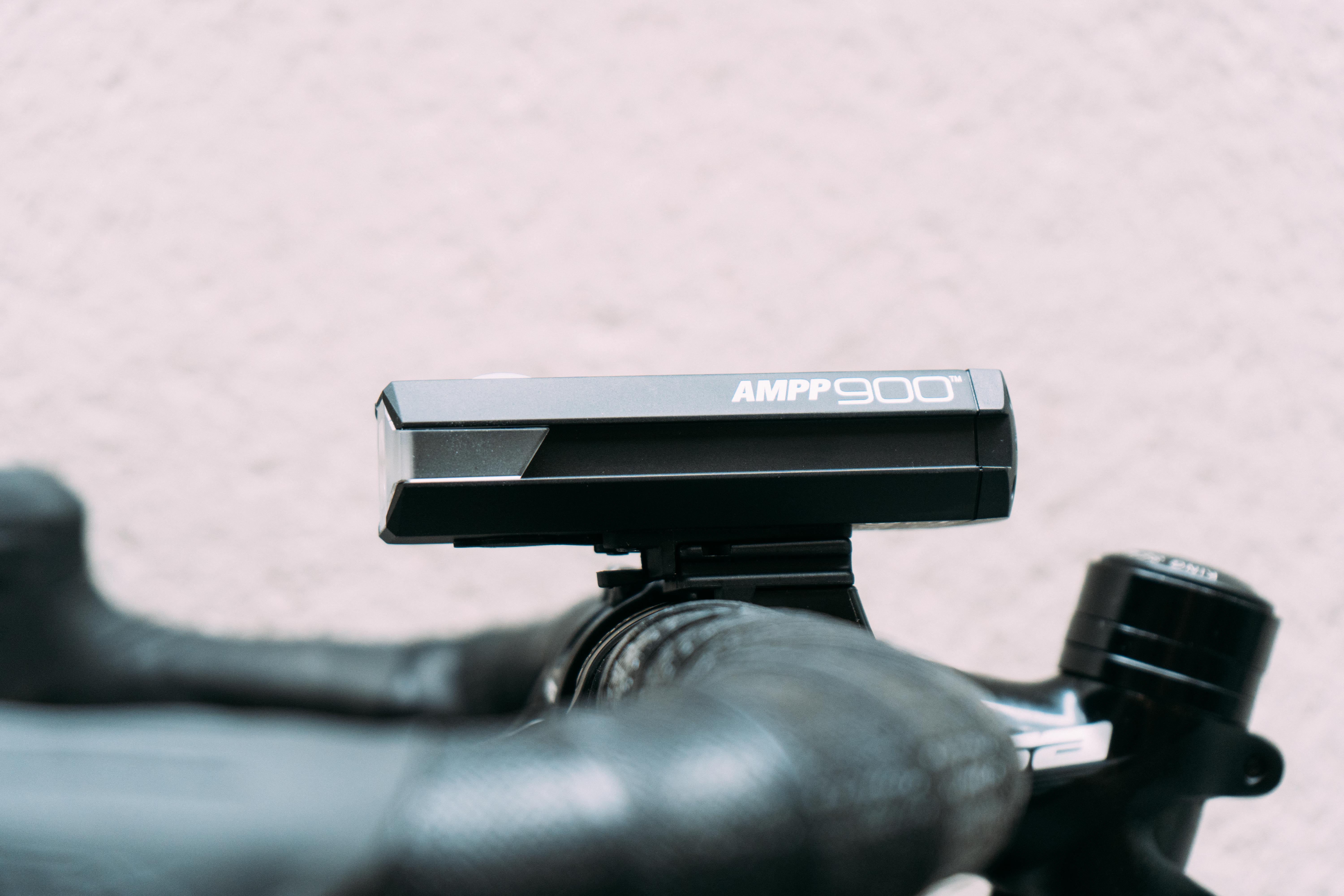
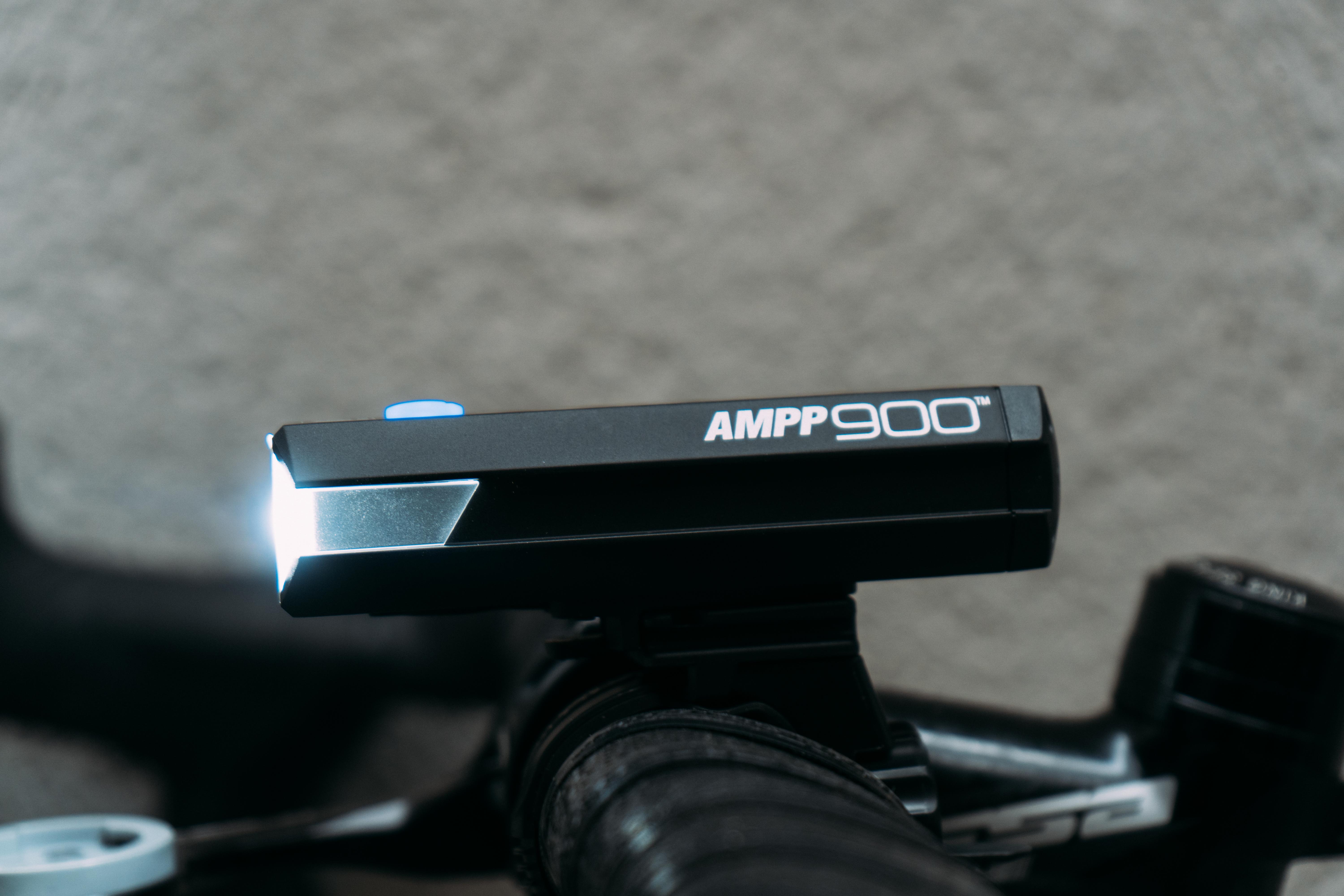
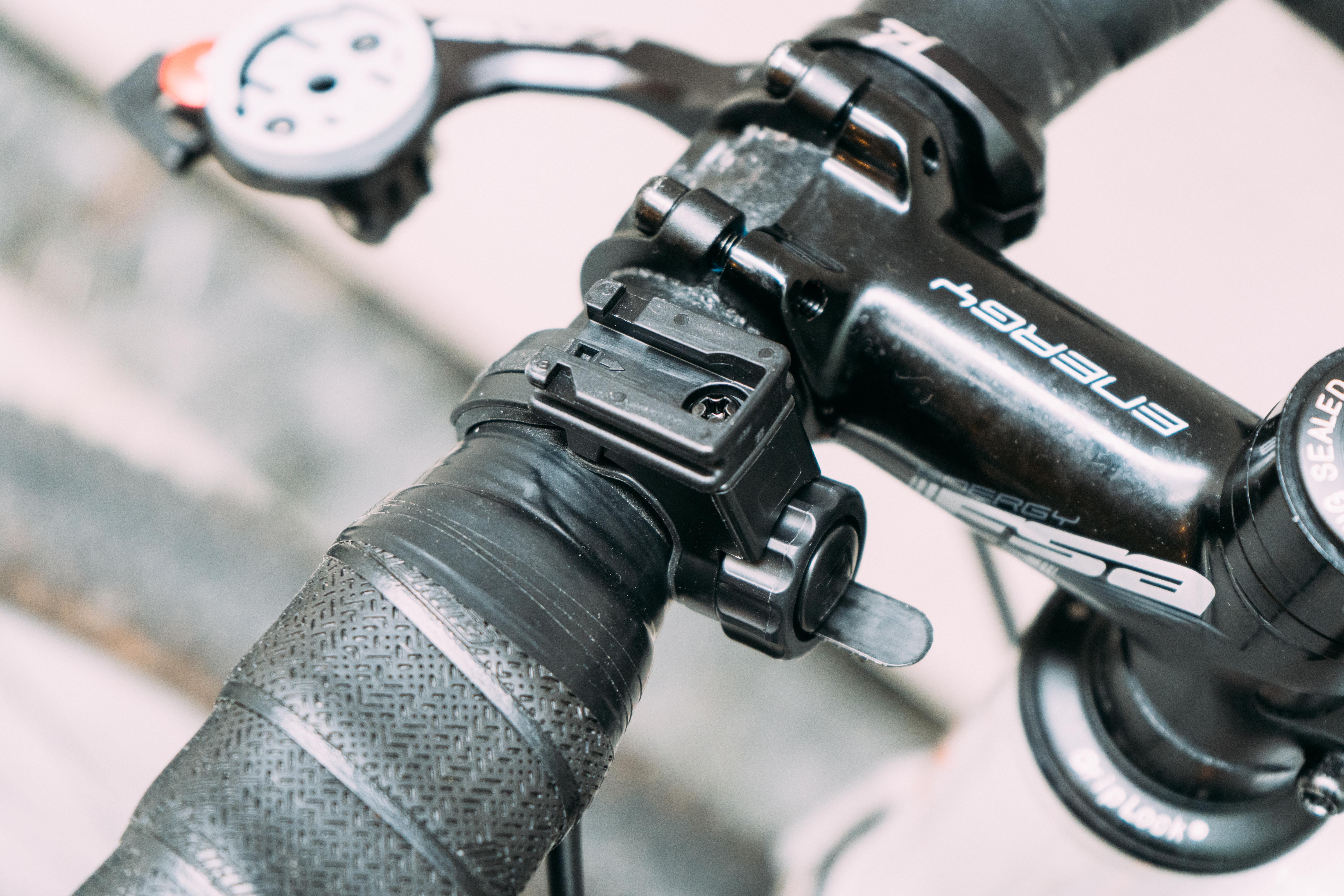
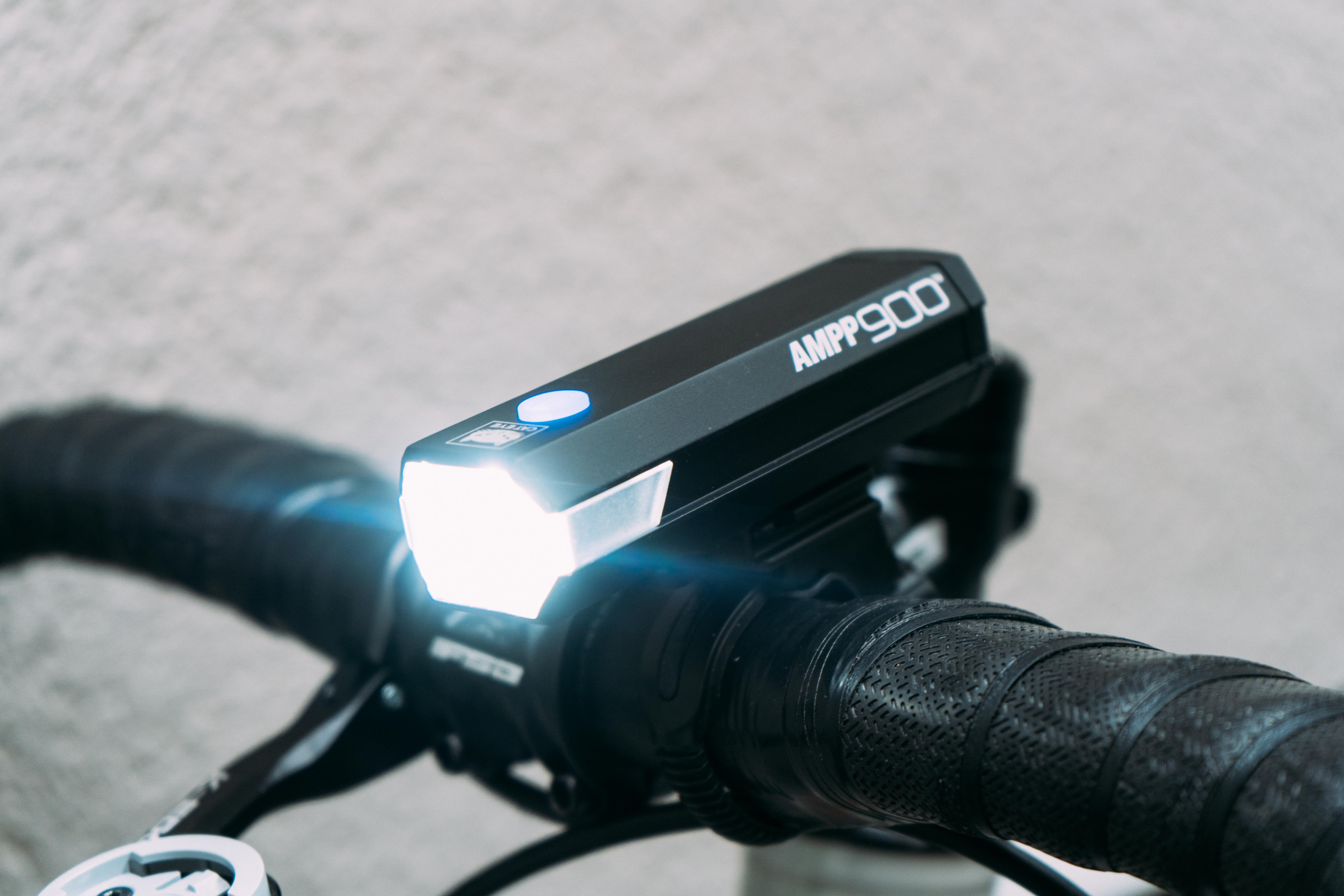
Specifications
Reasons to buy
Reasons to avoid
✅ You want a do-it-all solution: 900 lumens is about the sweet spot for lighting, meaning you can commute happily and still use it on unlit roads to see by. This is it's maximum output though, so it can't hold it for long.
✅ You don't want to spend a fortune: It's not the cheapest, and if you are just needing a light in order to be seen while commuting then you can go cheaper, but this is the best budget option that'll do most things well enough.
❌ You want added features: There aren't a tonne of modes like you get with Exposure lights, or any tech to dim the beam. Three brightness and two flashing modes only.
❌ You want to quickly swap it between bikes: If you're commuting and want to remove the whole bracket you have to unscrew the dial all the way to remove it. It's fiddly and more time-consuming than a silicone strap, but the mount is universal and can pivot. Look to the Knog Blinder if this is a dealbreaker for you.
The AMPP900 is the successor to the venerable old Volt 800, a light I bought around a decade ago and is still going to this day, despite the light itself being discontinued. The AMPP900 takes a lot of what I loved about the Volt 800 and builds upon it.
The brightness, 900 lumens at its brightest with three brightnesses and two flashing modes, is just about right to fulfil commuter duties without being overkill, whilst still just about being bright enough for forays into proper night time riding. I'm not going to pretend you're going to have as well-lit a time as you will with more premium, brighter options, but if your night riding involves a dark commute and the odd pre-dawn or post-dusk jaunt in the winter then it's perfectly adequate.
The old Volt used a replaceable battery. I never needed to replace mine, and it did seem an odd thing to build into a light. The AMPP900 is a self-contained unit and has made the switch to USB-C. One thing that has also improved in this regard is the space around the charging port recess. On old models, it was a little small meaning only certain leads would fit, but here it's dead roomy.
You can, with an adapter, mount it under a computer using a GoPro style slot mount, but I find it's a light best suited to being on the bars. The universal FlexTight bracket has enough capacity to cope with round bars to proper deep winged aero bars, and has a pivot point meaning if your bars have backsweep you can keep the light pointing forwards. You could even mount it sideways on a fork blade if the mood took you. I found the little rubber insert a bit prone to falling out, so keep an eye on it.
There is an 800-lumen version that's a bit cheaper, and if you're only commuting then you can get away with the AMPP500, a worthy competitor for the Knog Blinder 600 for the best commuter option.
One thing I did fall foul of is that, when running it at full power, it won't automatically swap to a lower intensity beam when the battery level drops; it'll just cut out, so remember to keep it charged. to find out all the other key details from my time with this light then have a read of my Cateye AMPP900 review.
Best front bike light for beam shape
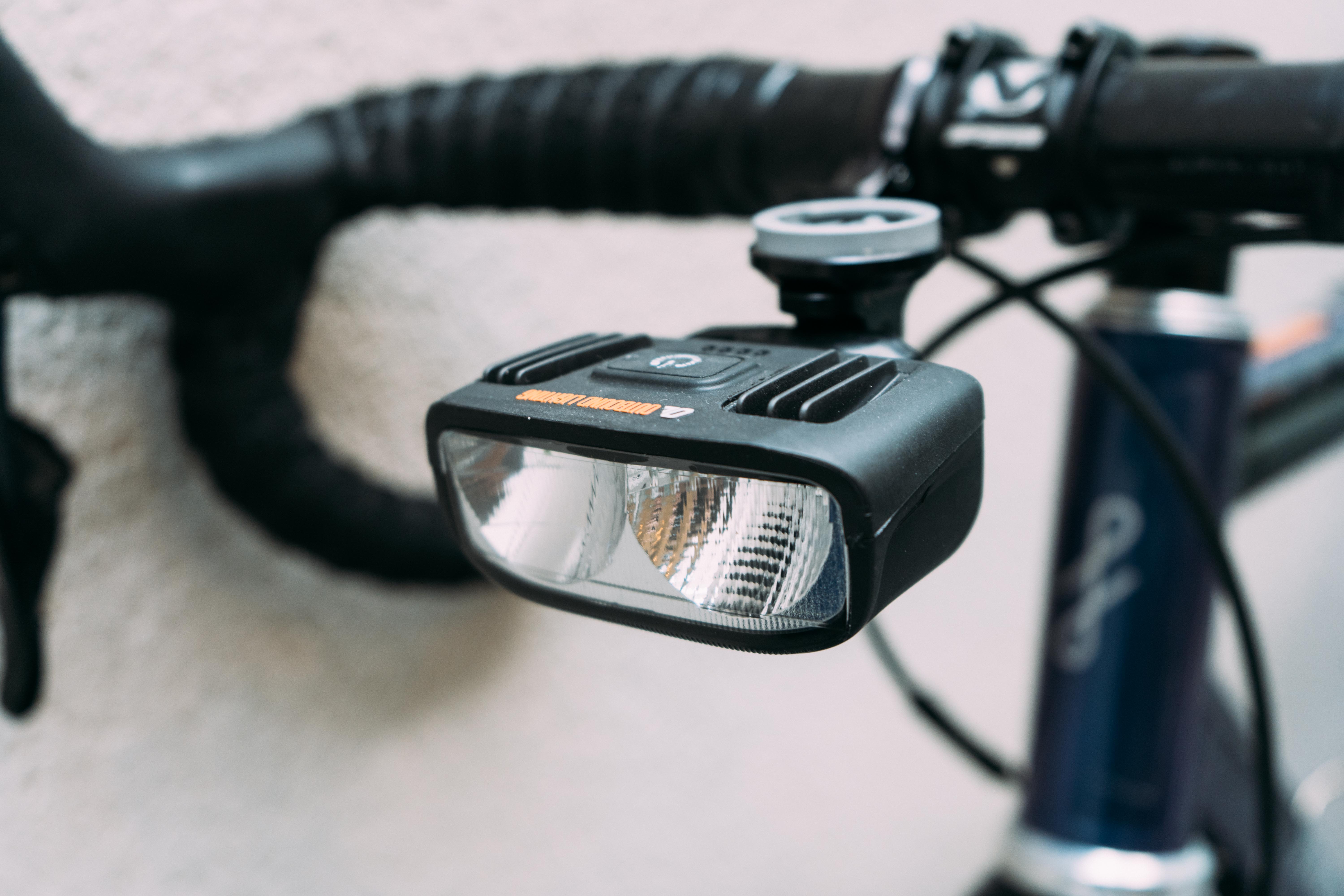
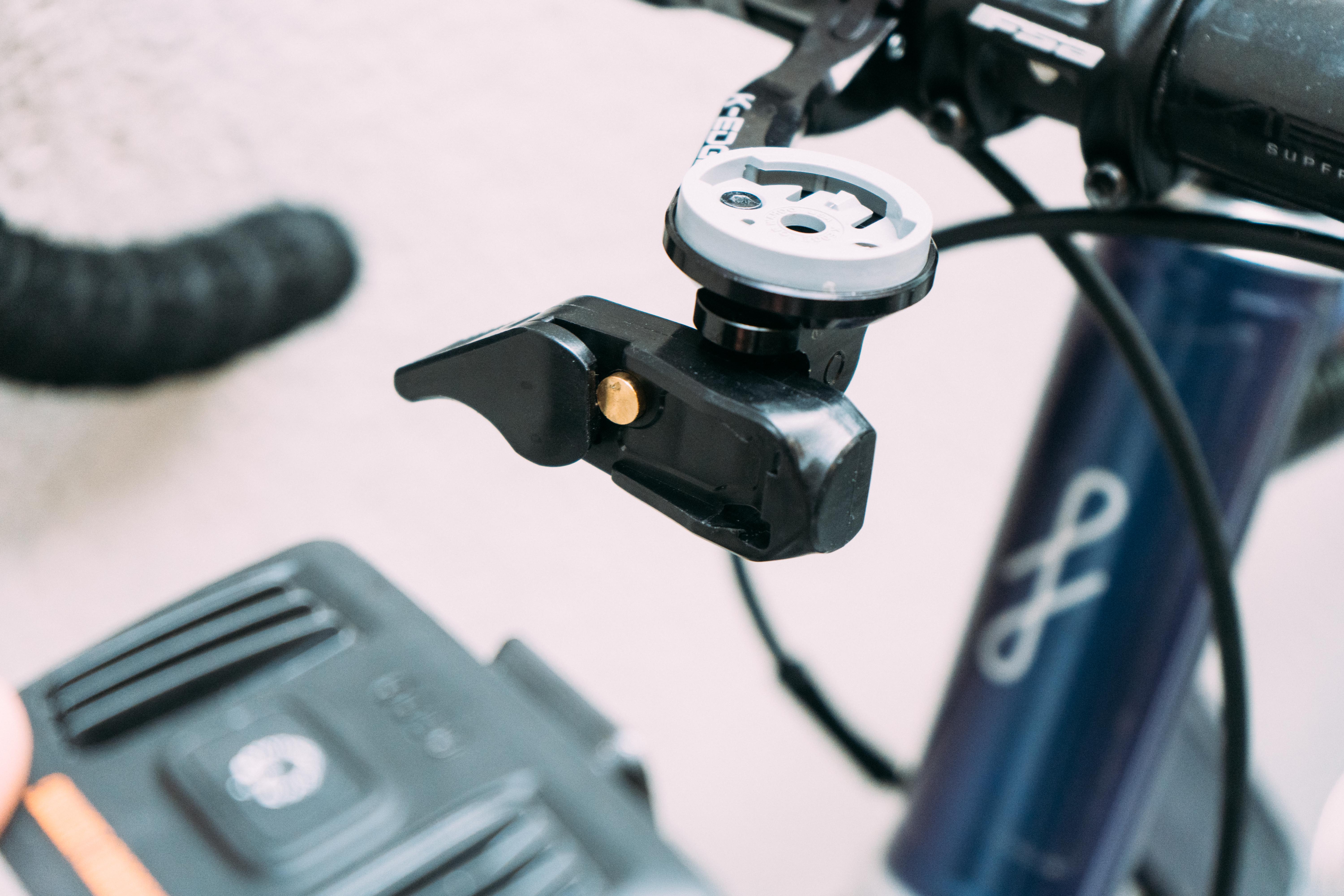
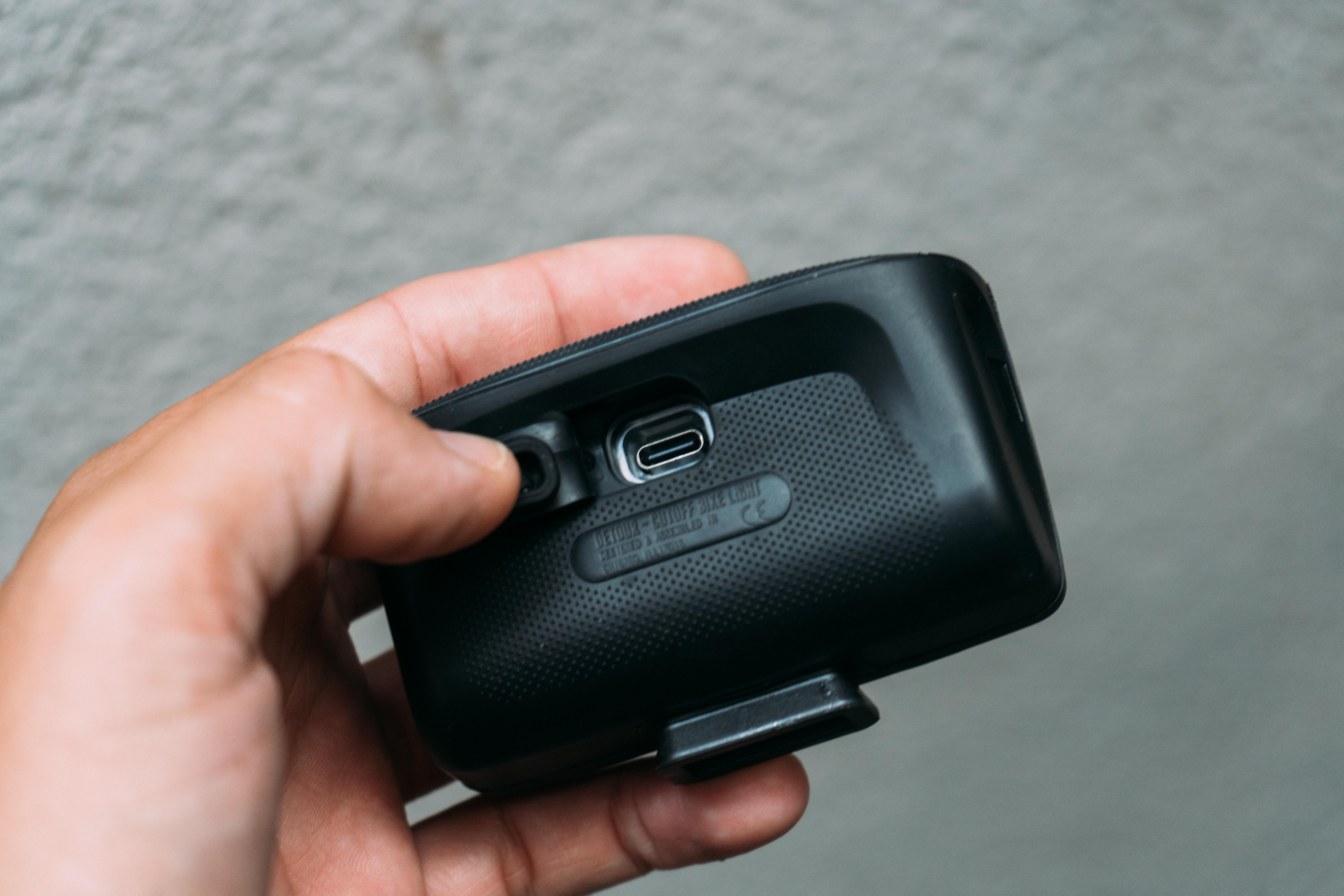
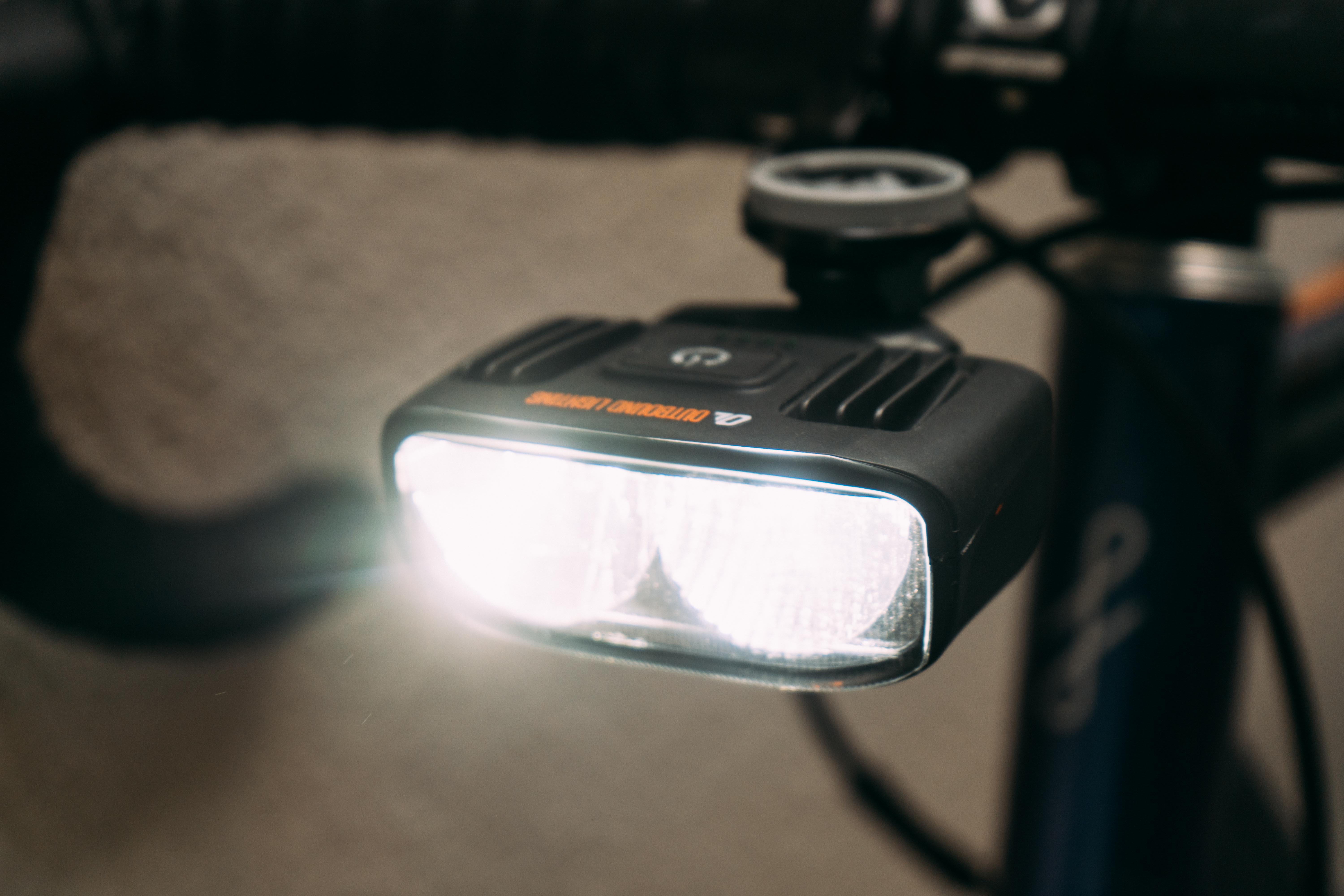
Specifications
Reasons to buy
Reasons to avoid
✅ You want a shaped beam: The light is cutoff at the top, meaning everything above the level of the light doesn't get blinded. This helps pedestrians on shared paths, but more importantly it means drivers aren't blinded by you.
✅ You want to charge while riding: Included in the box is a weatherproof USB-C cable, meaning you can run the light off a power bank even in the rain, perfect for through-the-night epics.
❌ You want a sleek setup: It's a bit of a beast, and especially mounted below a computer it's extremely bulbous and prominent. Exposure's lights mount similarly securely but in a sleeker way.
❌ You're doing technical off-road riding: It is billed as for road/gravel, but the beam shape means you may struggle on anything beyond fire roads. Look to the Exposure Race if this is a dealbreaker.
The Outbound Lighting Detour is visibly a bit of a departure from your more standard, tube shaped bike lights. It's wider, with two giant hemisphere reflectors and a prominent, almost frowning brow. One big button set between sets of cooling fins on the top controls things, cycling through the four main beam modes and two strobe patterns.
The slightly odd visuals are a result of the Detour's engineering to create a 'shaped beam'. Effectively instead of having the LEDs pointing directly outwards creating a cone of light, the diodes point downwards within the body of the light, and are shaped by a pair of conical reflectors to project the beam outwards. This means that the upper half of the beam is truncated, meaning everything above the top edge of the light body (assuming it is mounted horizontally) isn't blinded. This means pedestrians don't get annoyed, and it means cars can see you, but aren't so blinded by your light that they can't see anything else.
I found the build quality to be excellent, and while having a rubberised body is unusual, it makes it easier to handle. The bar mount is well designed and secure, and enables you to mount the detour above, inline, or below your bars, but I opted to sling it beneath my bike computer. In this orientation it's more out of the way, but I do think it looks a little bulbous compared to most other options on the market. Still, I do think aesthetics are a secondary consideration to how well it actually lights.
The shaped beam means you aren't 'wasting' lumens lighting up things above your eyeline, so you can get away with running it on a lower power than you perhaps would with a standard conical beam, which aids the battery life even more.
Should you ever run low on power - say you are a masochist and regularly embark on through-the-night epics - you can plug the Detour into a power bank and charge it up while it is still in use. The cable included creates a weather-sealed connection, but this does still rely on you having a way of waterproofing the power bank if it does rain.
In short, I think the Detour is an excellent do it all option. The price is affordable for what is on offer. The only real drawback I'd say is that it isn't really suitable for technical off-road riding. The cutoff beam is fine on fire roads, but in tricky terrain you're going to want a classic cone shape so you can see if there are trees/rocks/cliff edges coming up fast.
One final party trick up the Detour's sleeve is the default 'Adaptive' mode. When you turn the light on it'll begin on full power, but then slowly reduce the brightness over the course of half an hour as your eyes get used to the darkness, improving the battery life in the process.
For all the ins and outs we have a full review of the Outbound Detour that should help answer any other questions you might have.
Best front bike light for commuters
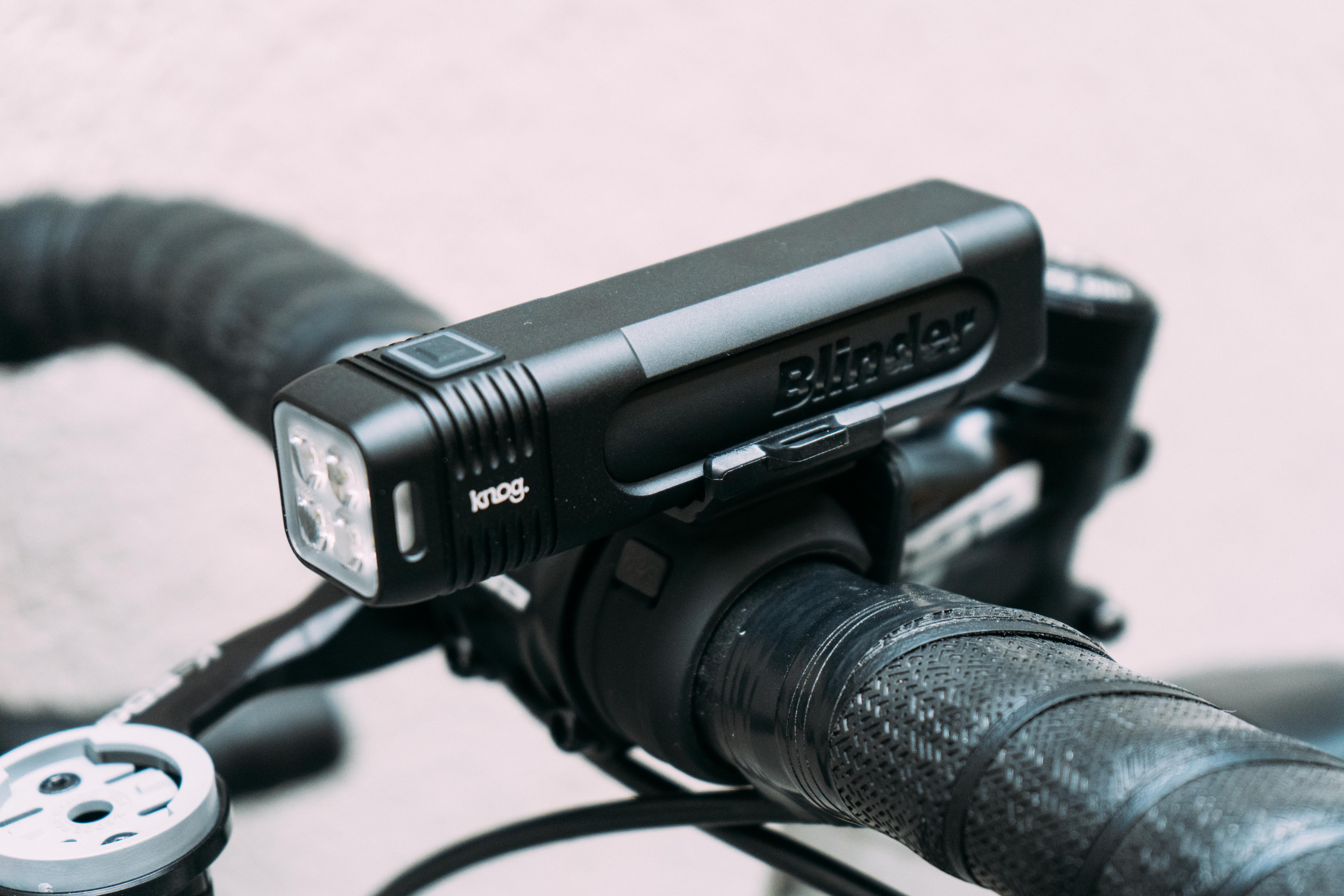
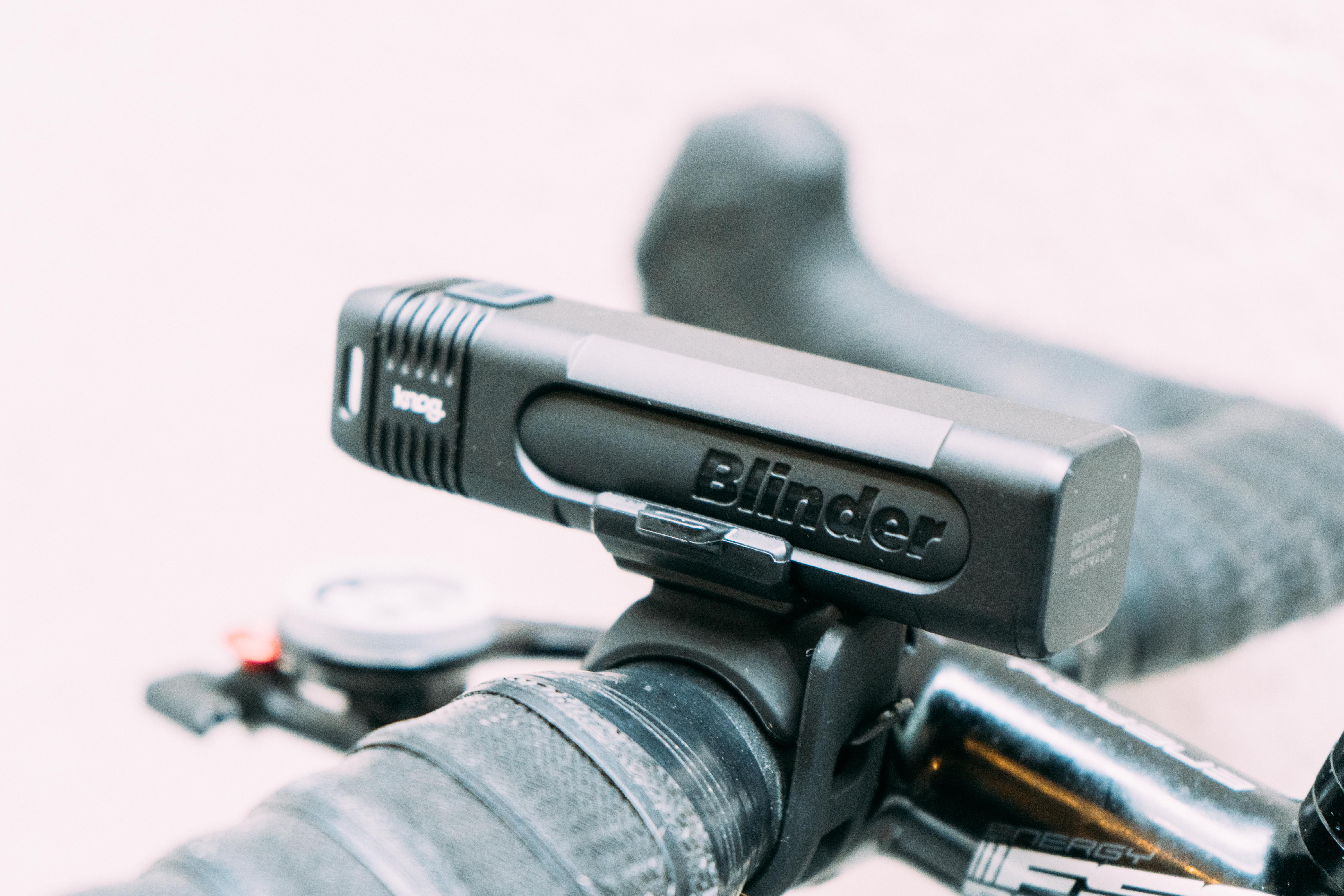
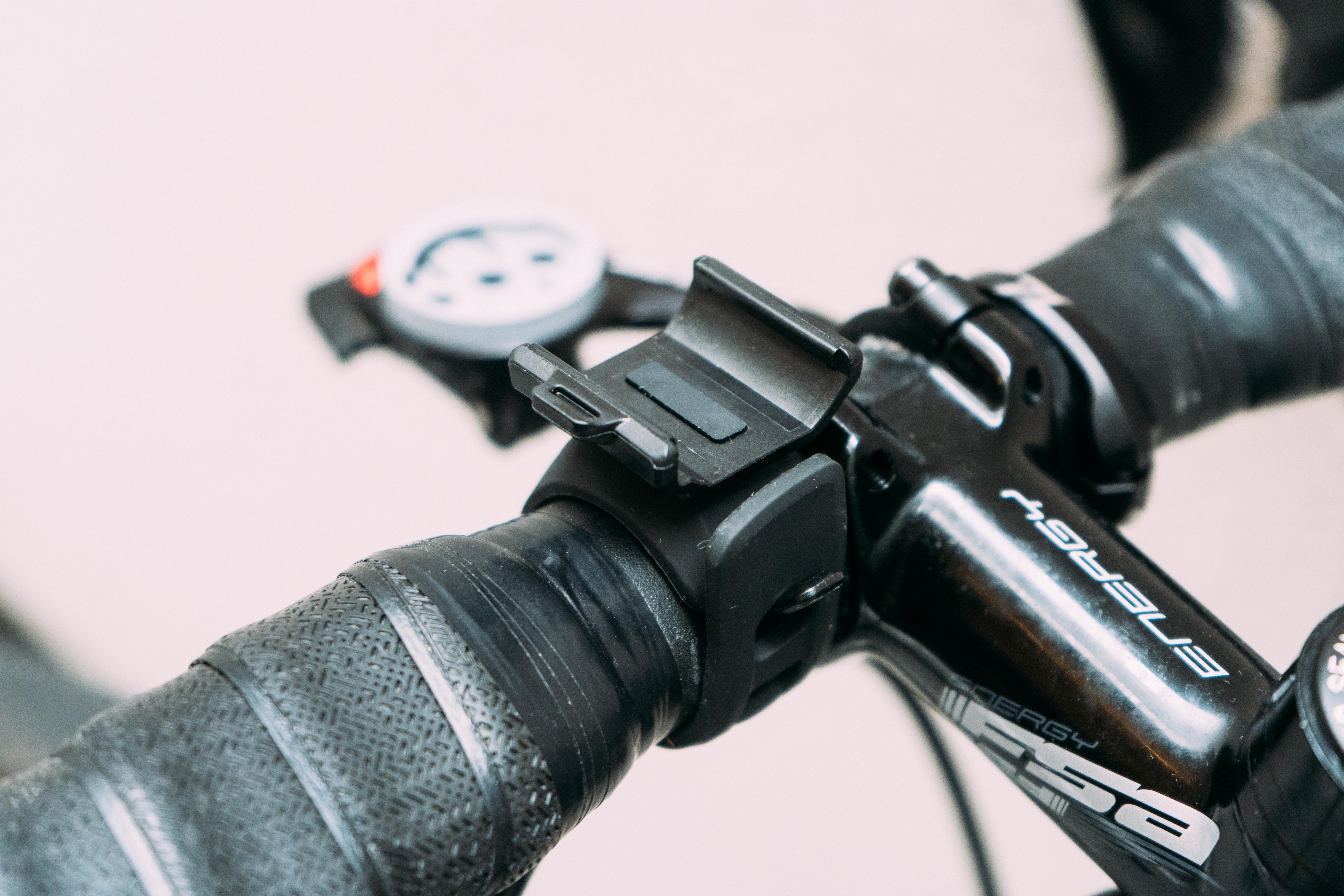
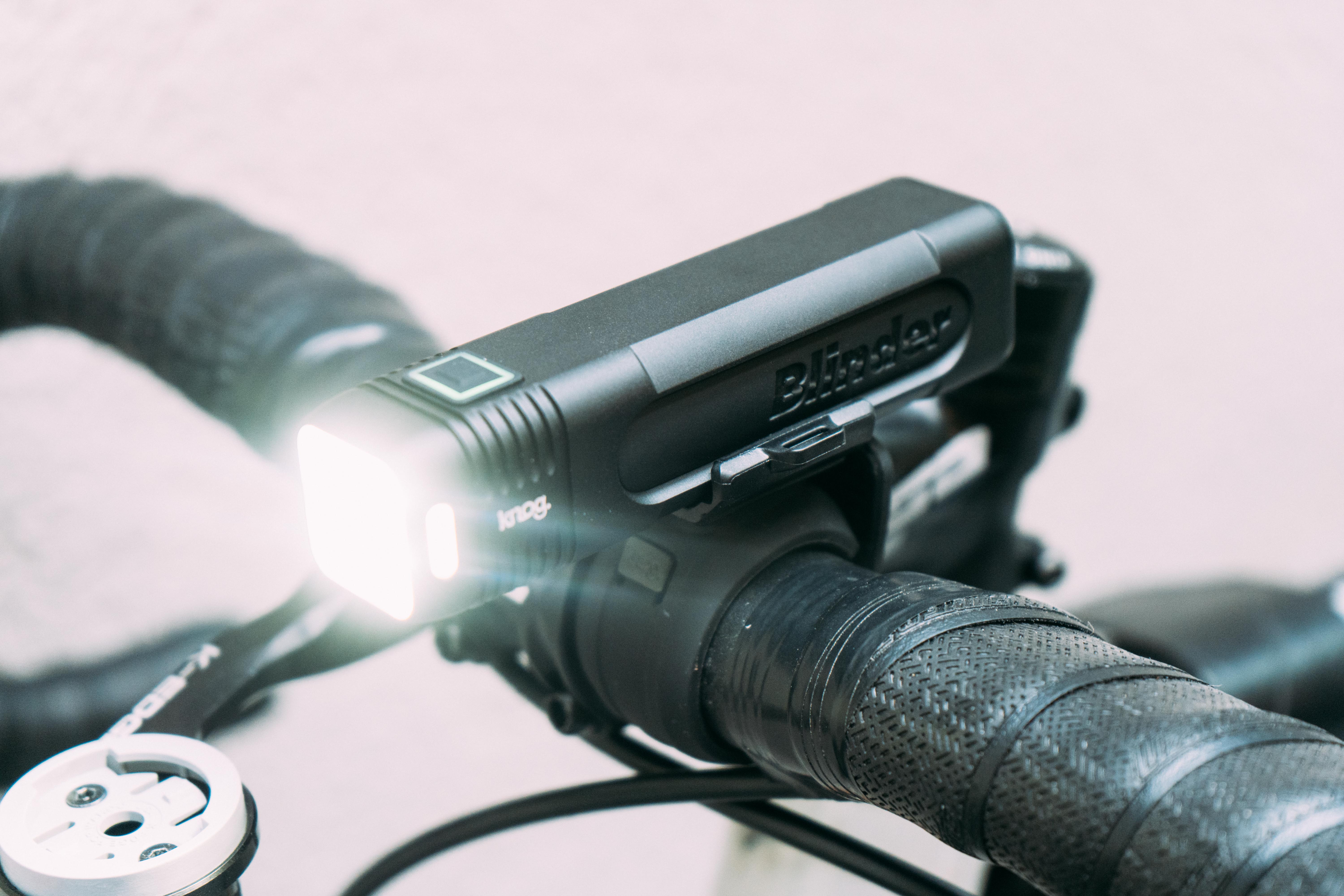
4. Knog Blinder Pro 600
Specifications
Reasons to buy
Reasons to avoid
✅ You ride only in the city: 600 lumens is perfectly adequate for being seen if you've got all the ambient light of a metropolis lighting your way too.
✅ You want to mount it under a computer: It includes a quick-release mount for under a computer, so you could have it on your commuter Mon-Fri, and pop it on your road bike under a computer for the weekend quick as a flash.
❌ You're doing long road rides at night: 600 lumens is just about enough to see by at night on unlit roads, but as this is the max output you're going to burn through the battery really quickly. The Exposure Strada's big battery life is your saviour if this is an issue.
❌ You want to mount it under a computer: While the more powerful Blinder 900 comes with a GoPro mount, the 600 only comes with a rubber strap, so it's on the bars only here.
Of all the lights I've had in for testing this one also wins the 'works best as a torch' award. Unclip it from the mount and it is basically a wee little handheld torch, which is surprisingly handy. Yes, the others work for that purpose too, but not so well.
Anyway, this isn't Torch Weekly or some such publication. The Knog Blinder Pro 600 ticks all the boxes for a great commuter light. the 600 lumen brightness is enough to keep absent minded taxi drivers paying attention, but not so bright you're going to blind anyone coming towards you.
The mount is easy-on and easy-off, a lot faster than the AMPP900 for example, and you can remove the light from the mount just by pulling it off with a click. It'll mount upside down in the mount if you want to sling it under your bars, but unlike the GoPro mount that comes with the brighter Blinder Pro 900 there is no cam lock on the bracket so I'd stick to having it up top if I were you.
You can get a GoPro mount from Knog directly if you want to sling it beneath your computer for a very neat setup, and I've done this on more racy bikes when I want to use it as a daytime running light when out in the countryside. It does have a tendency to slide forwards or backwards in the mount though, so I'm still in two minds about how I feel about having it suspended.
Best bike light for gravel
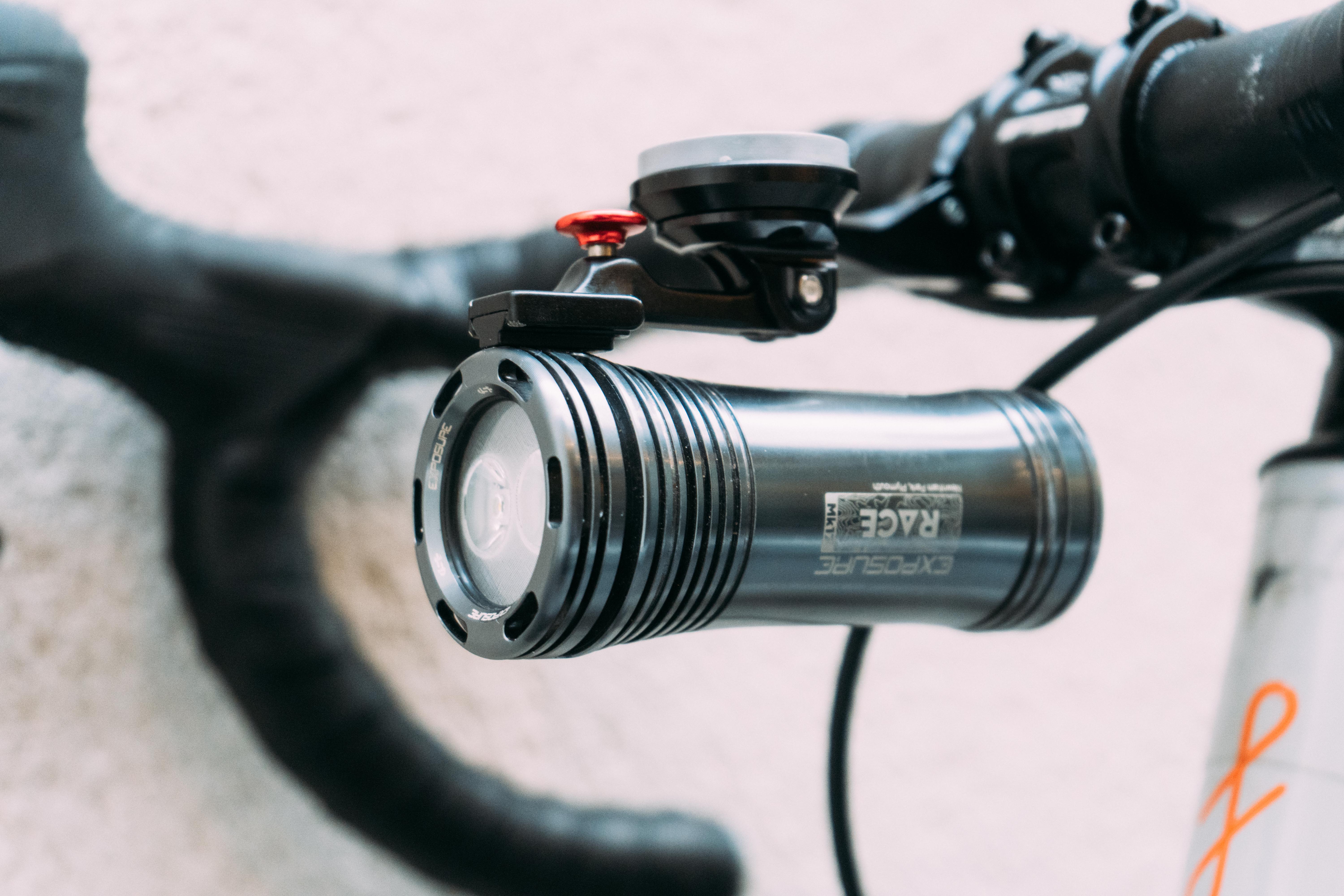
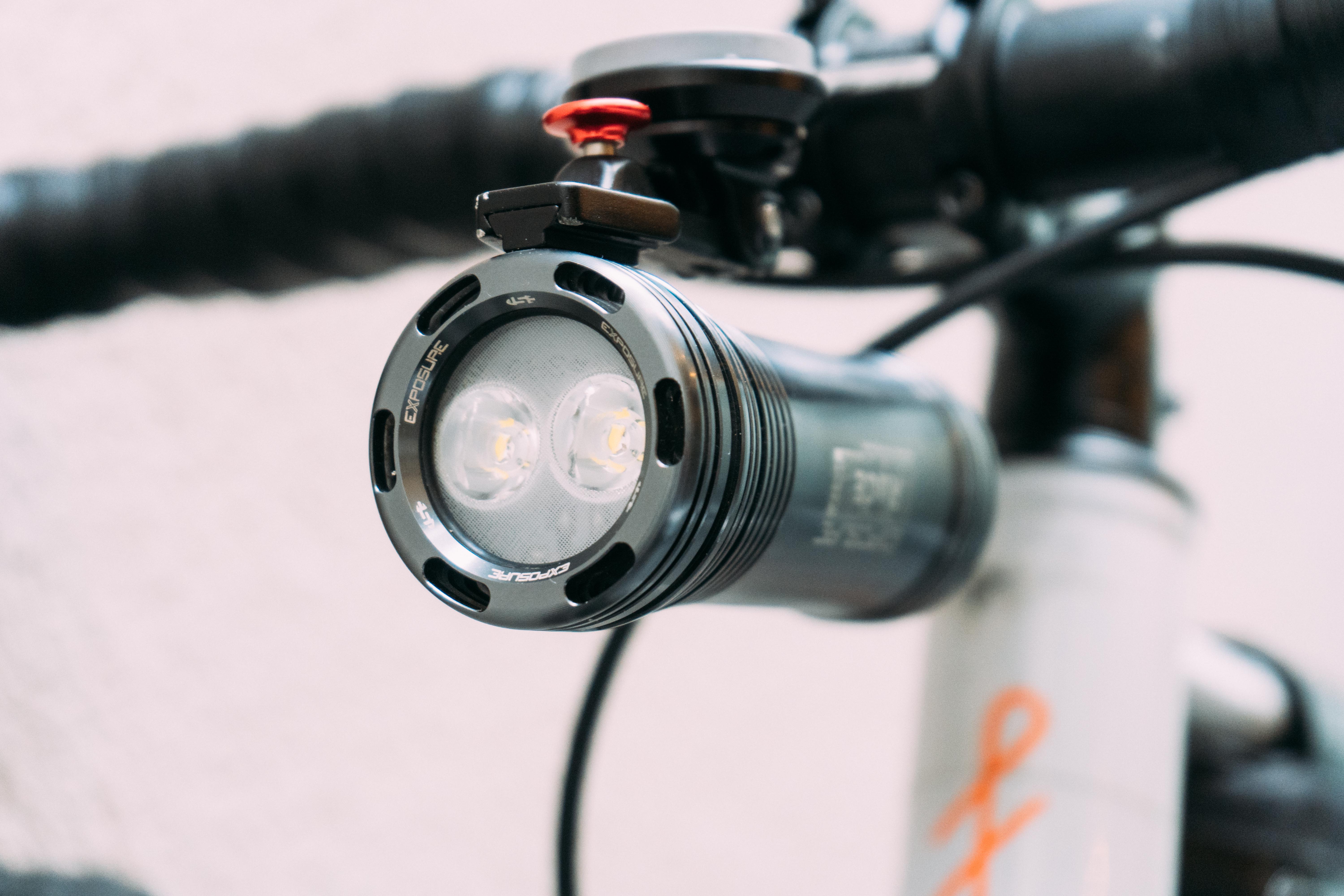
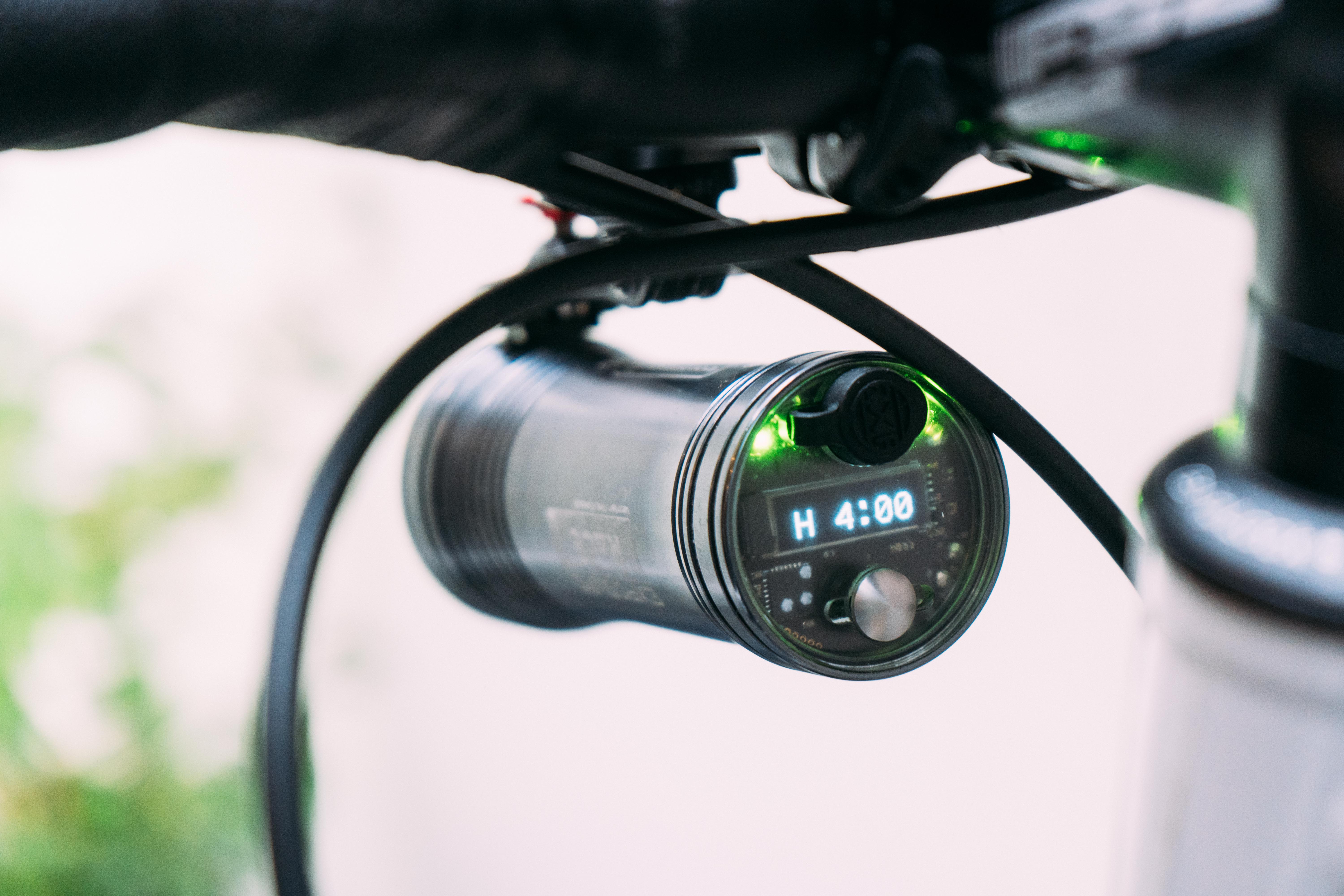
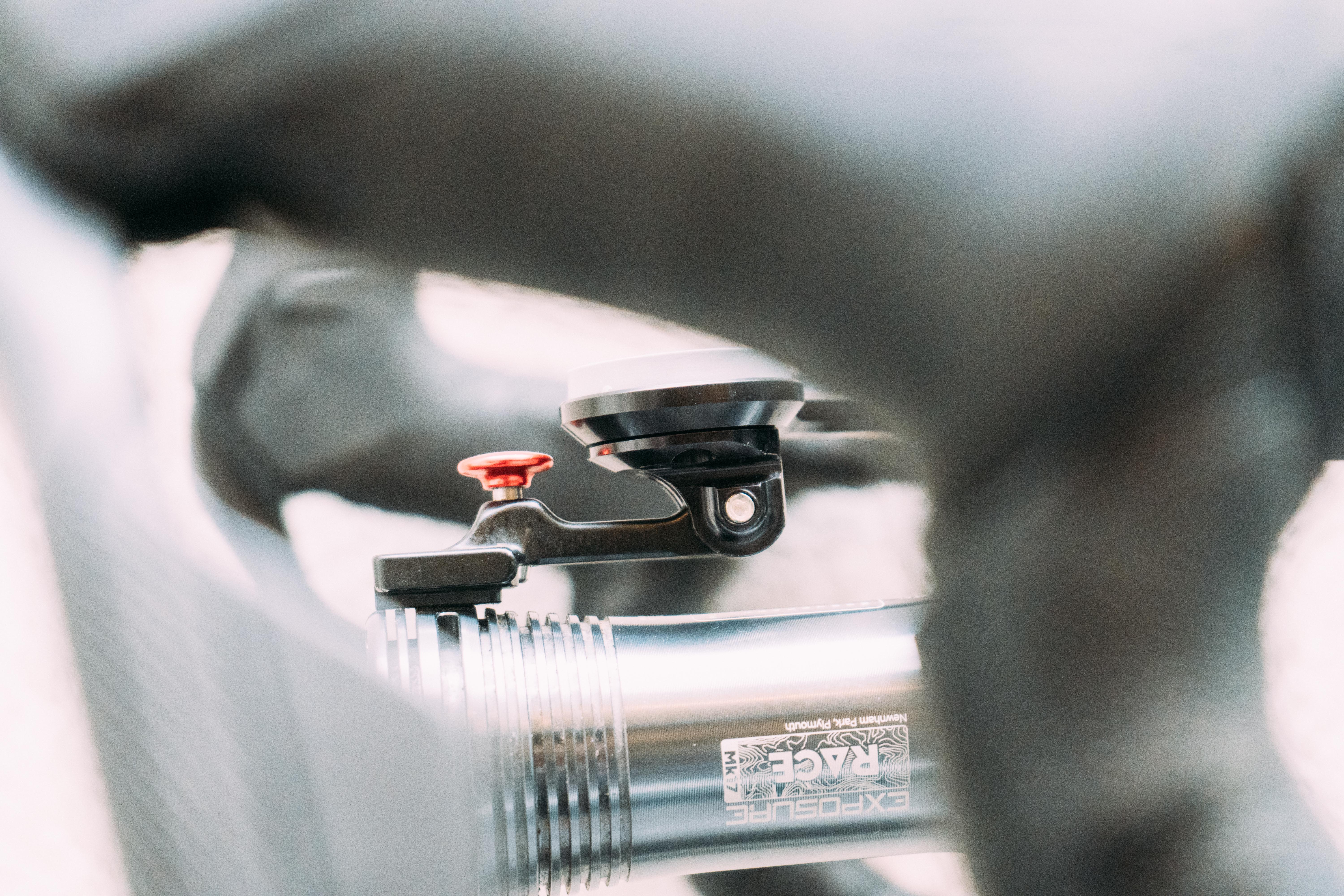
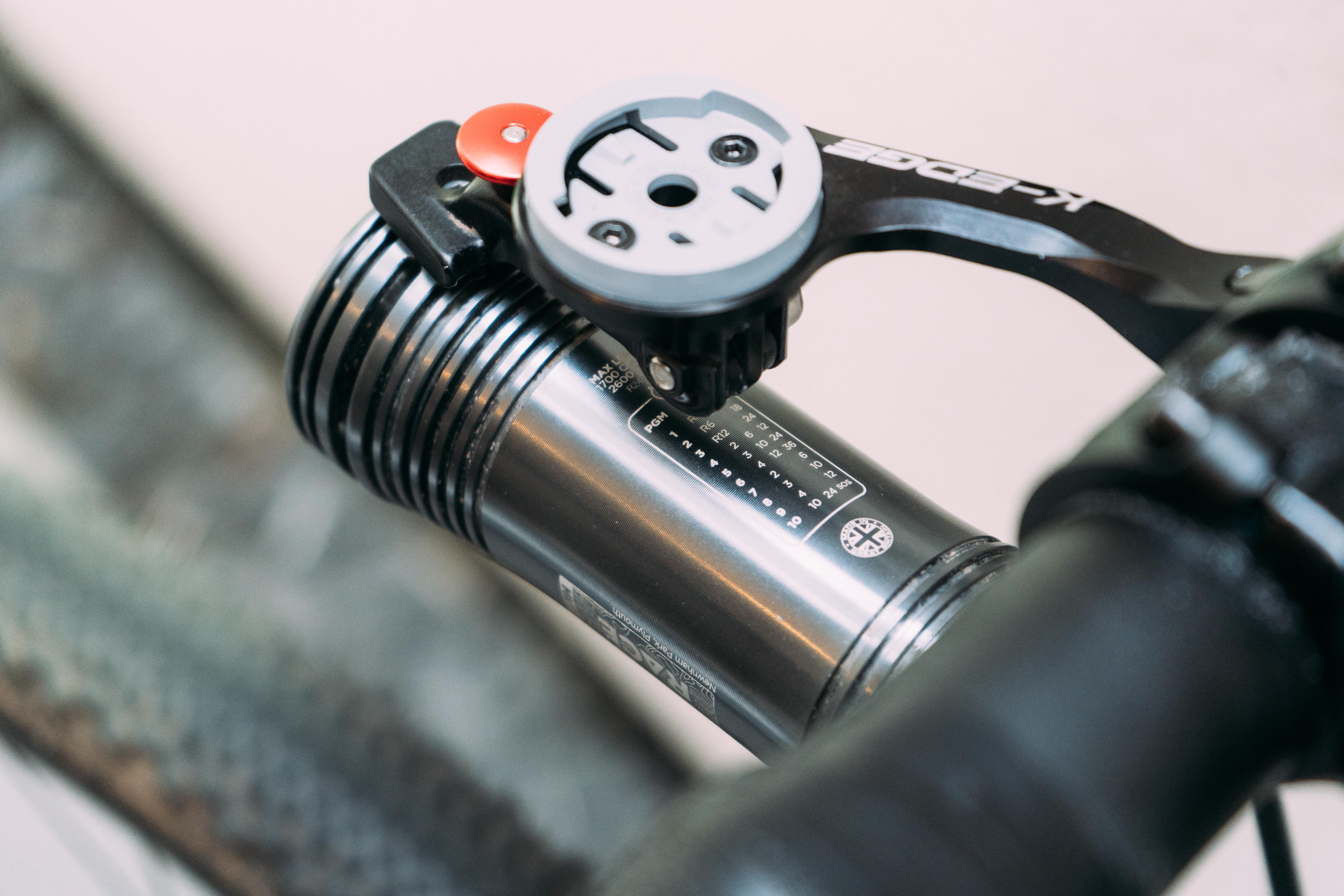
Specifications
Reasons to buy
Reasons to avoid
✅ You want a light that'll survive the apocalypse: Exposure's build quality is legendary. This is about as close to a buy it for life product as lighting gets.
✅ You're riding technical terrain at night: If you need more than 2,800 lumens you're probably far beyond riding gravel.
❌ You want a quick setup out of the box: The mounts can be fiddly to set up, and working out how to program exactly which range of brightnesses you want as available options on the go takes a bit of time.
❌ You want a cheap option: The Race has a higher RRP than many on this list, but if you're serious about off-road riding after hours then it's an investment worth making.
Much like with the Exposure Strada below there's a bit of a learning curve to get over for the Exposure Race. You use the single rear button to select from 10 different preselected brightness options. Once your program is selected you can then use the button on the fly to cycle between the options you want. Some have two brightness options, some have three, but each is etched onto the underside along with how it impacts the battery life.
What's really neat about the Race, which is technically an MTB light, is that the maximum lumens aren't available outside of program modes with 'Reflex' options. Basically if you have Reflex on the light increases the brightness as your speed increases, and it learns your top speed so is constantly adapting to your riding. This means that when you're picking up speed you haven't got to take your hands off the bars (hard to do on rough terrain) to switch modes, and it also conserves the battery versus just leaving it on high all the time.
For gravel I find 1,200 lumens (or the boosted Reflex mode) to be ample - if you need more then bigger MTB lights like the Monteer 12,000 are available for specialist applications - but be aware the light cone is unshaped, and when at its brightest can be quite dazzling for other road or trail users.
Another reason I really rate the Race for gravel is the mounts are absolute rock solid. The bar mounts are great, but even slung beneath a (full metal) out front computer mount there's never a worry of things coming loose or falling off. Everything is well engineered, and if you do cock up somehow as I did with the Strada the lights are so bombproof it'll likely be fine.
For a more thorough run down of why I think this is such a good light for gravel head to my Exposure Race review which expands on a lot of the points I've mentioned here.
Best front bike light for daytime running
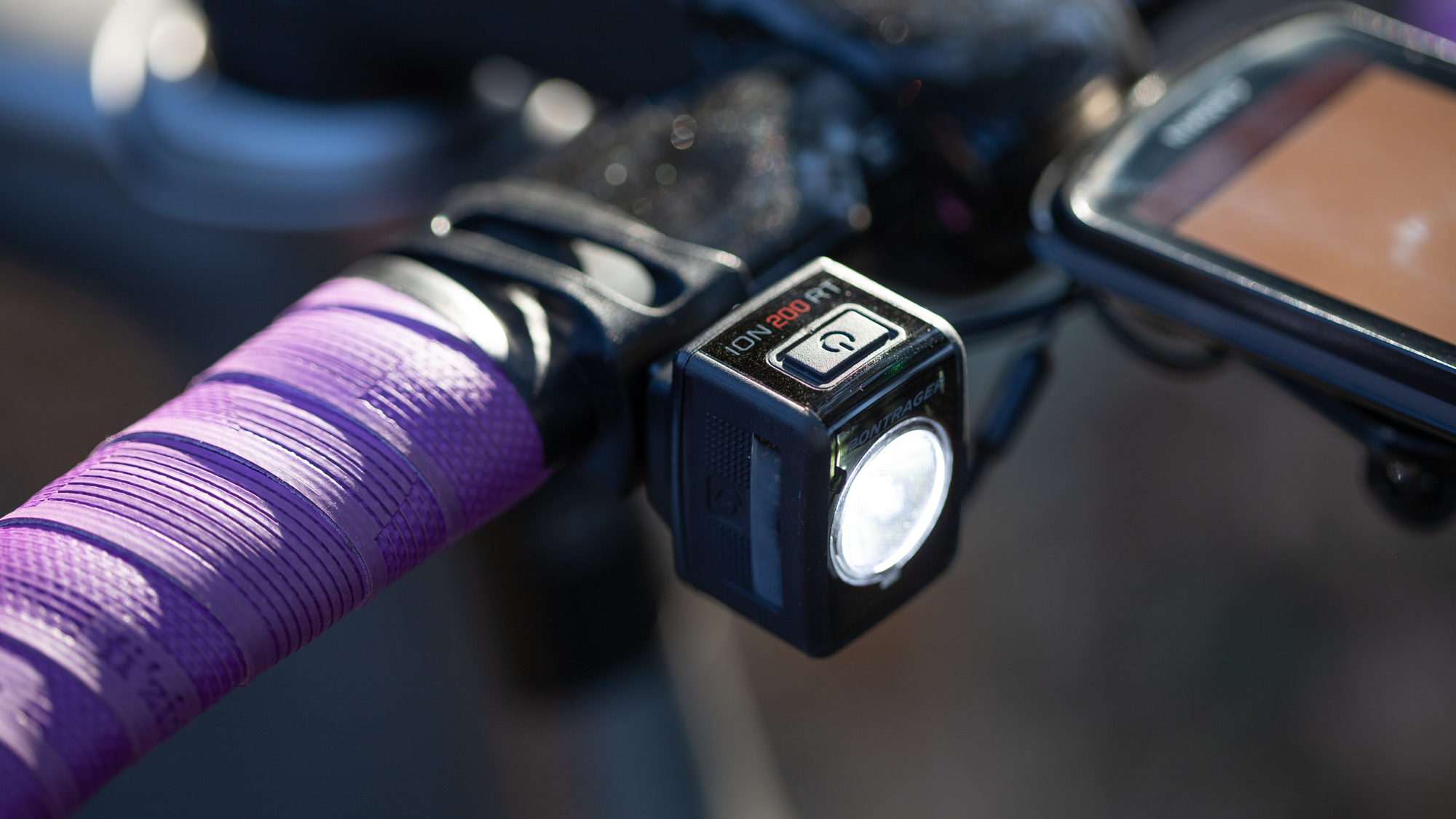
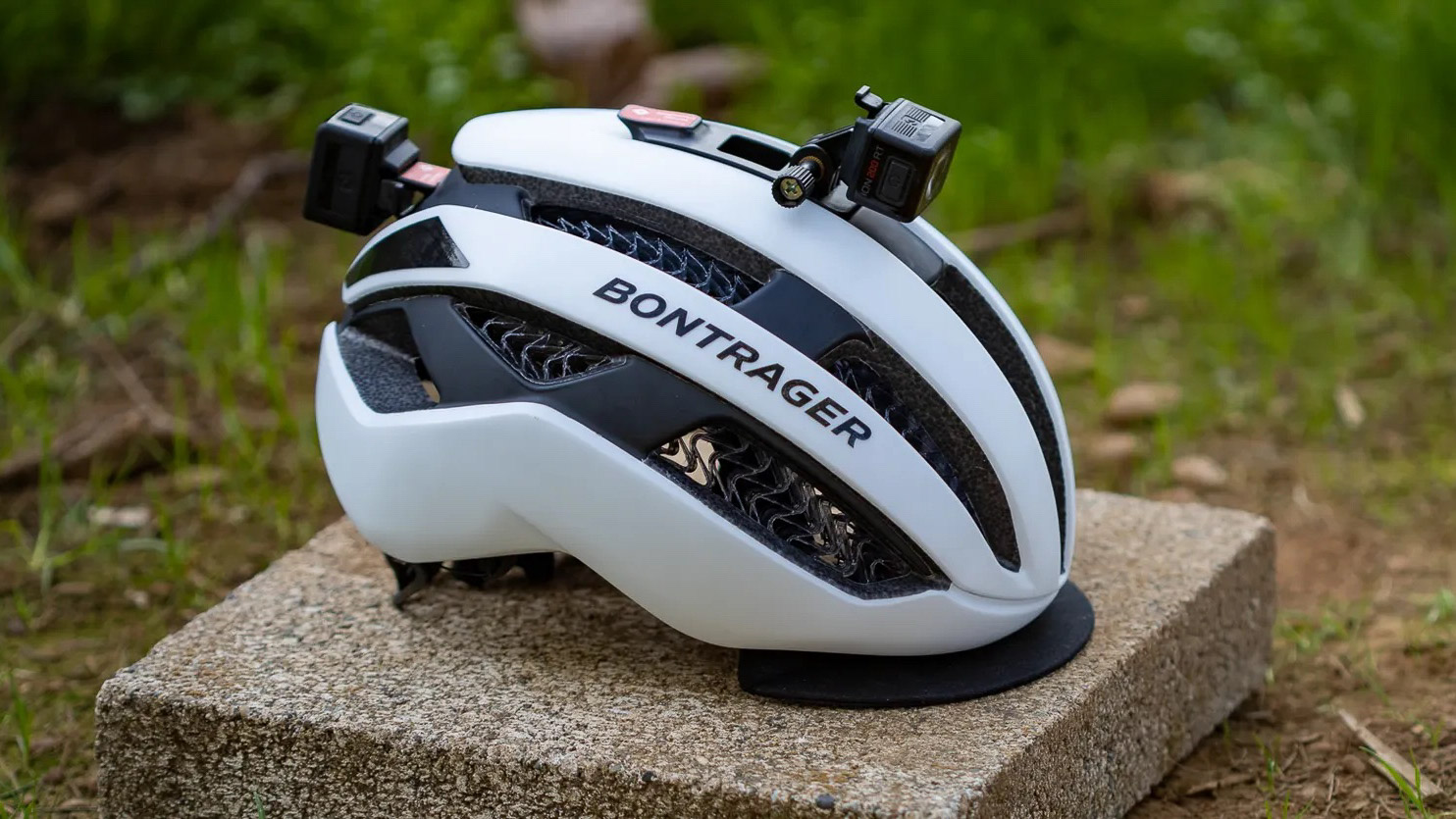
6. Trek Ion 200 RT
Specifications
Reasons to buy
Reasons to avoid
✅ You want to make sure you're seen, even in daylight: This is the epitome of a 'be seen' light. It's whole reason for existence is to increase your visibility.
✅ You want a small form factor: It's dead small, so clips onto bars without being obtrusive.
❌ You want to see in the dark: Allowing you to see where you're going is not what this light is for, so if you want to actually see in the dark then look to the Cateye AMPP900 above for a budget-friendly solution.
❌ You want USB-C: This light still uses micro-USB, which feels rather outdated by current standards.
This light was previously under the Bontrager logo, but as with many things it's been brought under the Trek umbrella. You'll still see some labelled as Bontrager, but they're identical. The Ion 200 RT is perfect for those who want a small, unobtrusive, but powerful daytime running light to make sure oblivious motorists notice you.
Tiny, but mighty. The lumen count is low but the light is claimed to be visible 2km away. I haven't tested this, mostly because the roads near me are all too wiggly and hilly, but this long-range visibility is down to a combination of an attention grabbing flash pattern and a front lens that focuses more of the beam forwards.
The small form factor means you can slip it onto your bars and forget it's there, or even mount it to your helmet without really noticing it's attached. Some helmets, like the Bontrager Circuit WaveCel have inbuilt mounts for the front and the rear version of the light, if daylight visibility is your thing.
There is a continuous light mode that can just about allow you to get home in the city, but that's really not what this light is about. It's an auxiliary add-on, and that's where it works best.
Brightest front bike light
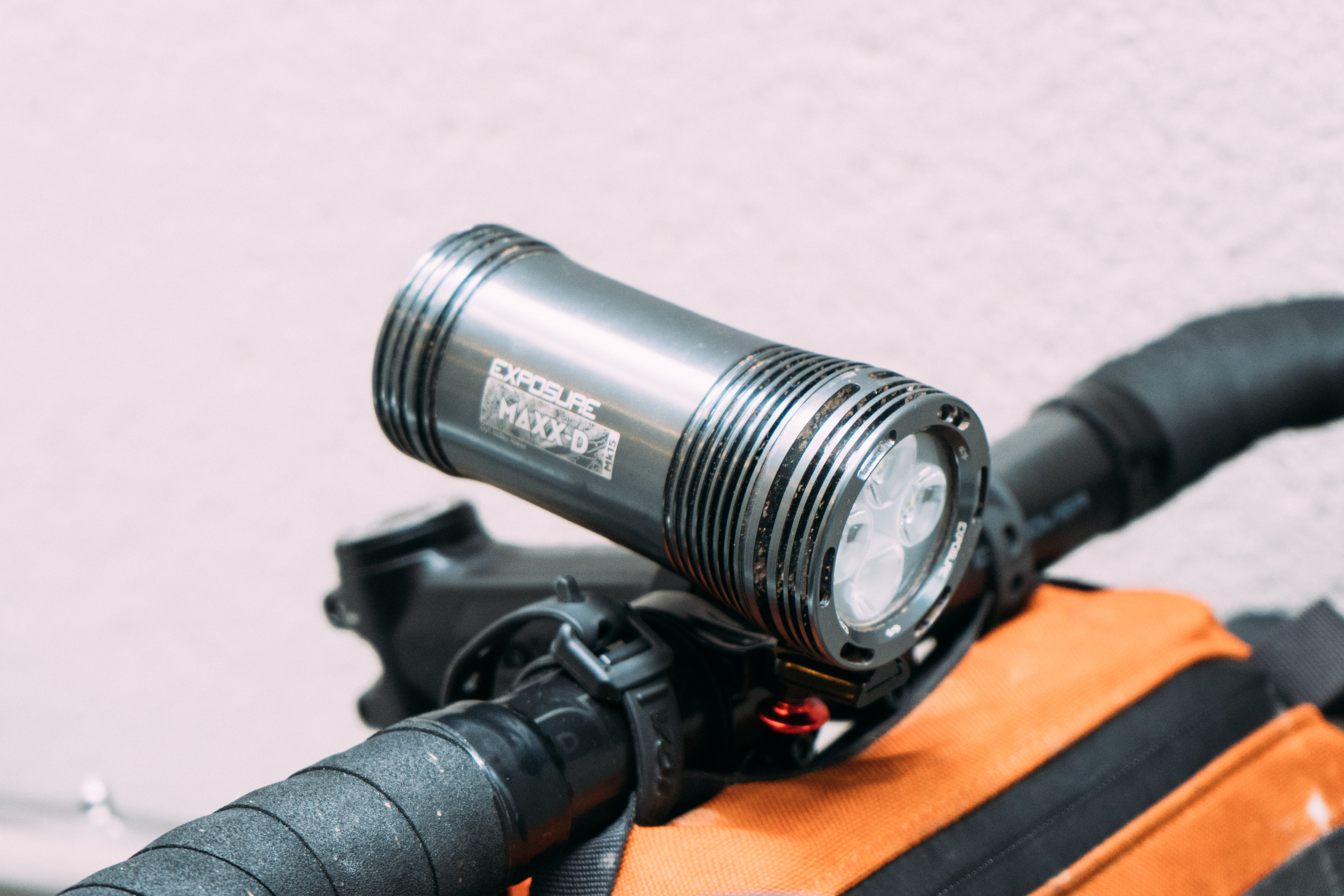
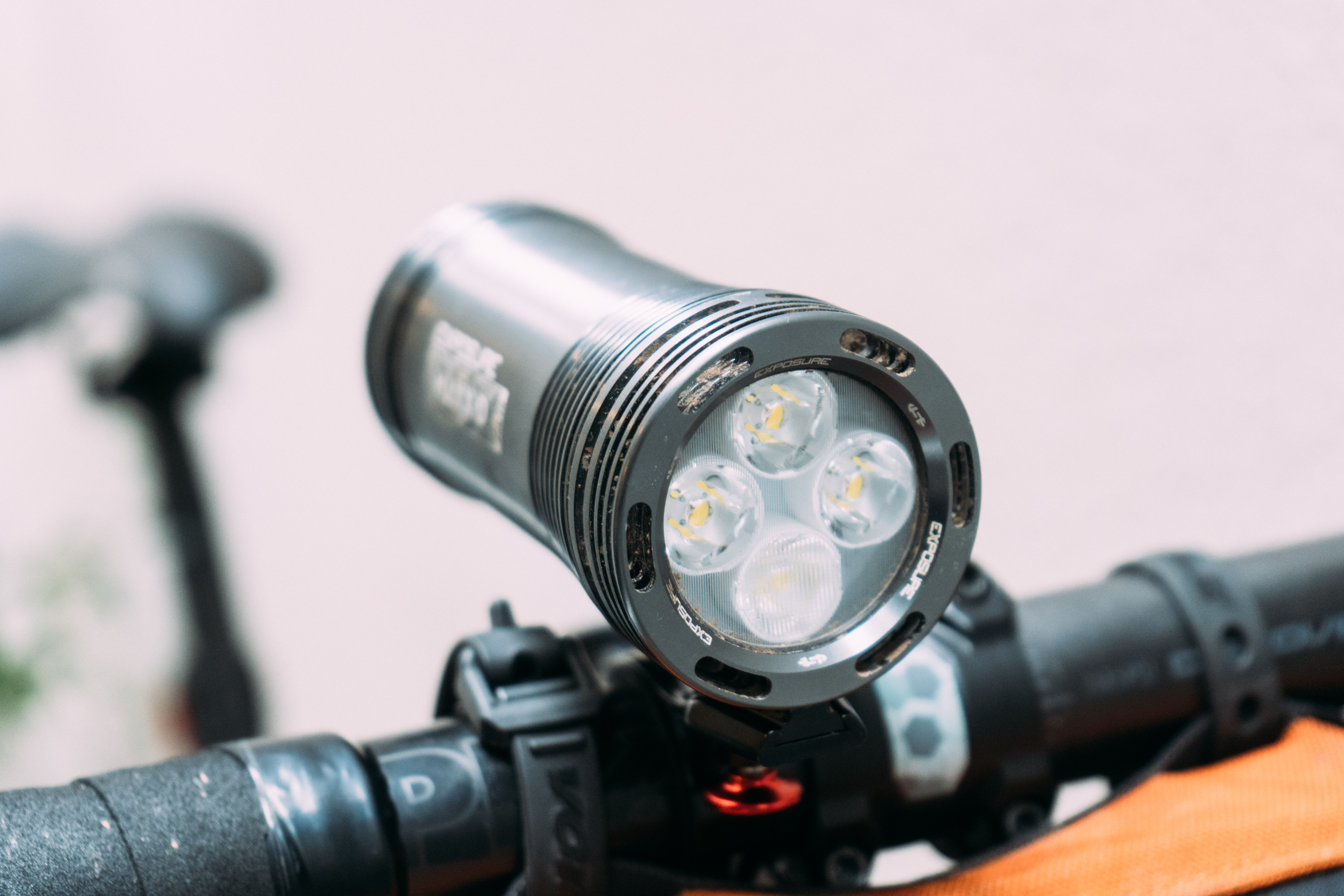
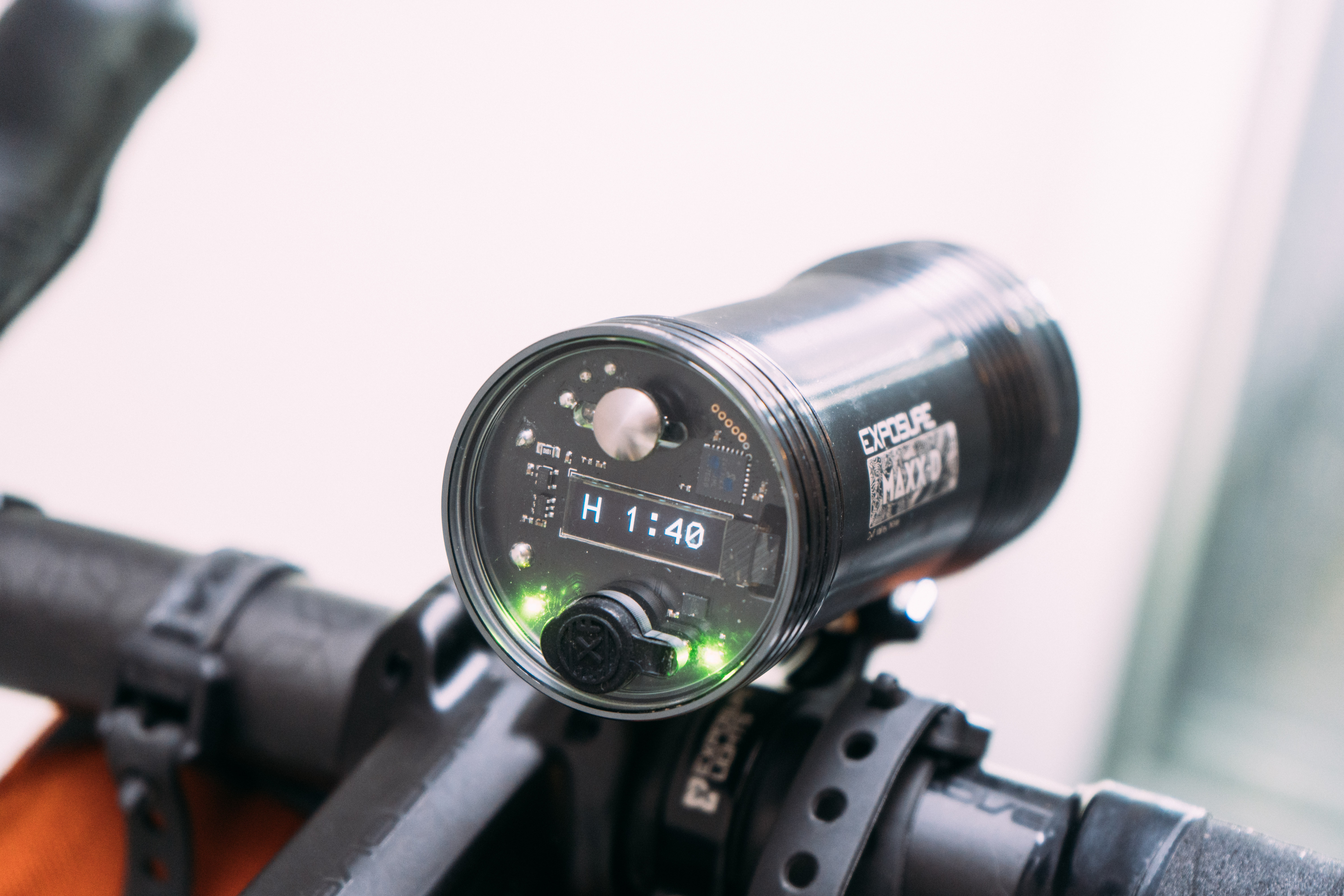
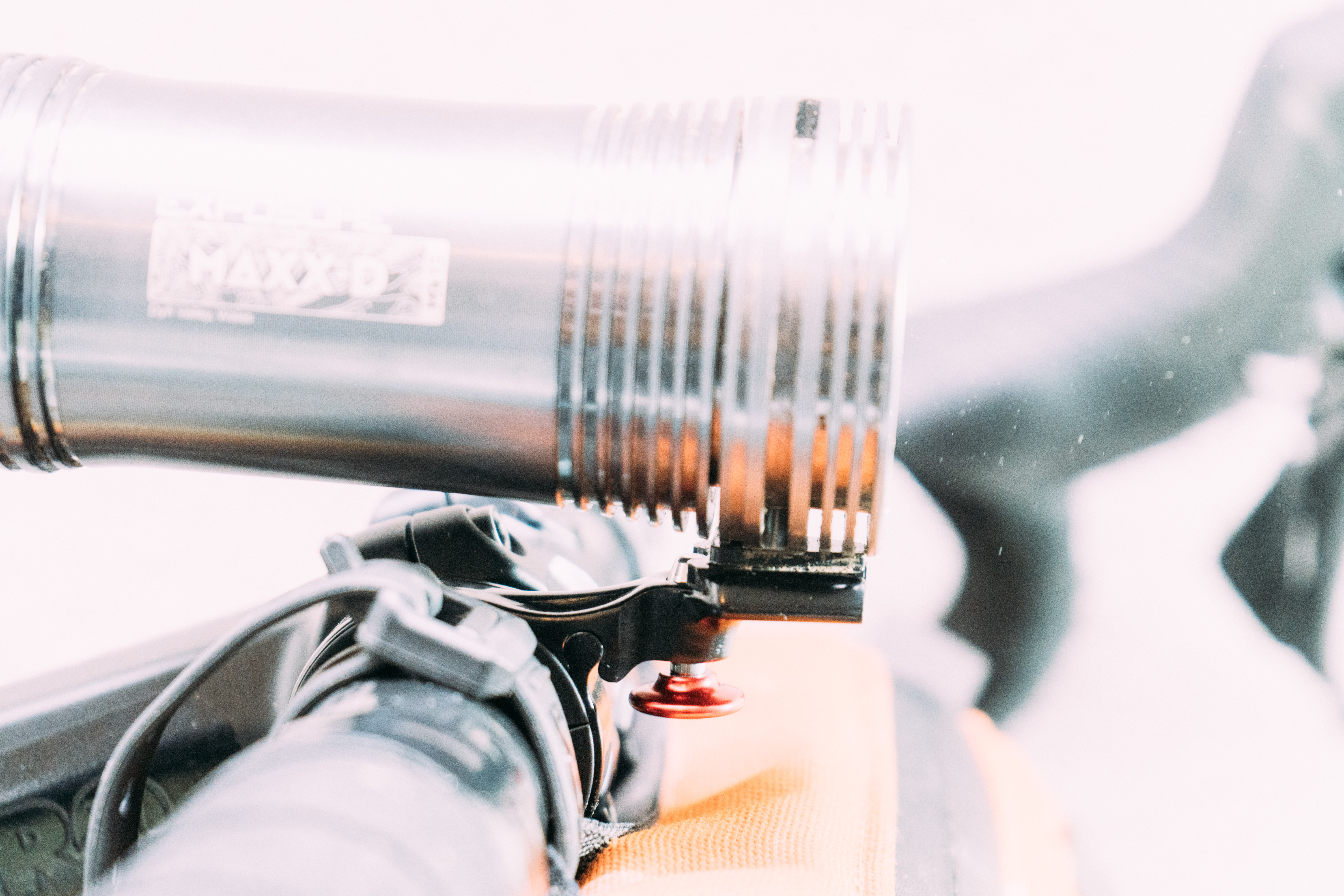
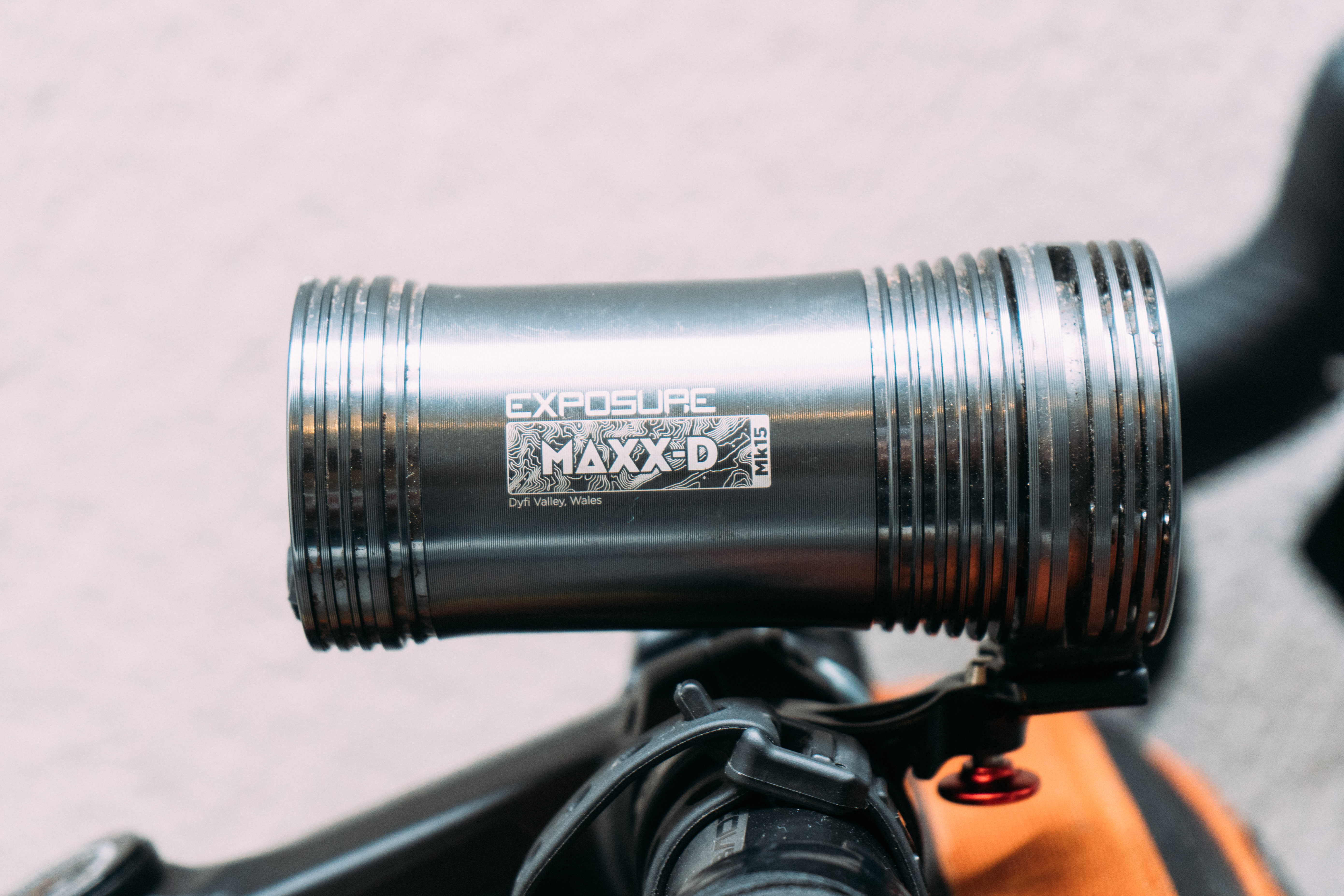
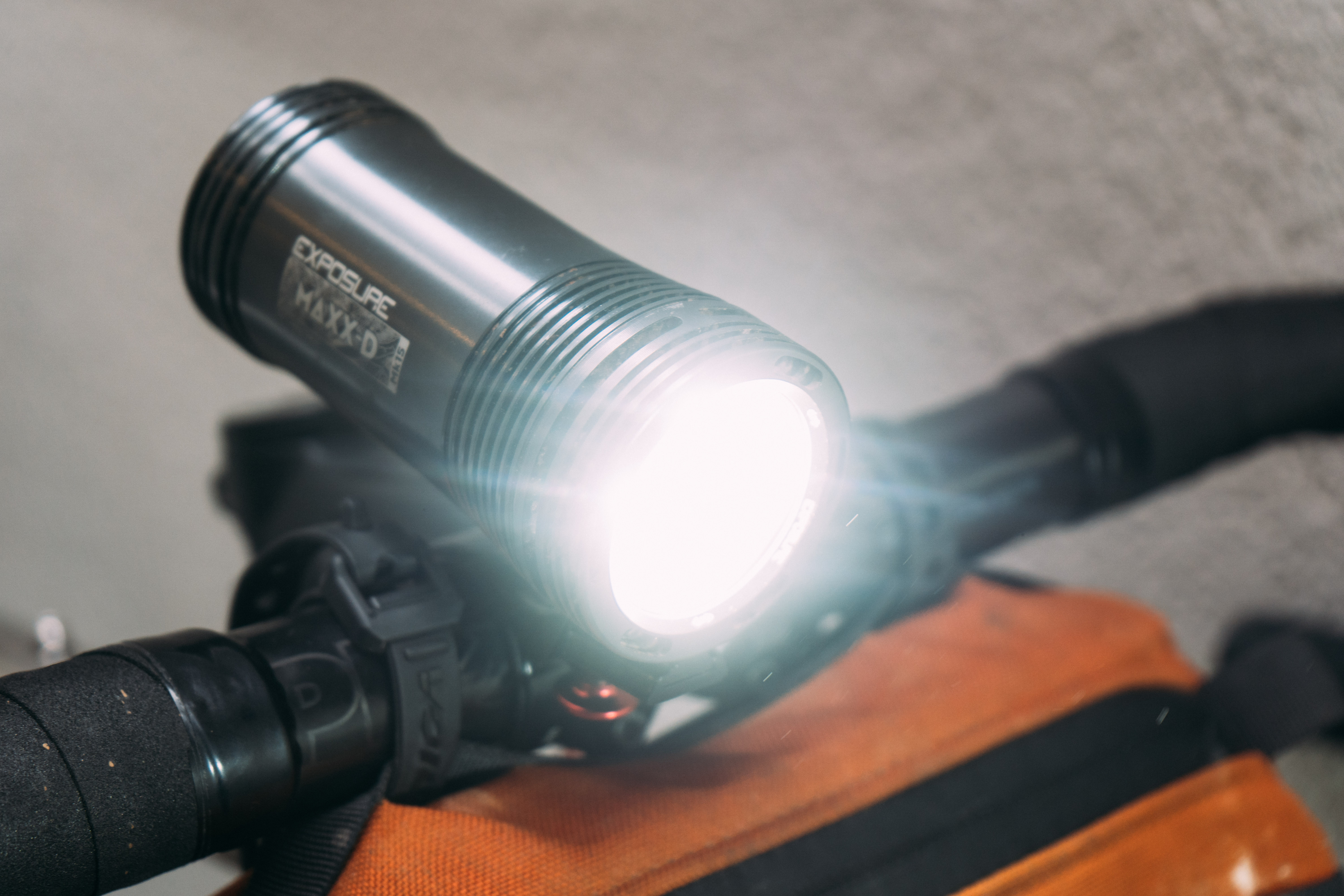
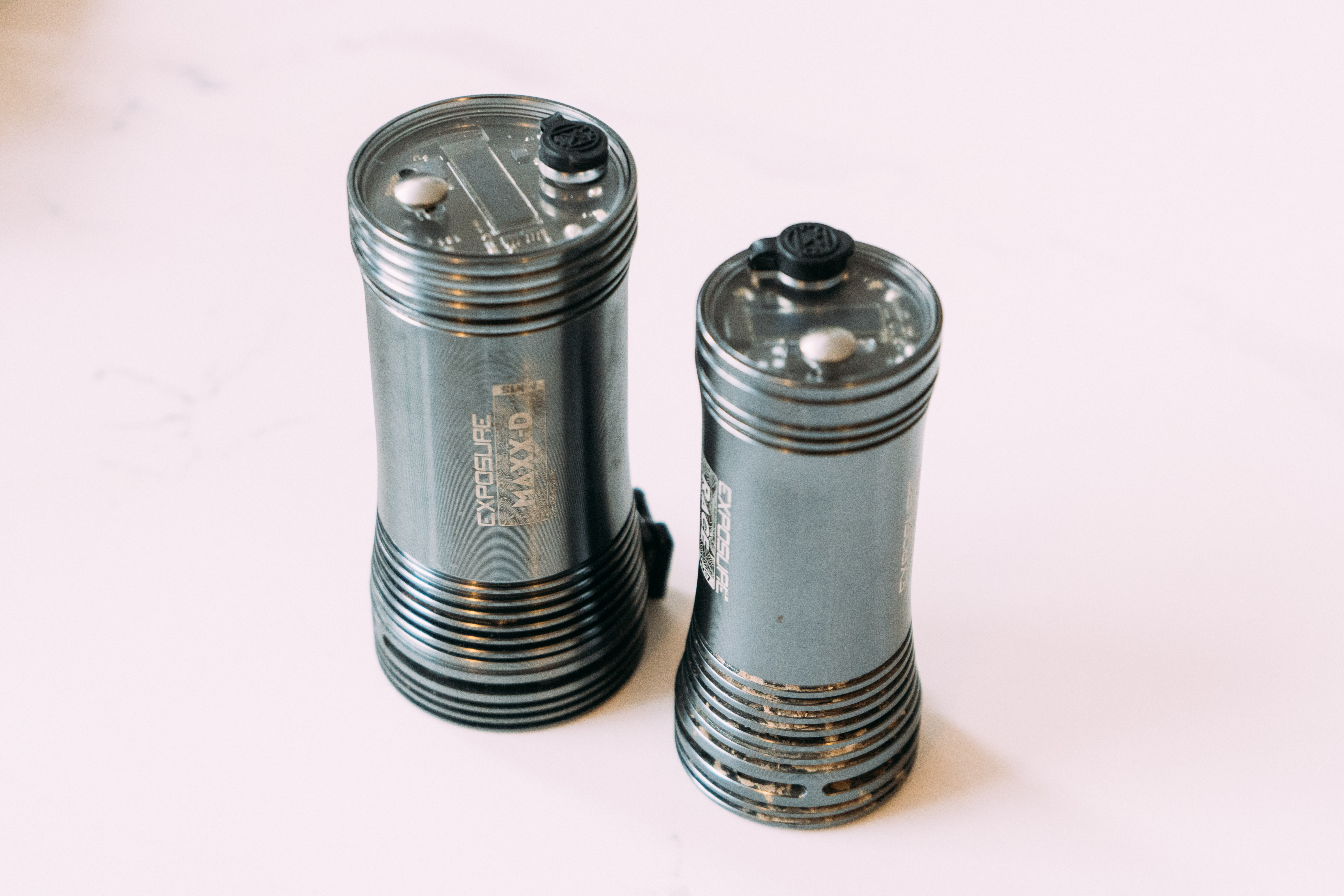
7. Exposure MAXX-D
Specifications
Reasons to buy
Reasons to avoid
✅ You want to see EVERYTHING: Even without the Reflex mode on, 2,900 lumens is more than enough for off road riding.
✅ You want total control over your burn times: With 10 different program modes you can tailor things exactly to your preferences.
❌ You want to sling it under a computer: The beam shape of the MK16 version is also designed to be run the right way up, so keep this one on the bars. The Strada is your friend if beam shape and under-computer mounting is what you want.
❌ You are a weight weenie: At 323.3g it's the heaviest light I've tested besides the gargantuan Magicshine Monteer 12,000. The Exposure Race isn't quite as bright, but it's a close second if weight matters to you.
Ok, so the 'brightest' title isn't strictly true as there are brighter lights out there. The Magicshine Monteer 12,000 is substantially brighter, but you have to carry around something akin to a car battery and that's just not feasible for most people. For gravel, the MAXX-D is the brightest you'd ever need before graduating into fully fledged MTB lights. I'd actually probably say it's brighter than you'd need, and point you in the direction of the Exposure Race instead, but if your riding is MTB+Grav rather than Road+Grav, the MAXX-D makes more sense.
You get the legendary Exposure build quality, beautifully machined aluminium housing, rear display readout, and really solid (if a little fiddly) mounting brackets that you get with the Race and Strada, but here you have 4x big LED bulbs to produce a very bright, spread beam.
As with the other Exposure models you select from a menu of program options (10 in this case), which then loads in the brightness settings that you can change on the fly. It takes a bit of time to get your head around, but generally speaking if you invest the time it means you can get the maximum amount of light for any duration ride.
Like the Race you also get Reflex mode, where the light will automatically up the brightness (to 4,600 in this case) when your speed increases, which is there both to save battery on the climbs and help you go faster on descents.
Given its size it does dominate the handlebar real estate if mounted on top of the bars, and is a little too long to be mounted beneath those computer mounts that bold directly to your stem. For under-bar mounting use a K-Edge computer mount, or just stick your computer on your stem instead.
The charger is proprietary, which is a drawback, and it does take ages to charge, but that's what happens when you have such a whopping battery inside. The light has been updated since I received my test unit, though the changes are minimal - A slightly higher maximum brightness, and a tweaked beam shape.
Best rear bike lights
Best rear bike light overall
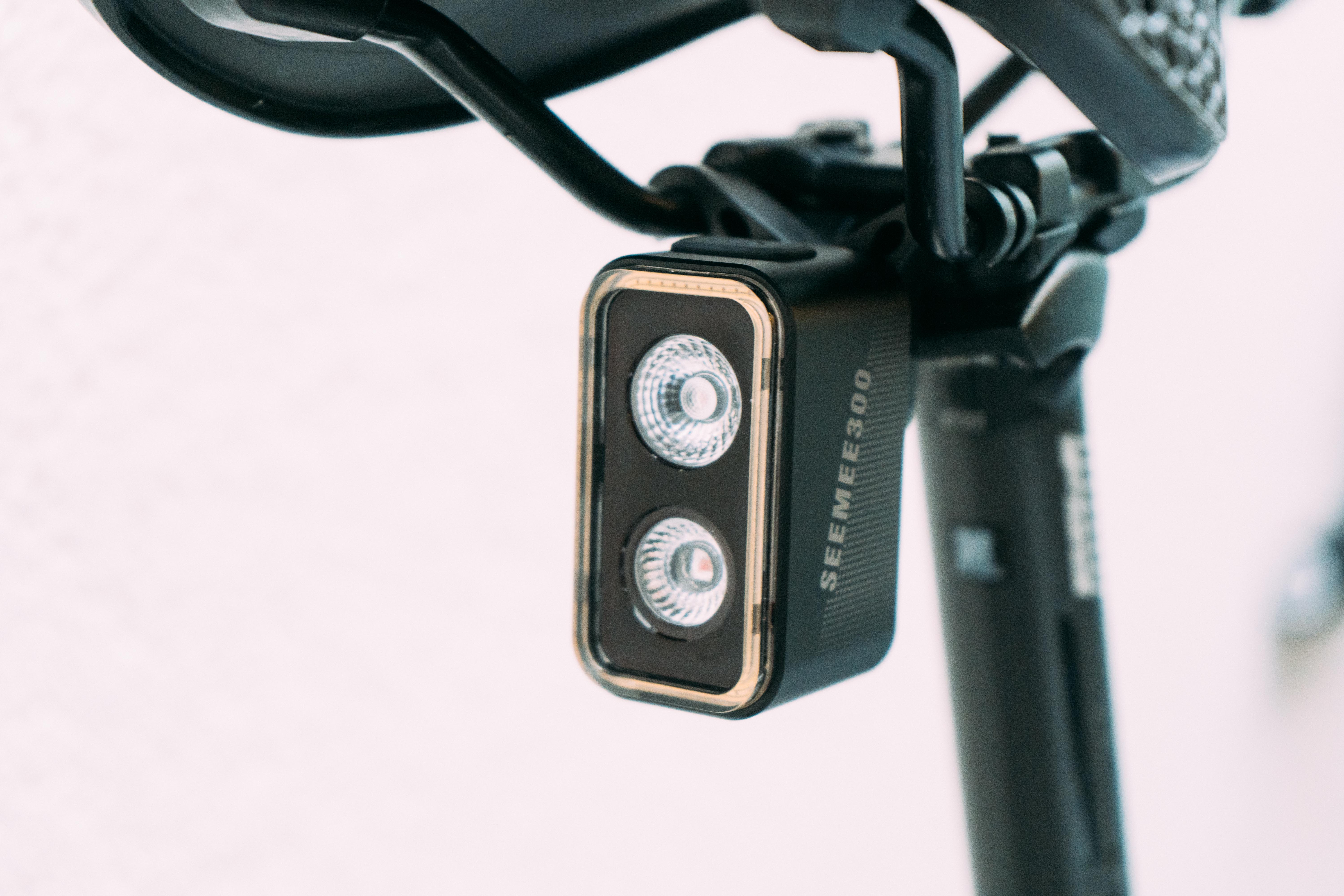
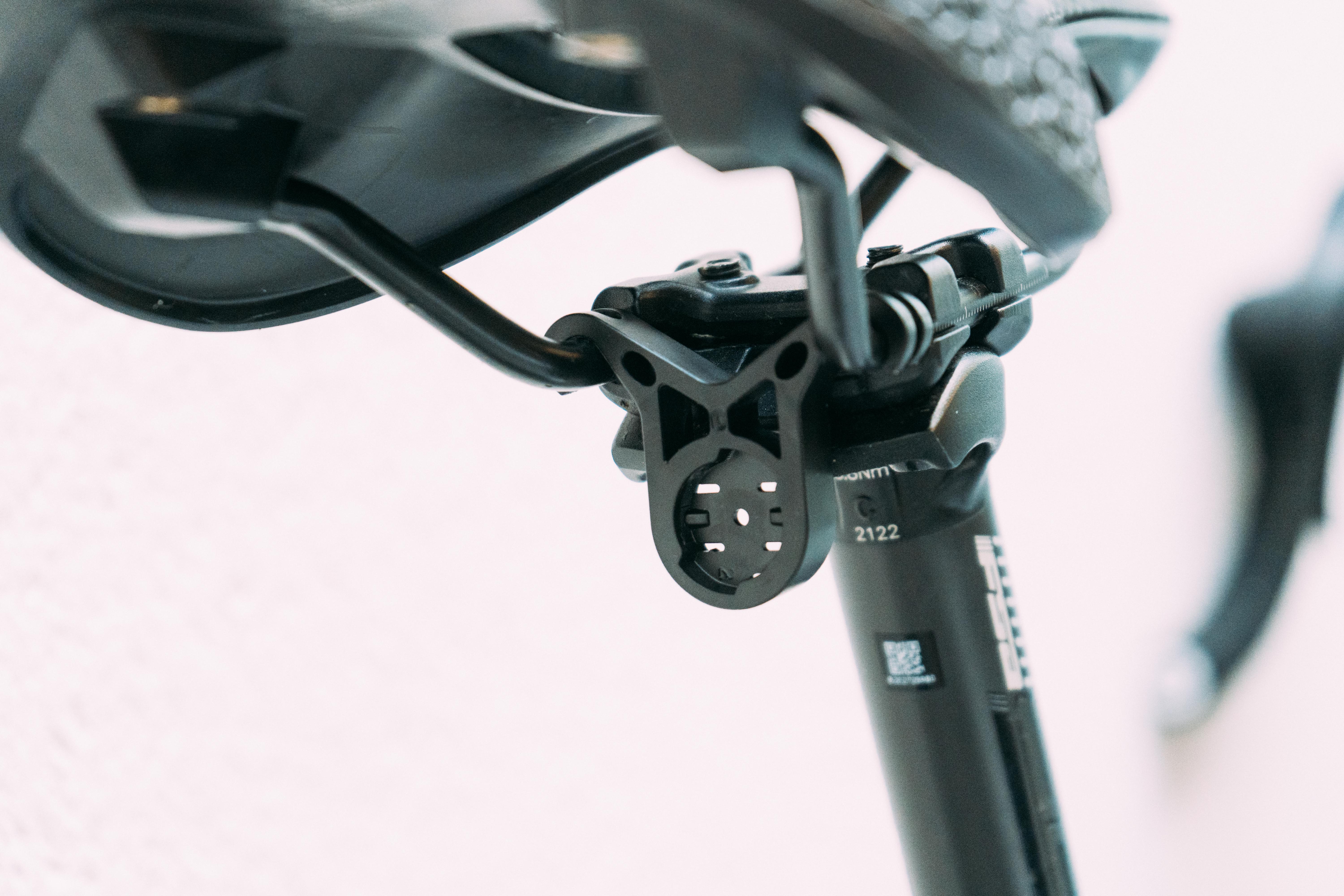
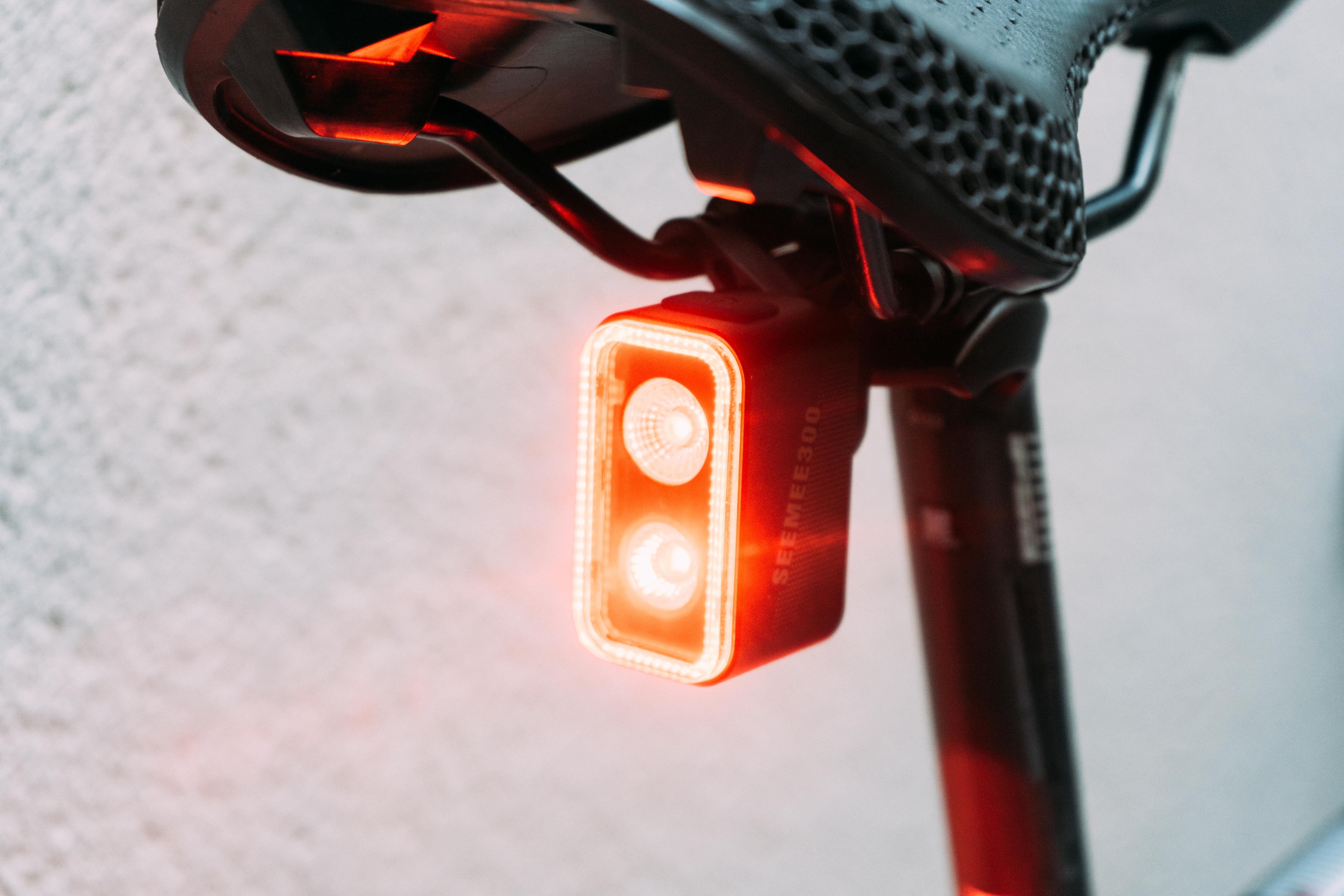
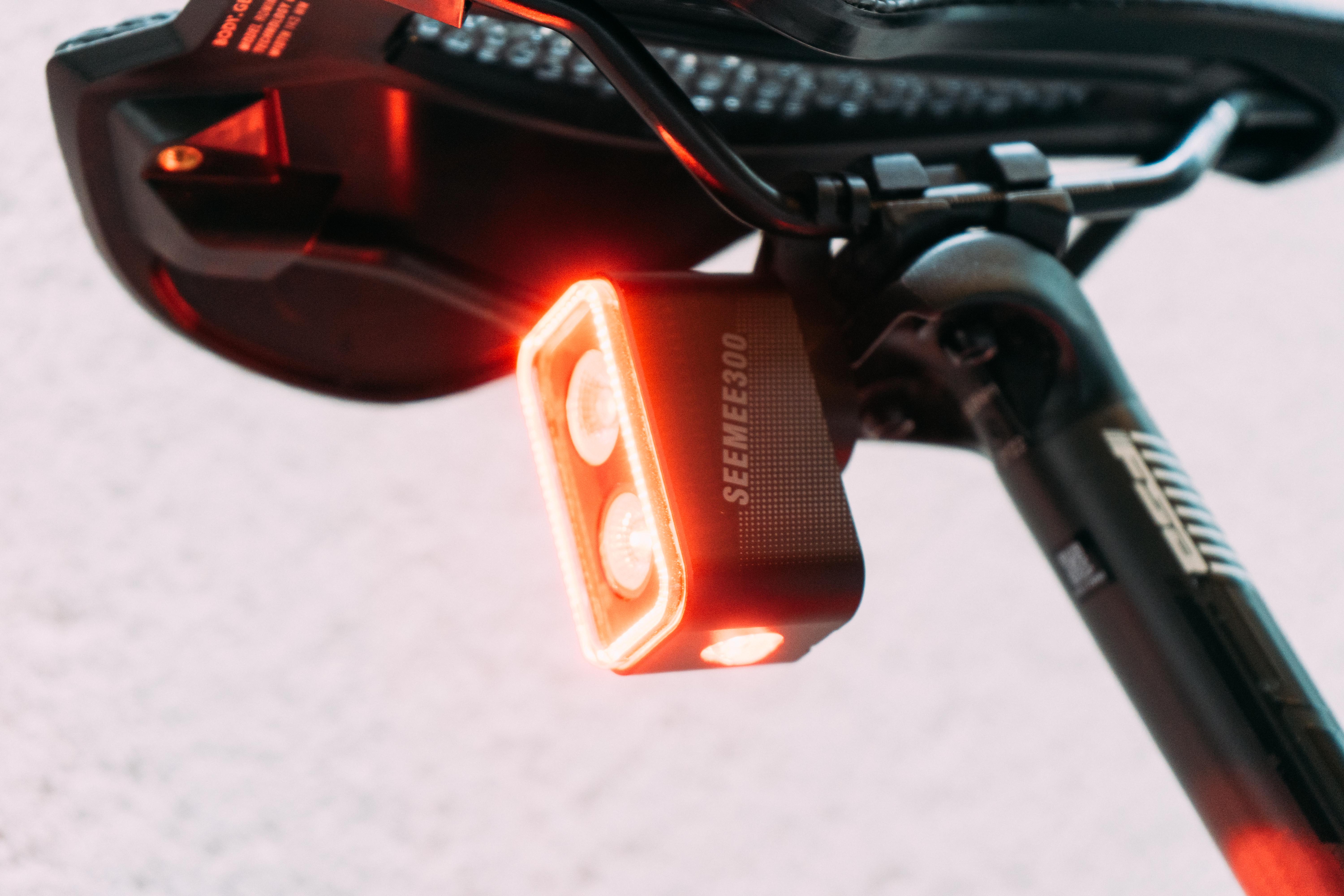
Specifications
Reasons to buy
Reasons to avoid
✅ You're a forgetful charger: With a battery life this big you're far less likely to be caught out without any illumination.
✅ You want added side visibility: The downward facing LED adds a 360º halo of red light around you to keep things visible from all angles.
❌ You want a clean look: A big battery takes up space and it's significantly less sleek than the Exposure option.
❌ You're a weight weenie: At 79g it's about as heavy as rear lights get. Not one for the hill climbers, but is winter the time to be counting the grams?
There's an awful lot to like about the Magicshine SEEMEE 300. It does many of the same things as the Exposure Boost-R, and some more, for a lower price, and so to my mind it's equal best overall, and the best value of the bunch. It lacks the nifty Peloton mode for group riding, and isn't quite so sleek, but if form factor isn't your main concern then it's well worth consideration.
The party piece is a HUGE battery life. This is mostly down to having a comparatively huge battery built in, and while this makes it a bit more chunky it's my view that anything not in your eyeline while riding doesn't really matter so much. The mounts included, based on a miniaturised 1/4 turn socket as you'd find on a Garmin bike computer, are rock solid, and it comes with both a seatpost and a saddle rail mount.
As well as lasting forever, there are a few smart features too. I really like the downward pointing LED that illuminates everything underneath the rear of the bike with a red glow, making you seem bigger than a single light source ordinarily would.
Like the Boost-R it can also act as a brake light, and it can also adapt to ambient lighting conditions in order to conserve battery and maximise visibility. If you ever find yourself running out of juice (a rarity if you at least remember to charge it semi-regularly) it'll automatically revert to low power mode and turn off the brake light function to get you home.
The build quality is excellent too, so in combination with the solid mounts I wouldn't have any qualms about popping it on a gravel bike. If you want to know even more about why I think this is the best rear light out there then read my Magicshine SEEMEE300 review.
Best budget rear bike light
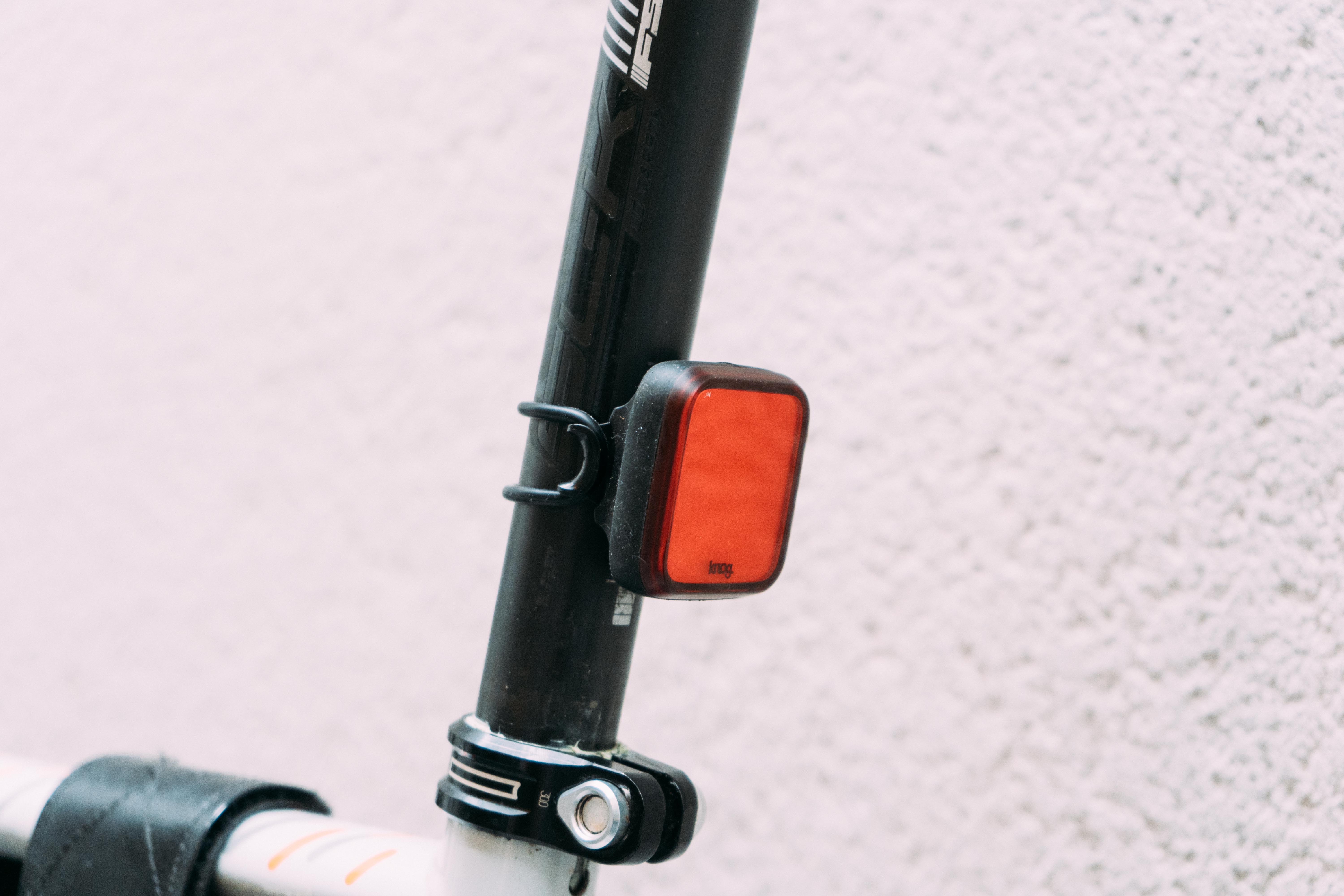
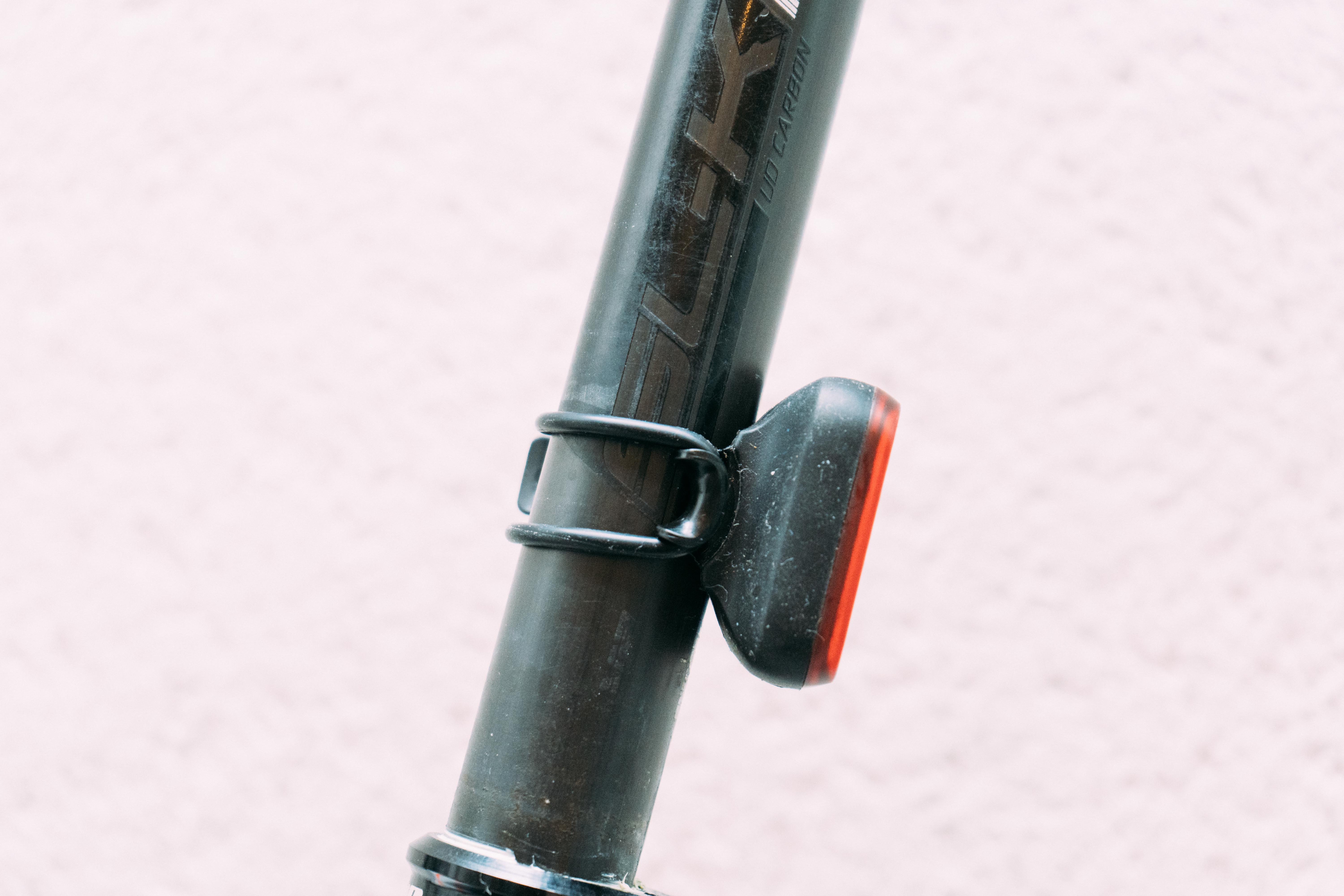
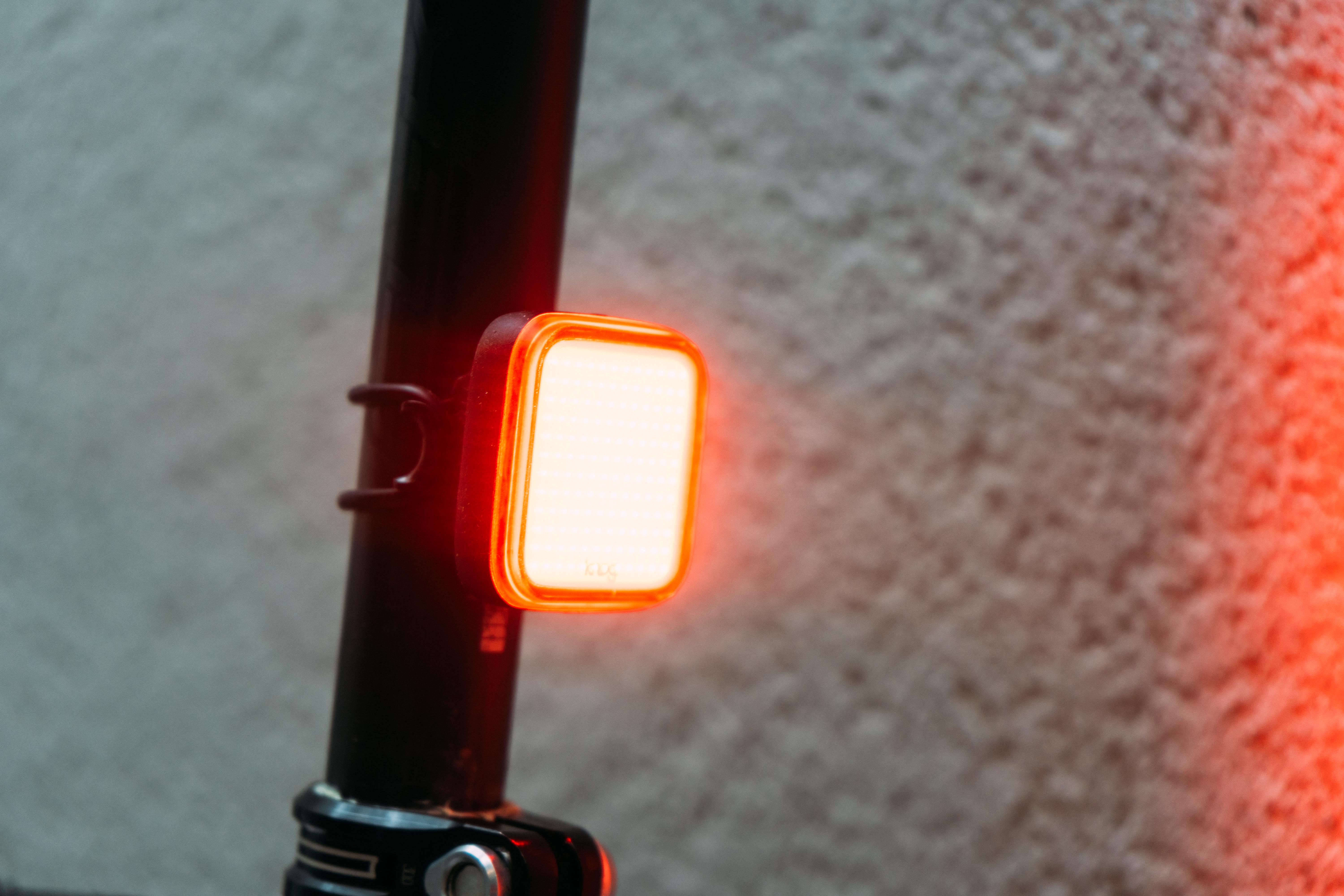
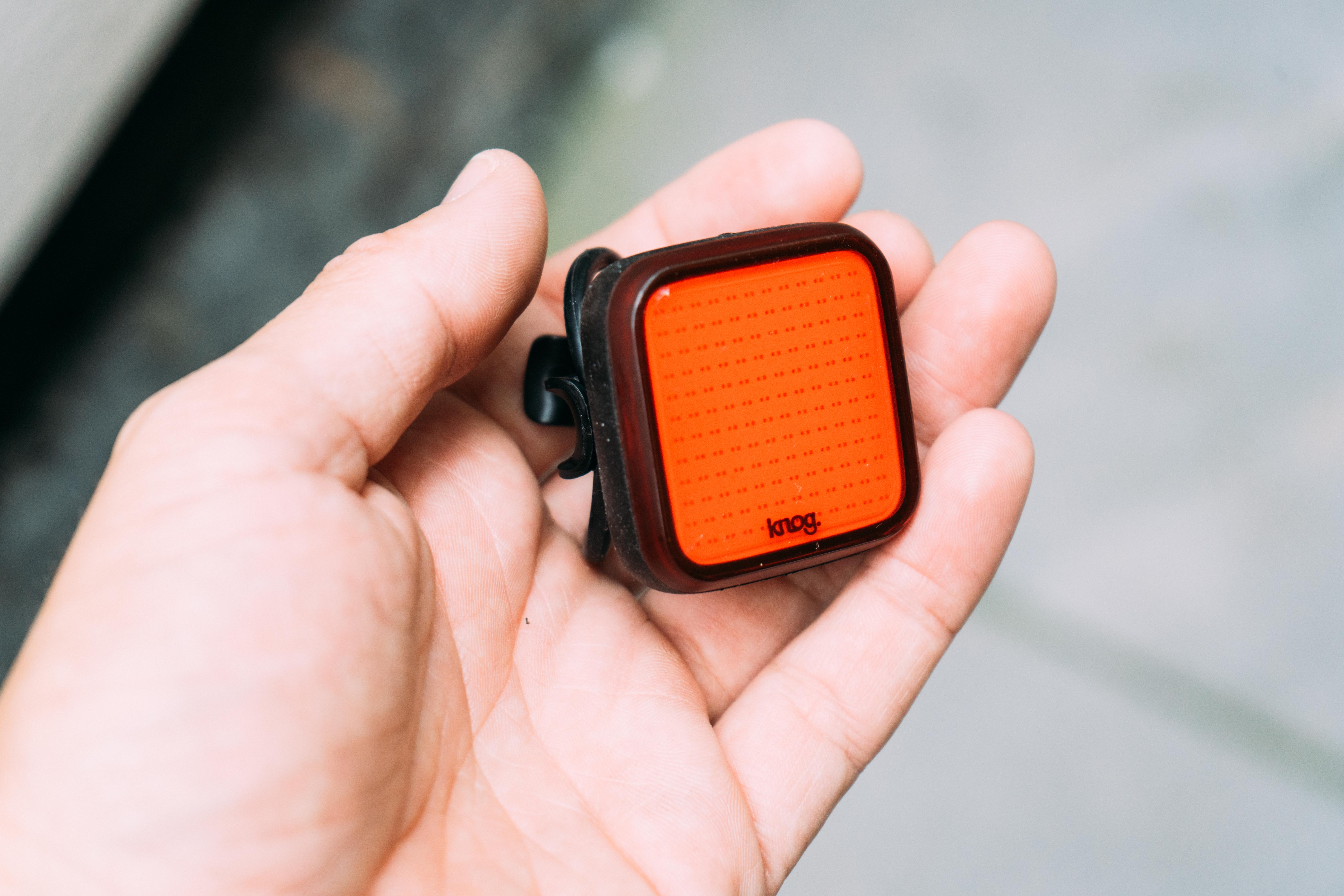
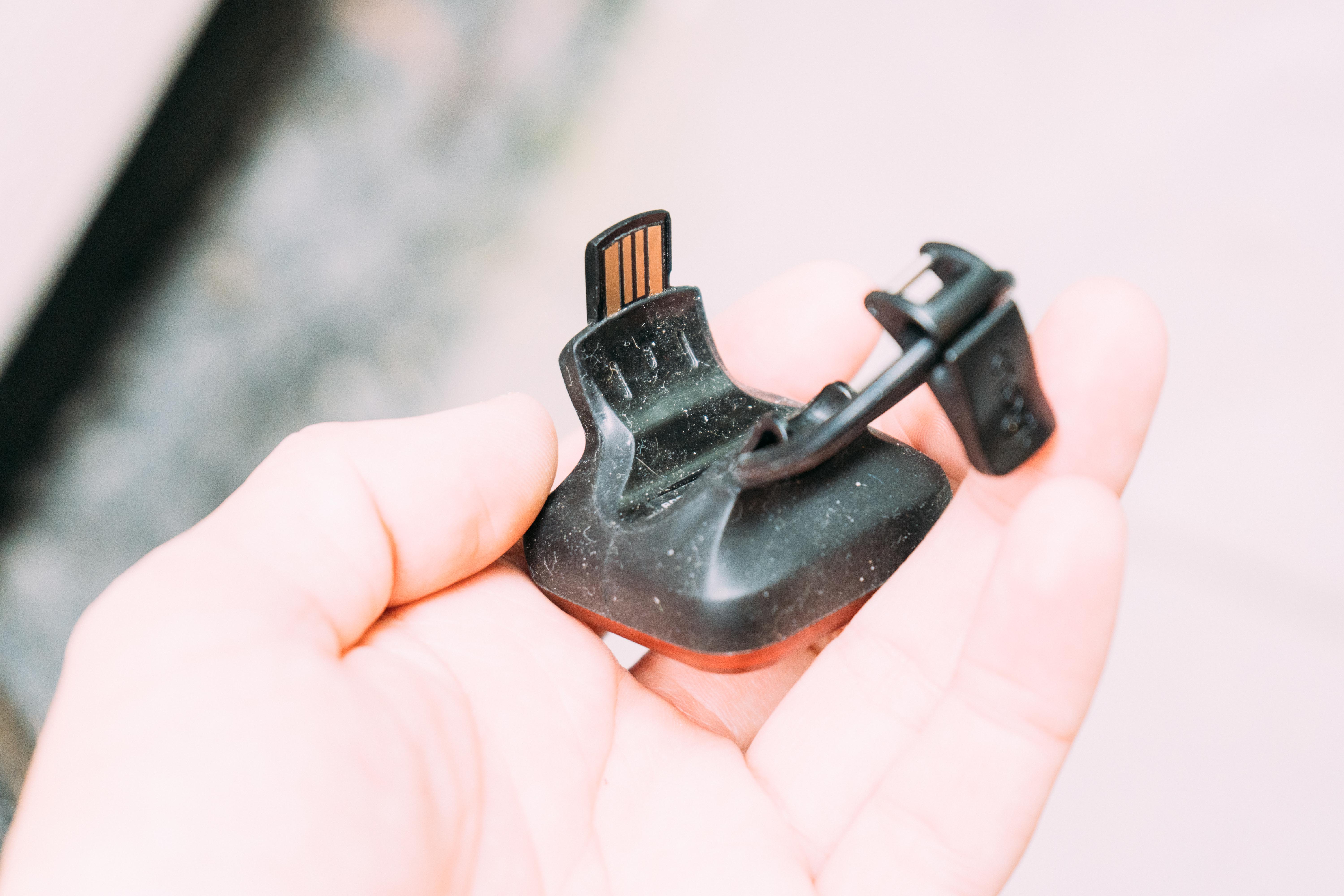
9. Knog Blinder Rear
Specifications
Reasons to buy
Reasons to avoid
✅ You want a really simple light: One button, a handful of modes. No bells and whistles, no learning curve, just slap it on your seatpost and away you go.
✅ You want to take it off/on with ease: While the bracket has a few moving parts it is among the fastest and easiest light to install and swap between bikes.
❌ You don't have easy access to a USB socket: With everything going to USB-C, finding an actual old school USB socket to plug it into to charge isn't as easy as it used to be.
❌ You're riding on gravel: It is waterproof rated, but the exposed charging contacts built into the mount are asking for trouble when exposed to the muck that comes with riding off-road.
You can think of the Knog Blinder Rear as just a really good version of those cheap clip on lights you see the world over on bikes in the city. Those, in my experience, aren't made well, aren't overly bright, and don't last long either physically or in terms of battery life.
If you're after a relatively inexpensive but visible light you can just clip onto your seatpost in seconds then this is a great place to start. The giant square face is an array of 144 small LEDs, meaning in constant mode you get a large light area. What's really neat though is that the flashing modes aren't simple on/off variants. In my version, the central portion varies from the outer rim in a bullseye pattern, and is much more dynamic.
You can opt, if it's your thing, for various patterns - skull, peace symbol etc - but I'd just stick with the standard option. I don't think a taxi is necessarily going to be more aware of a skull than a square in the heat of rush hour.
The bracket is a little over-engineered, and it is possible to lose the hinge part, but it is very quick to use. I don't actually think having a direct-USB charging system is that useful, given USB-C is now proliferating as the standard, and not having the body designed so the light sits vertically when mounted to a seatpost is a bit annoying from an aesthetic standpoint but does little if anything to actually affect the visibility of the light.
Basically it's a great option for commuters and price-savvy riders, but I wouldn't necessarily opt for it for gravel or group riding.
Best rear bike light for group riding
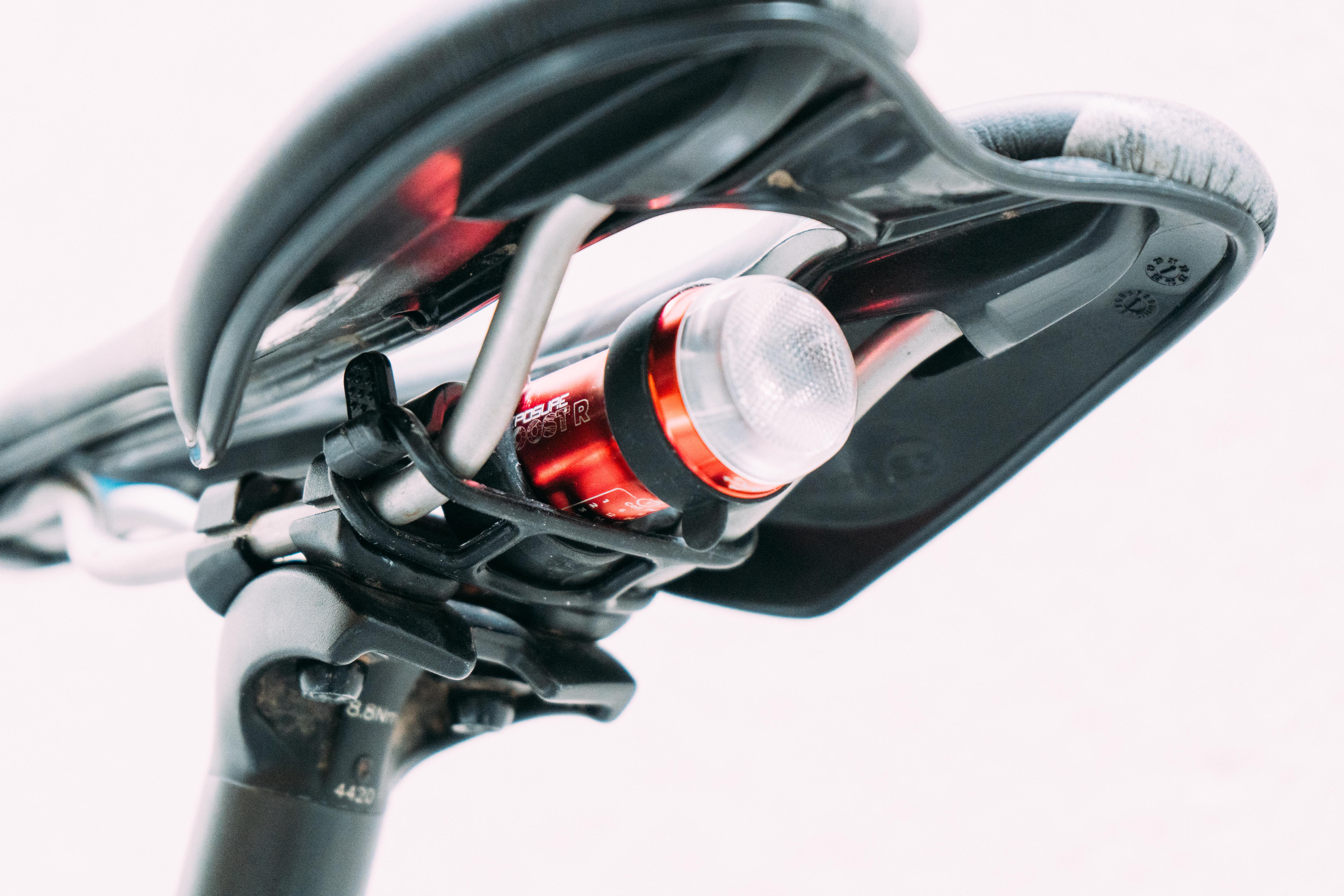
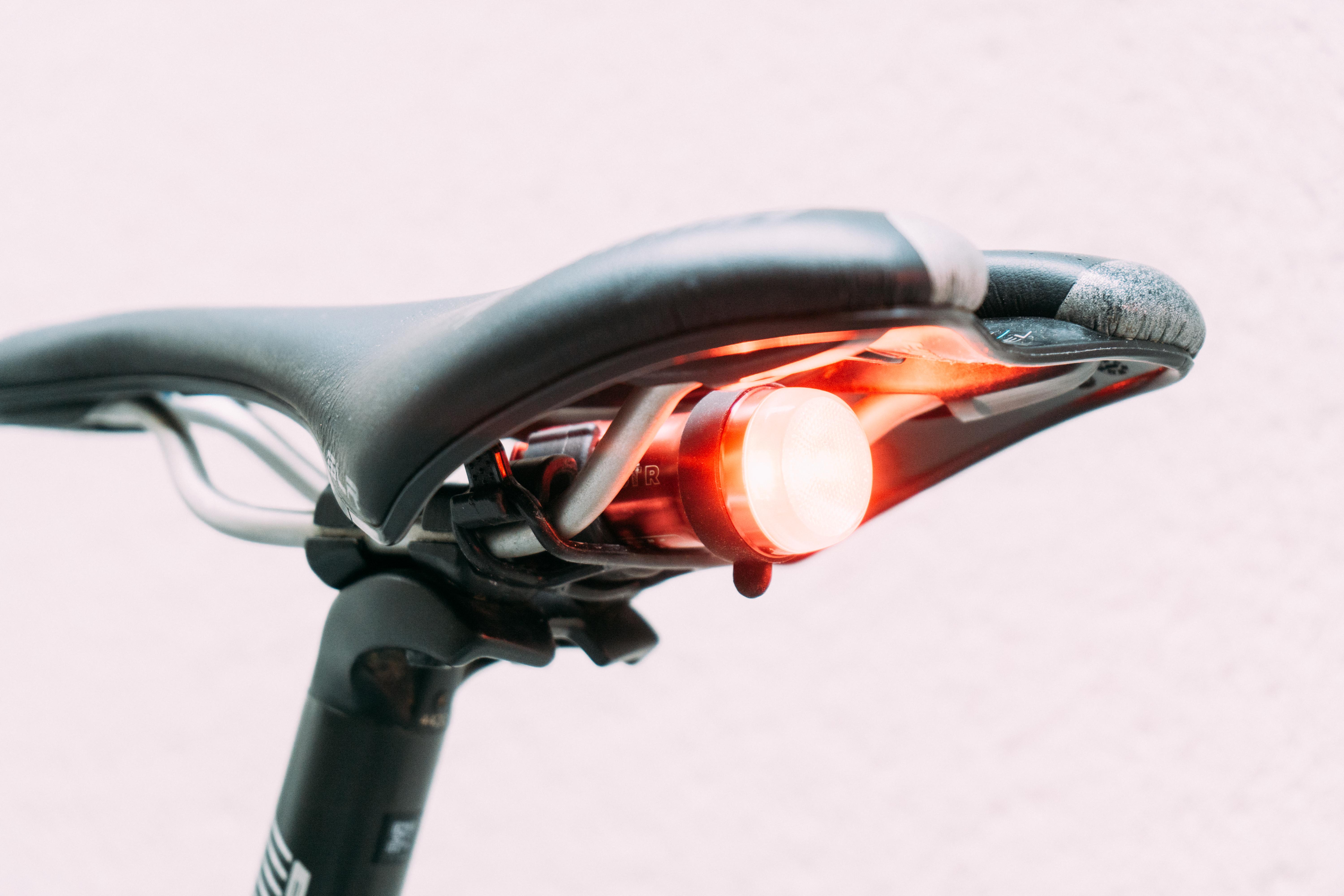
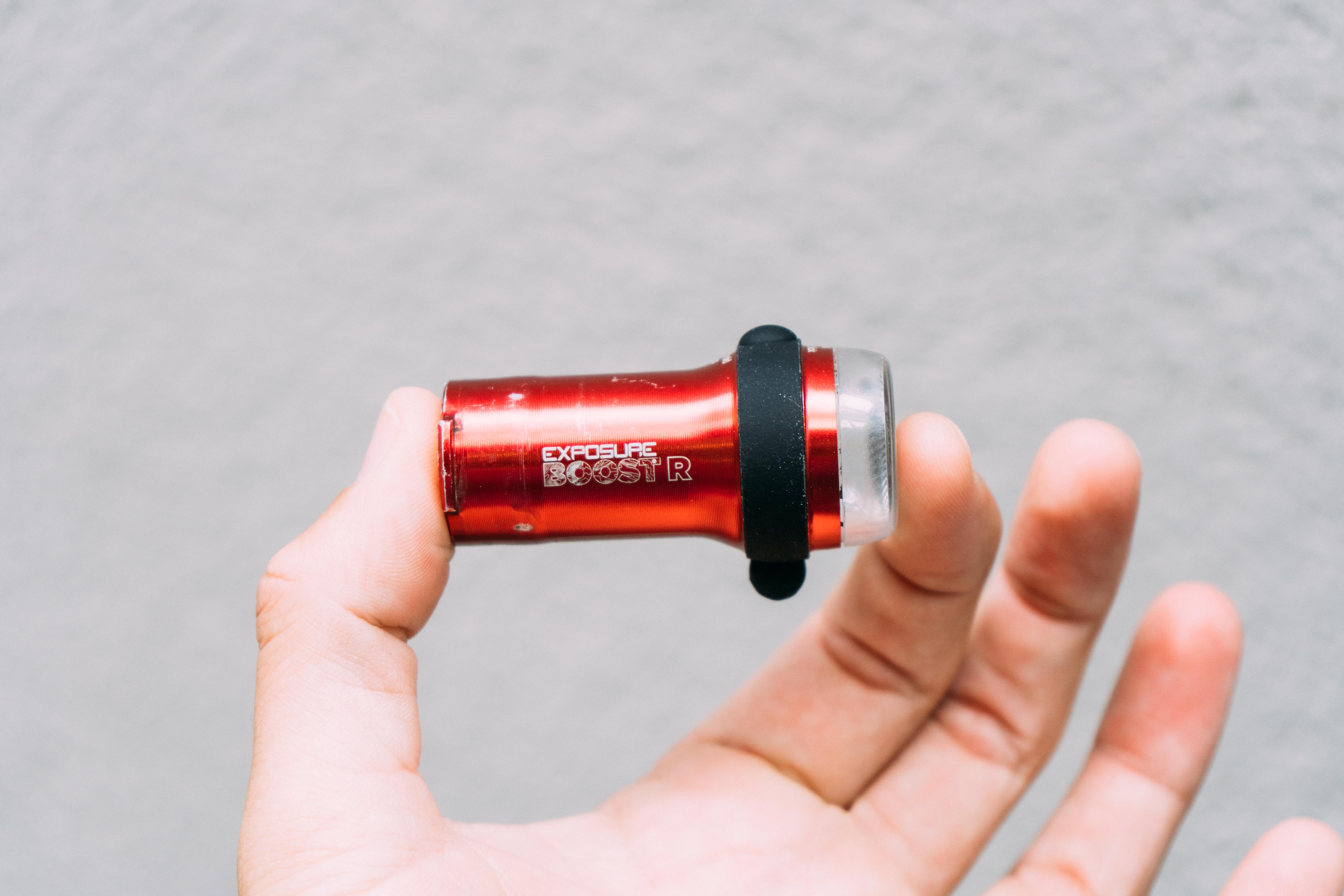
10. Exposure Boost-R + ReAKT & Peloton
Specifications
Reasons to buy
Reasons to avoid
✅ You're riding in a group regularly: The Peloton and ReAKT modes will keep your companions happy by letting them know when you're braking, and not blinding them when they're behind you.
✅ You value durability: Exposure lights are incredibly well made, and if it's going to get covered in road spray you want something that'll stand up to some punishment.
❌ You want super solid mounts: The real Achilles heel of the Boost-R is the seatpost mount, which can twist during a ride pretty easily. The Bontrager Flare RT's mount is a winner if that's a priority for you.
❌ Side visibility is your priority: While it's super bright, there aren't any features built in to improve visibility for anyone approaching you from the side. Look at the Knog Mid Cobber below if you need wraparound visibility.
Another winning light from Exposure, the Boost-R with ReAKT and Peloton is about as complete a rear light as you're likely to find. Small, beautifully engineered in anodised red aluminium, the Boost-R is really very bright indeed. Before I worked out how to change the settings (like with other Exposure lights it's not as simple as pressing the button to make it dimmer) I had several riders ask me to turn it off if I was in front of them.
You can't cycle through brightnesses, but instead, you select from three power modes and can then only choose between solid and flashing. This doesn't sound ideal on the face of it, but the light has a couple of built in tricks that offset this lack of choice.
ReAKT is the first, and that means the Boost-R automatically adjusts the brightness depending on the ambient lighting. It'll get brighter under street lights for example, dimming when you head into darker areas.
The ReAKT mode also comes in handy when riding in a group. Most of my riding is solitary, but when ReAKT is switched on the light flares up under braking, acting in an identical manner to a car. Good for cars and other riders.
Peloton is the final trick, and with this on the Boost-R will dim when it senses a bike light behind it, flaring up again when the light source is removed. Perfect for a paceline where you want to remain visible at the rear of the bunch, but not blind your clubmates when pulling on the front.
My only real gripes with the Boost-R are the included seatpost mount, which does tend to twist round, needing the occasional repositioning. My test unit is micro-USB, though the current product has made the switch to USB-C.
Best rear bike light for commuting
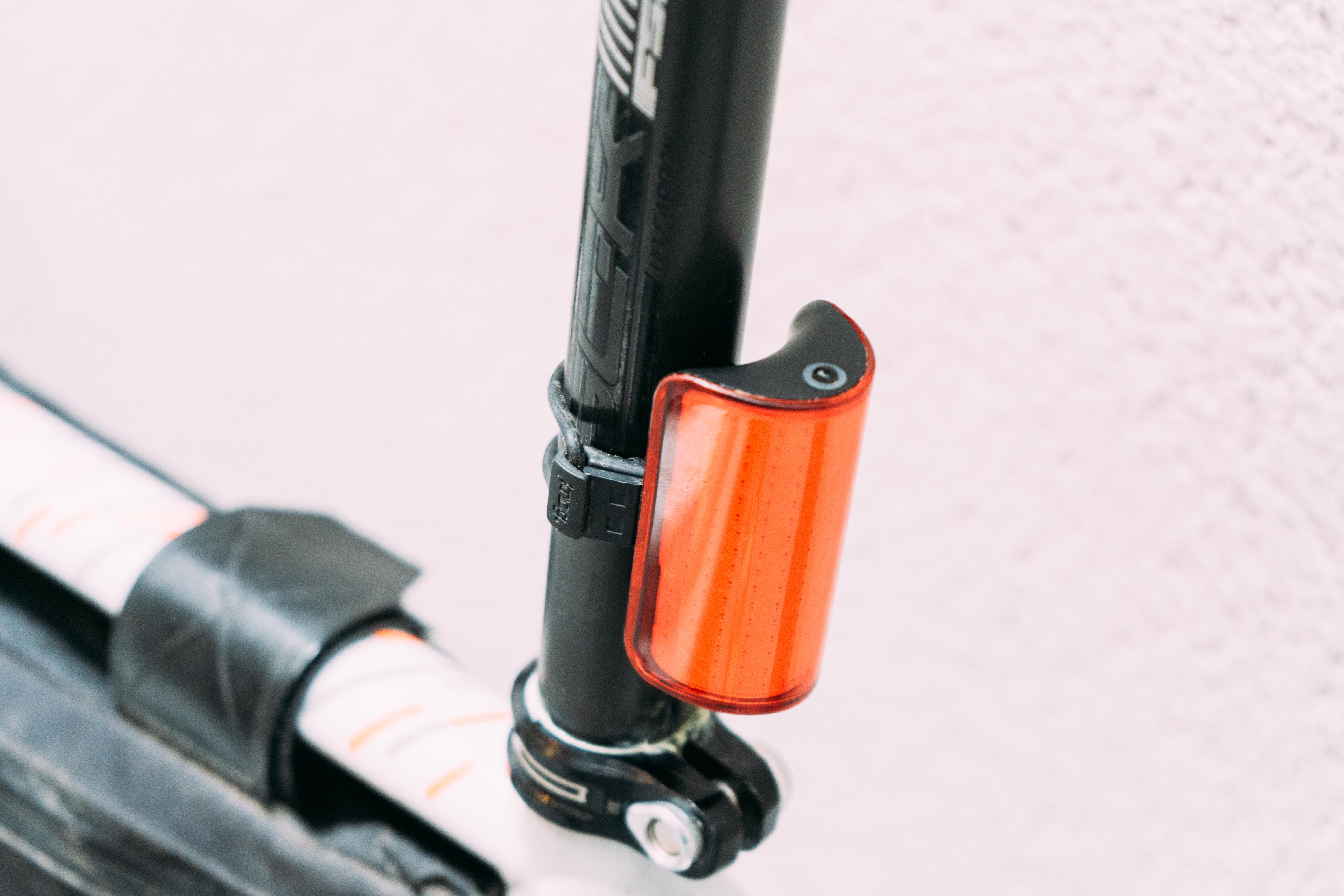
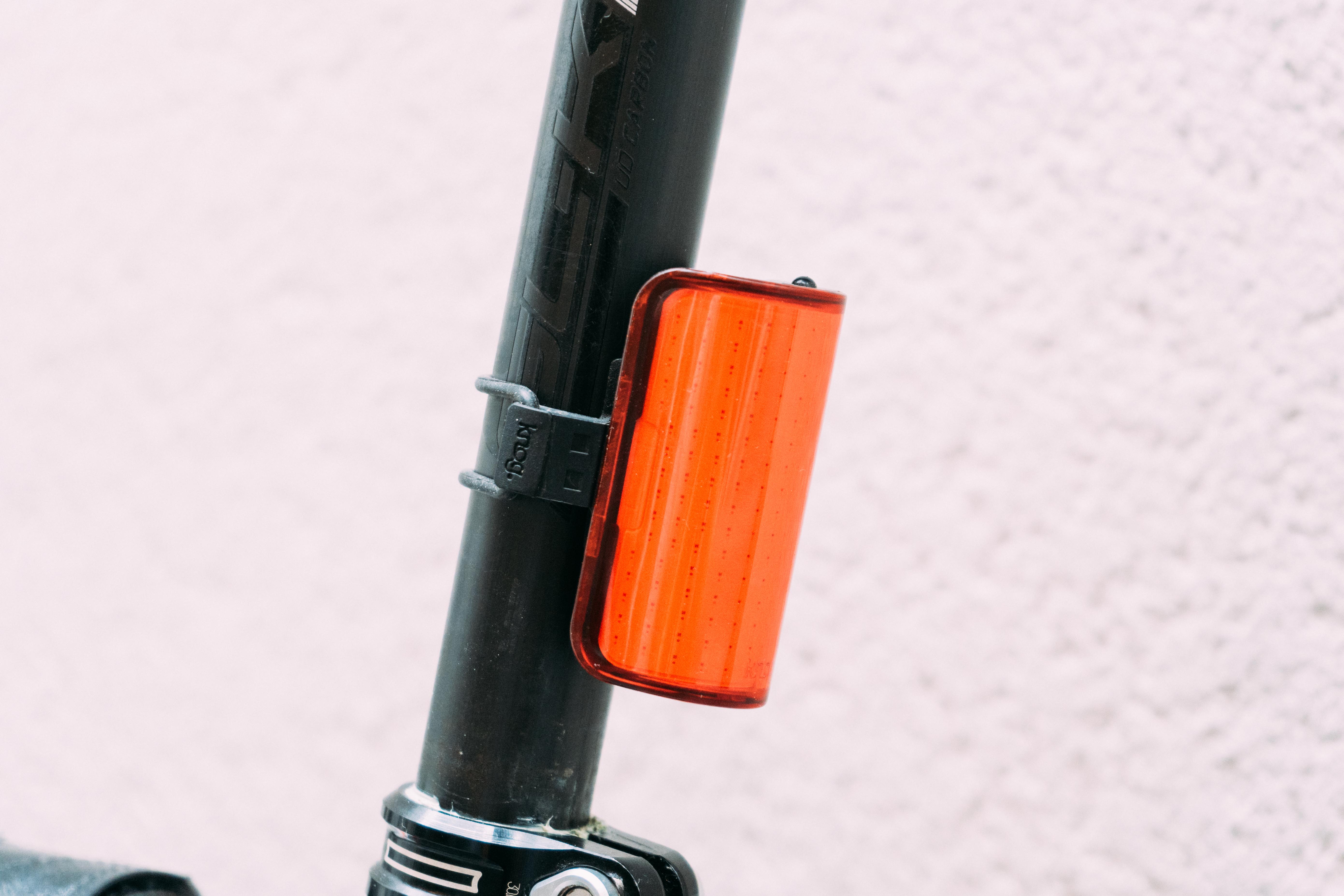
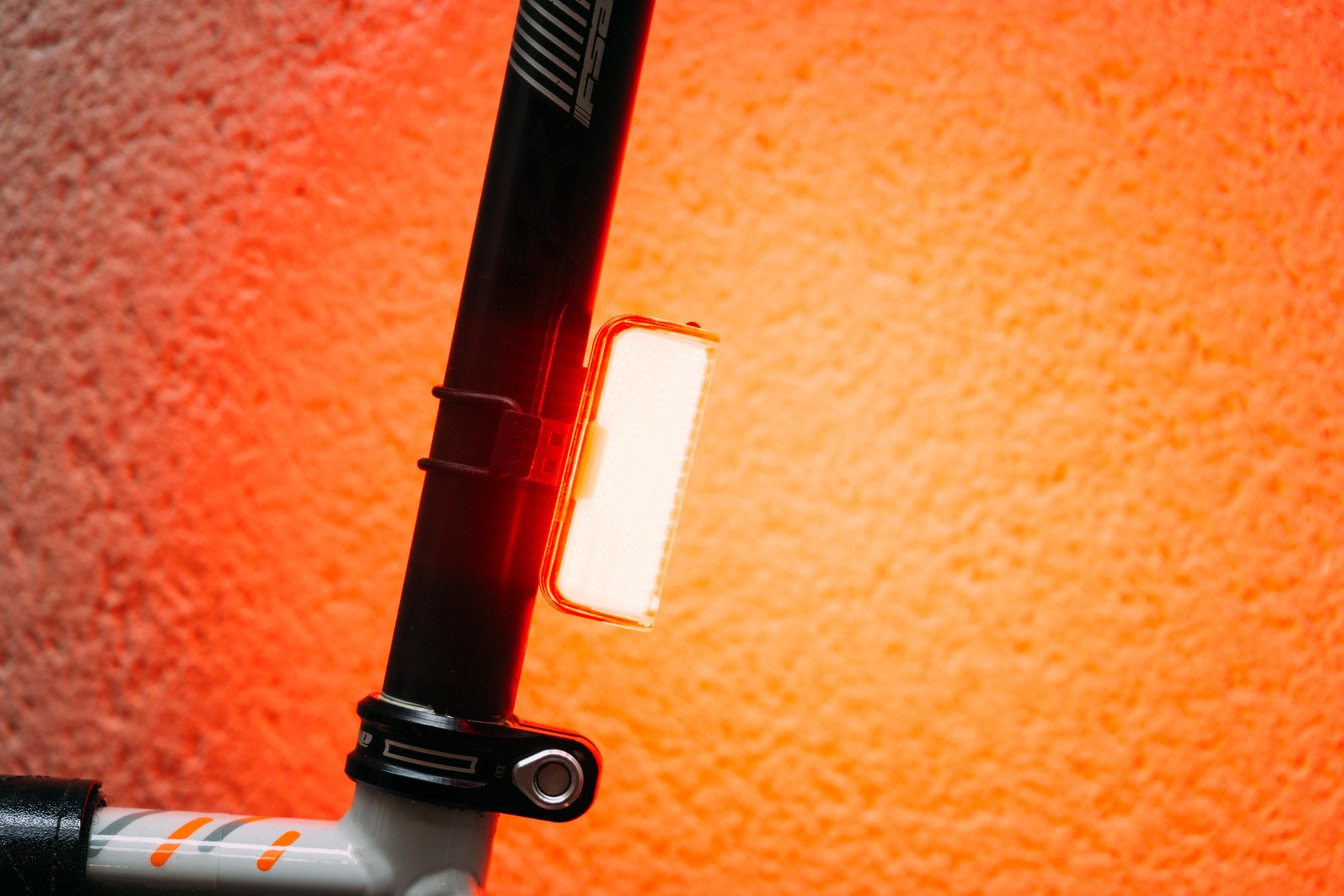
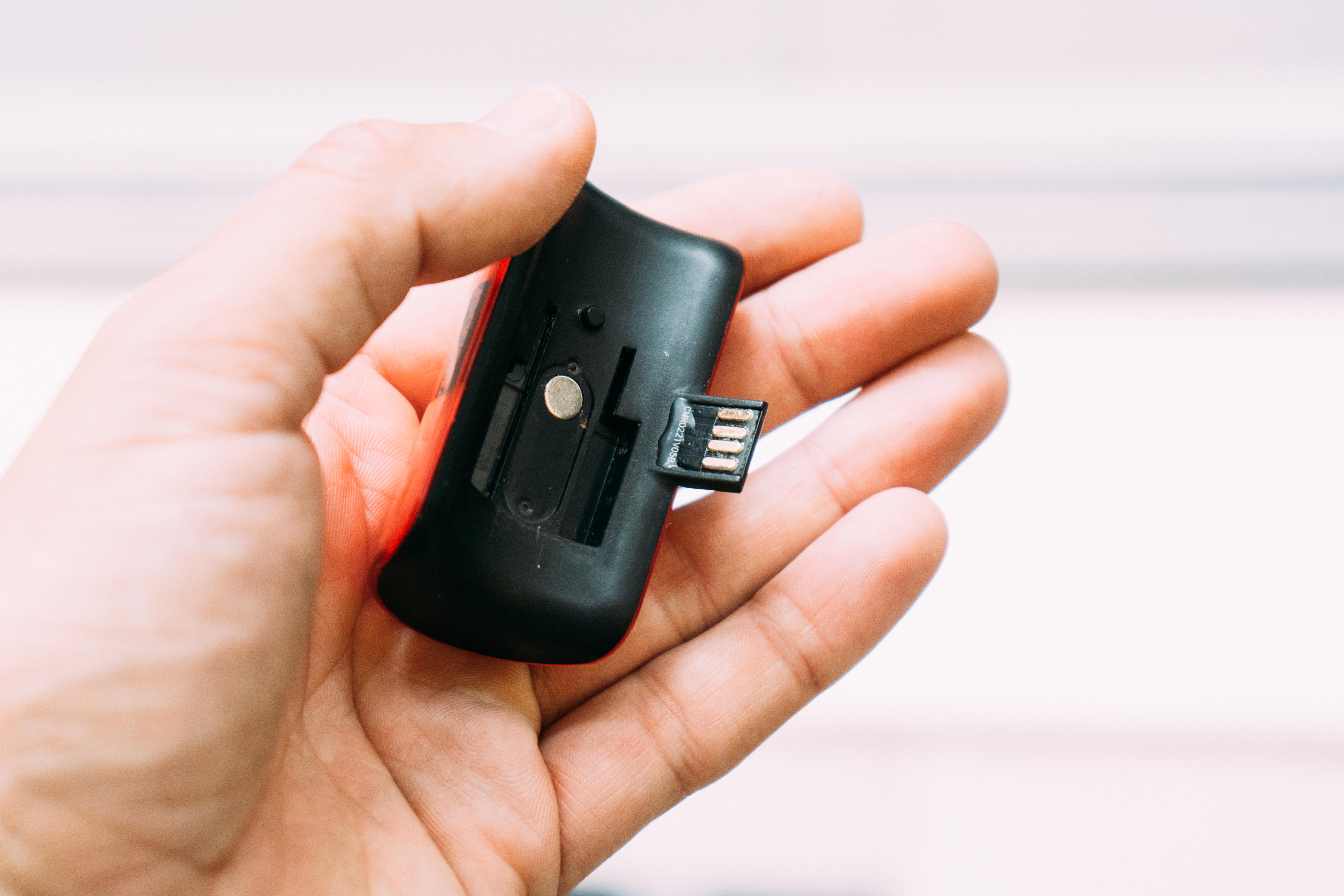
11. Knog Mid Cobber
Specifications
Reasons to buy
Reasons to avoid
✅ You want maximum side visibility: The wraparound nature of the LED array means it's not just a bit visible from the side but almost as visible as it is from the rear.
✅ You're have an aero seatpost: An aero seatpost mount comes in the box as standard, which many don't offer.
❌ You don't have an easy USB socket handy: The direct USB connection for charging is kind of annoying in a world where USB-C is becoming the norm.
❌ You want a small form factor: It's not as chunky as the Magicshine Seemee 300, but it is much bigger than the beautifully compact Bontrager Flare RT.
City riding and just general night riding out on the road have different challenges. The city is generally well lit, so being seen from distance isn't necessarily such an issue, but there is a far greater chance of someone (in a car, primarily) coming towards you perpendicular to your direction of travel, and so side visibility is much more important.
If you're wearing one of the best cycling backpacks you could clip auxiliary lights to the sides, but you could also use the Knog Mid Cobber (a smaller Lil Cobber and taller Big Cobber are also available). They basically take the same LED array as in the Blinder Rear and bend it around your seatpost, so the outermost three or four strips of LEDs on each side are facing directly outwards.
This, in combination with a series of novel flashing patterns where the sides can flash and the centre stays solid, for example, really help you be seen from a greater range of angles. There is an identical set of white versions for the front, which you can mount to your head tube, though side visibility from the front is slightly less of a concern as you will at least have a better chance of seeing what's coming towards you.
Like the Blinder Rear I found the direct USB connection to be a bit of a pain, and in a world where most lights can be charged by plugging into a USB-C lead from a laptop the Cobber is less convenient. You won't ever lose the cable, but if you're like me you've got about 10,000 random USB-C cables in a drawer already.
One great thing is that an aero seatpost mount is included in the box, so for riding aero bikes, whether commuting or otherwise, you are covered without having to find an aftermarket solution.
Best rear bike light for daytime running
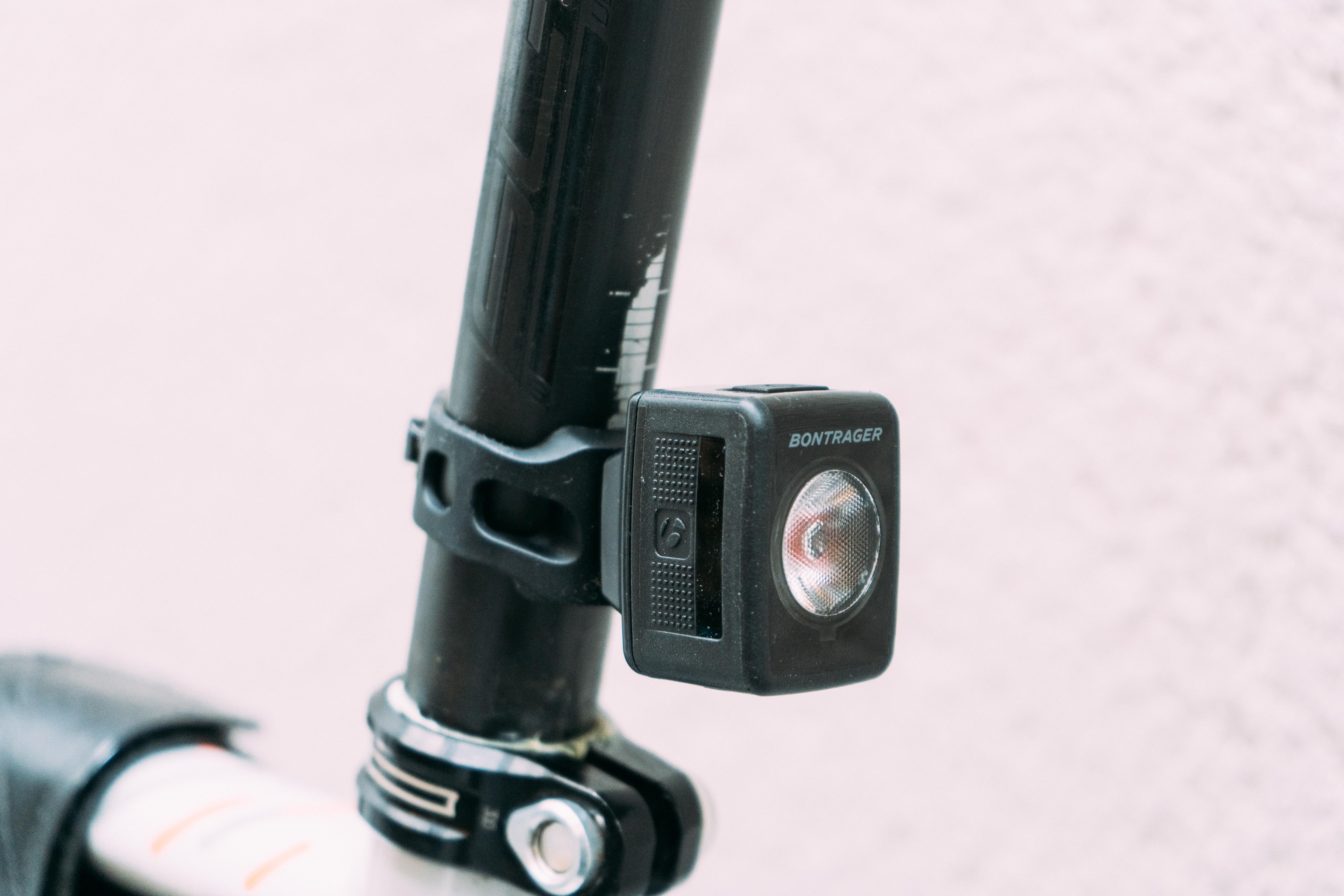
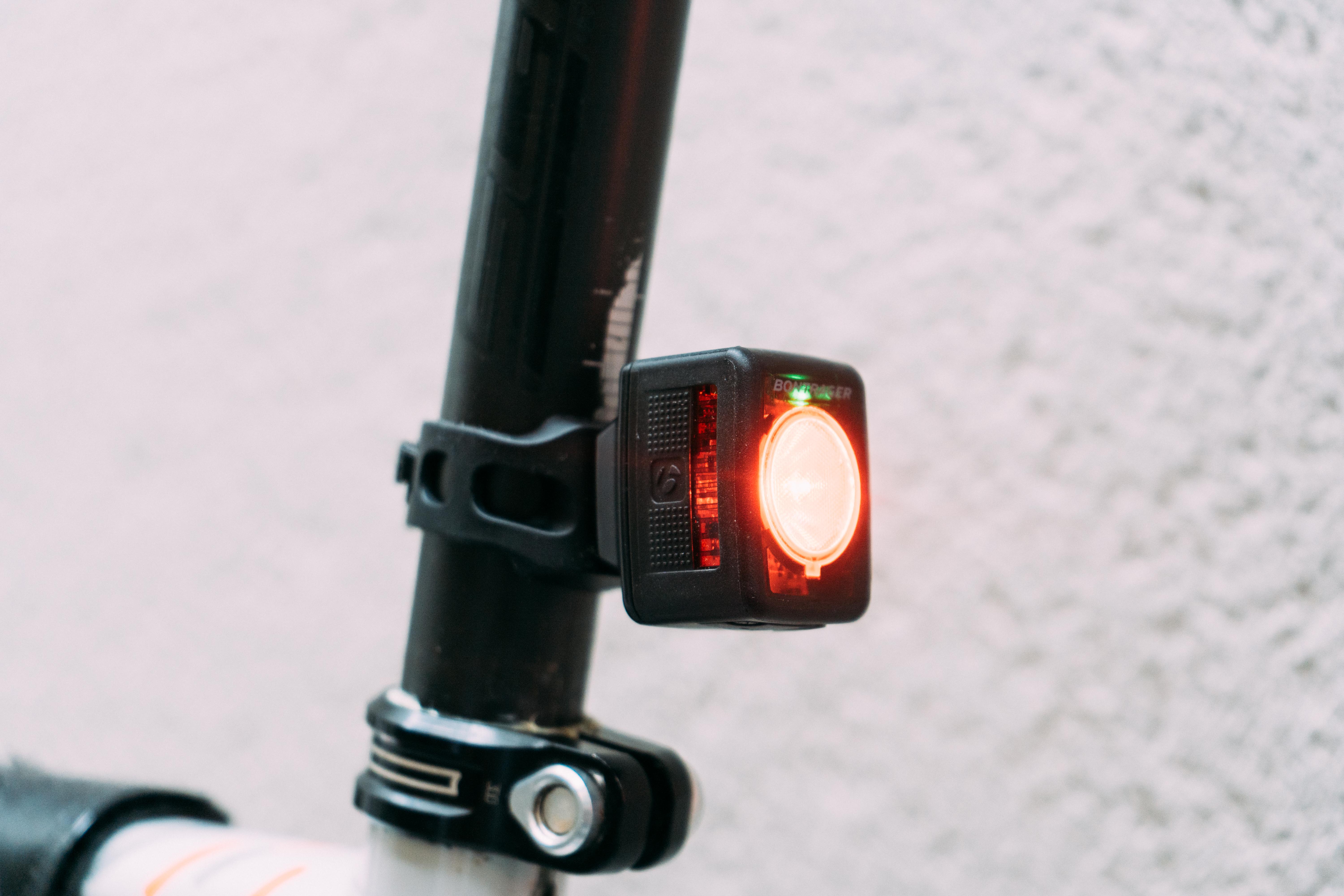
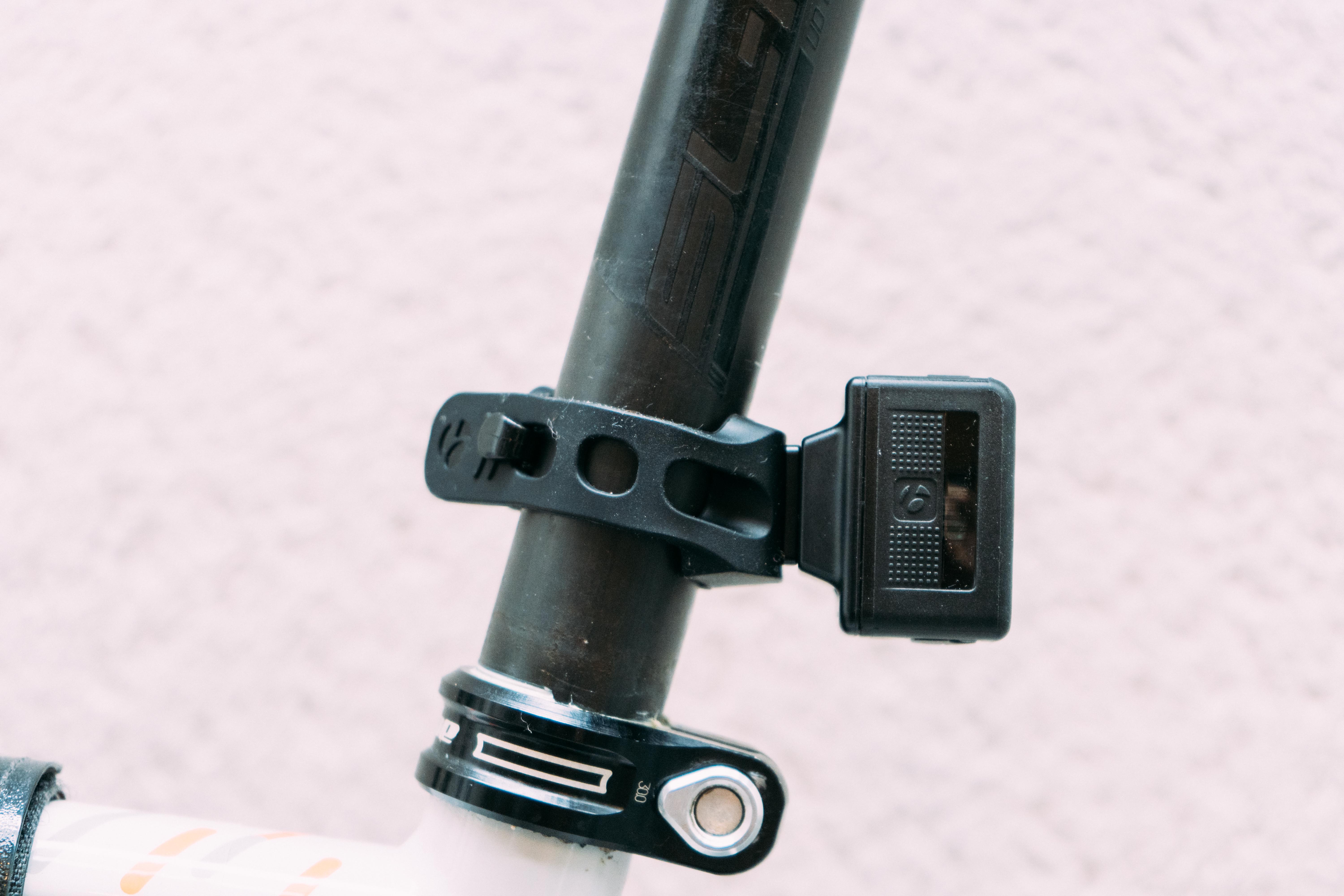
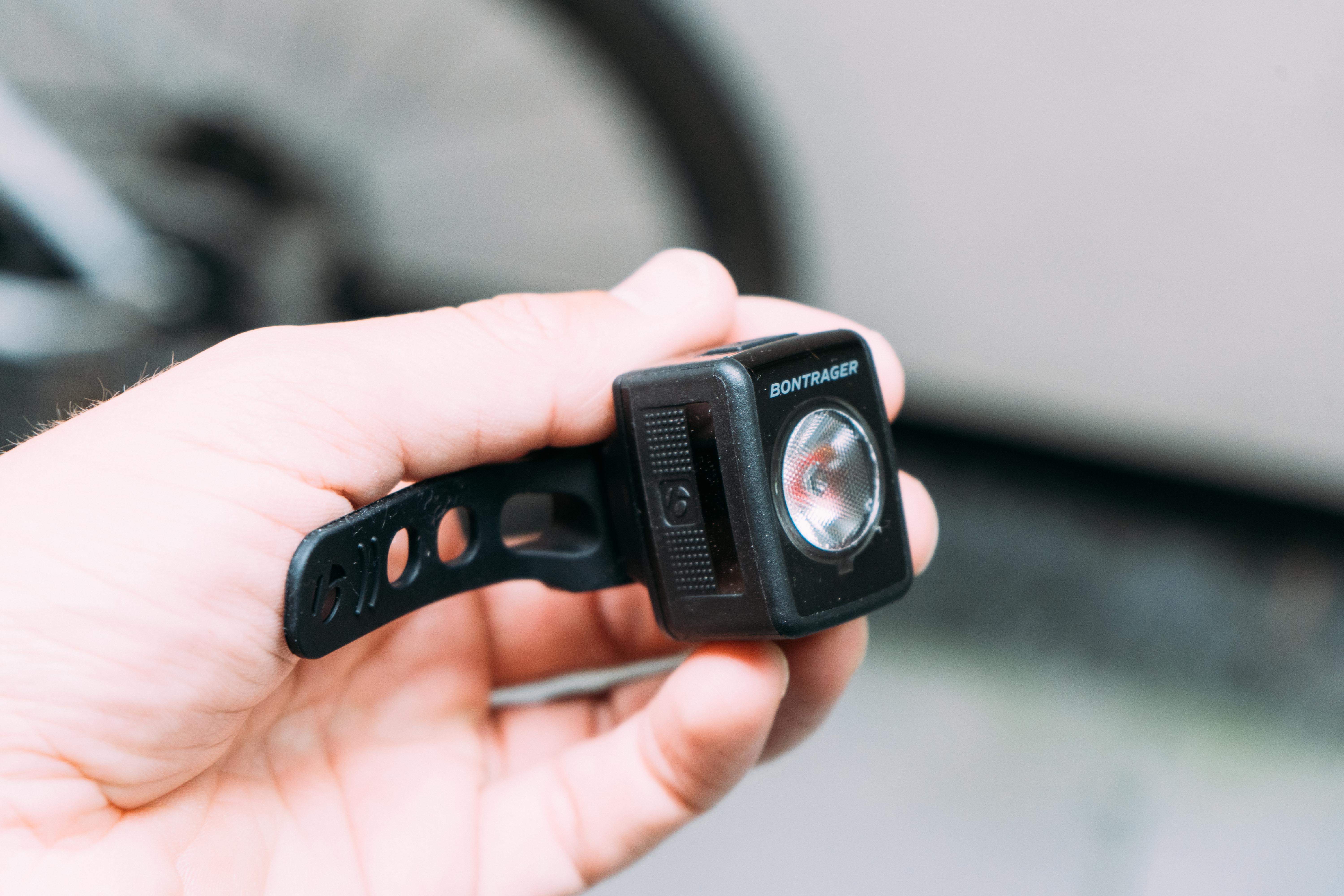
12. Trek Flare RT
Specifications
Reasons to buy
Reasons to avoid
✅ You want to run a rear light in the daytime: If daytime visibility is your concern then fitting one of these to your seatpost is only going to help.
✅ You want a small package: The Flare RT is small, and totally unobtrusive, especially given it is out of your eyeline.
❌ You want maximum brightness: It isn't the brightest light of the bunch, but that isn't its aim. It's there to catch your eye during the day, not mimic a solar flare. Keep scrolling down to the Lezyne Strip Drive Pro if you want all-out power.
❌ You're riding a lot at night: For proper night riding you're going to want something with a bit more power.
Everything that is the case for the Trek Ion 200 is also true here, but red. The two are also sold as a pair and make a brilliant daytime running combo that you can easily fit and forget about.
You get the same disruptive flash pattern, and the same beam that is more focussed rearwards than outwards with the aim of catching drivers' attention from a long way out rather than at close range from all angles.
The relatively low power does mean I wouldn't necessarily want to run these as my primary night riding lights, though they'd get you home as an auxiliary in a pinch. The low power, on the flip side, means they can be made to have a very small form factor without ending up with a tiny battery life.
Just like the Ion, you can mount the Flare to a helmet without adding any tangible weight, and the same drawbacks in terms of it using the older Micro-USB exist. I'd treat them like a pair to be honest with you, as if you want daytime visibility up front you probably want it from the rear too, perhaps even more so.
Most powerful rear bike light
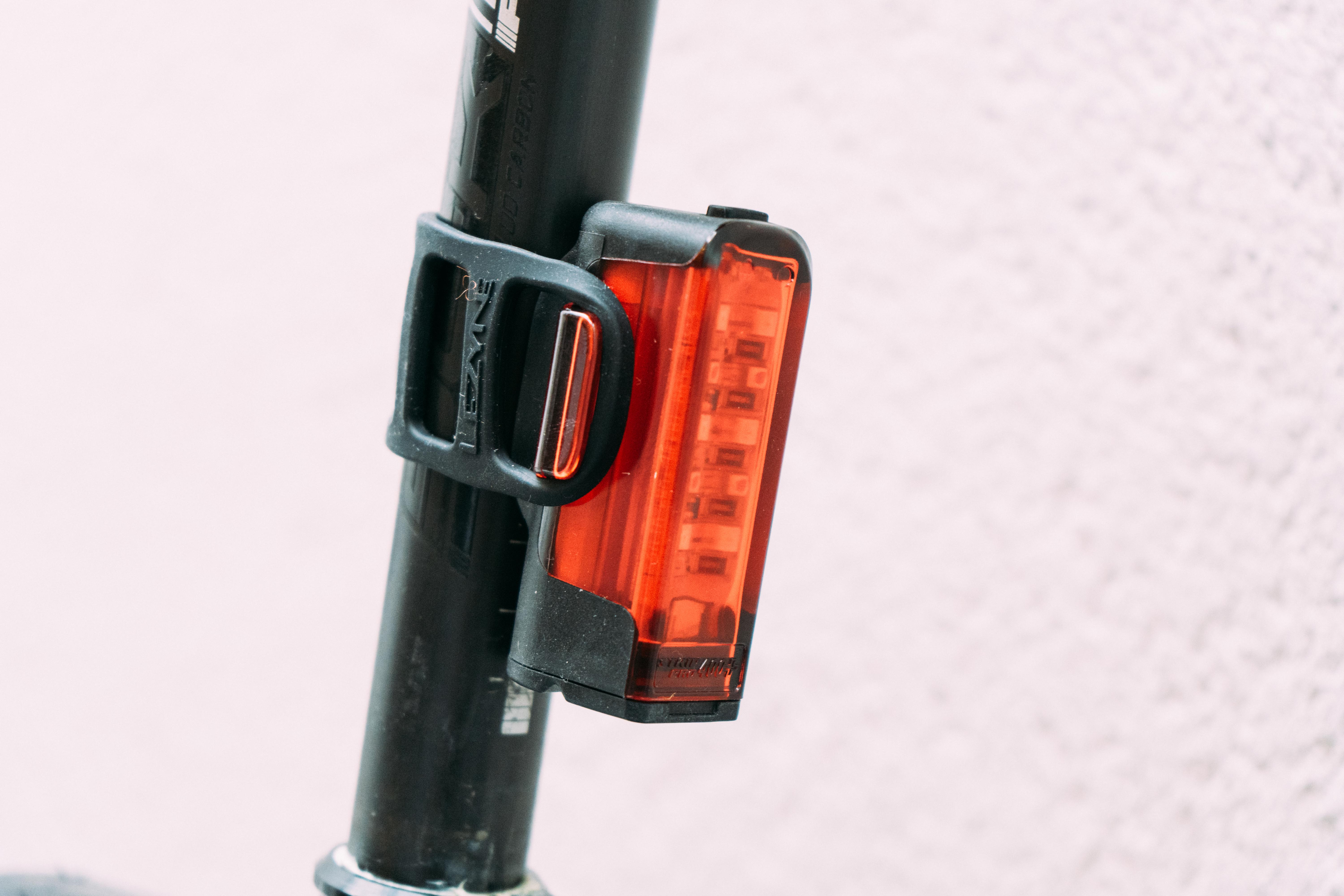
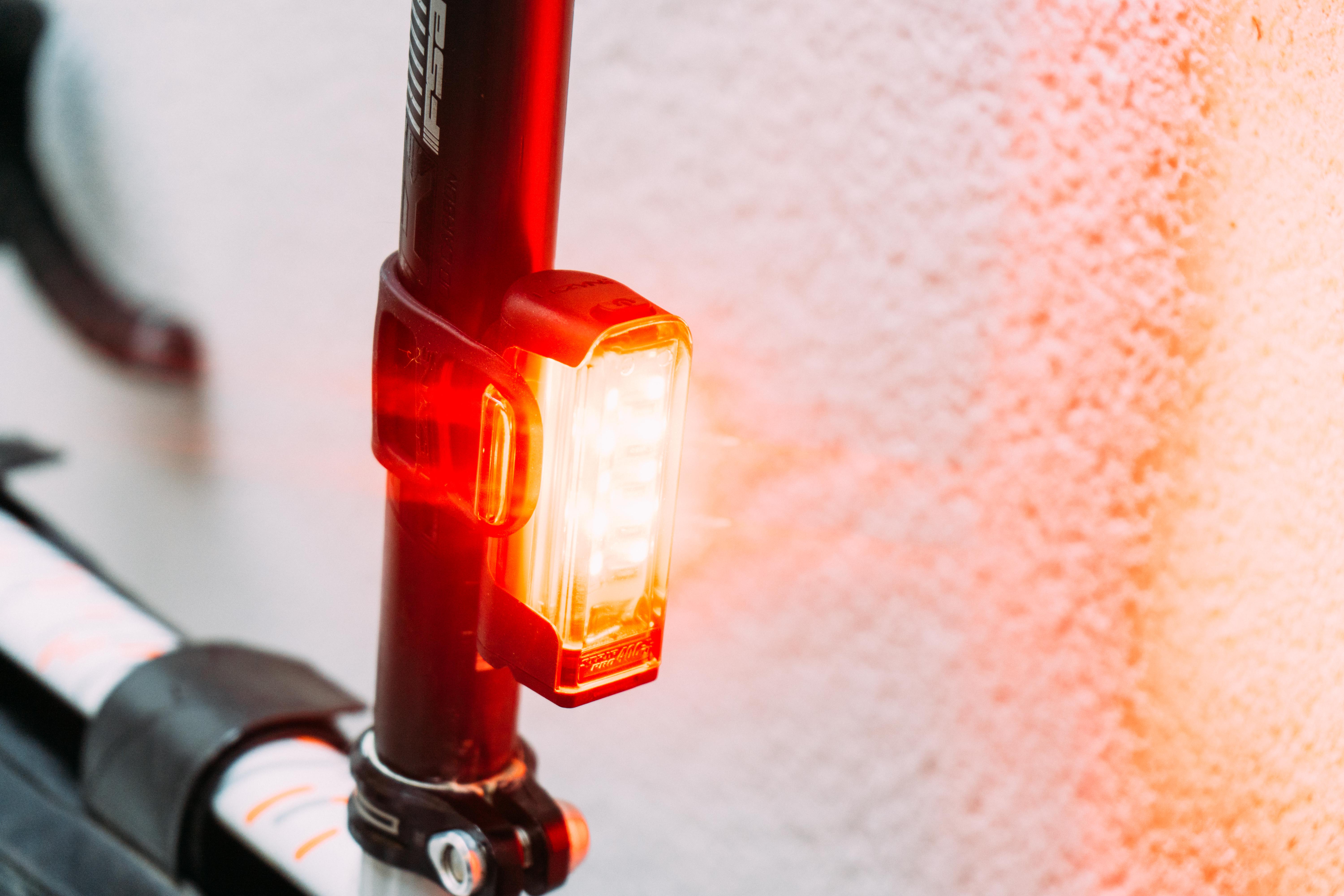
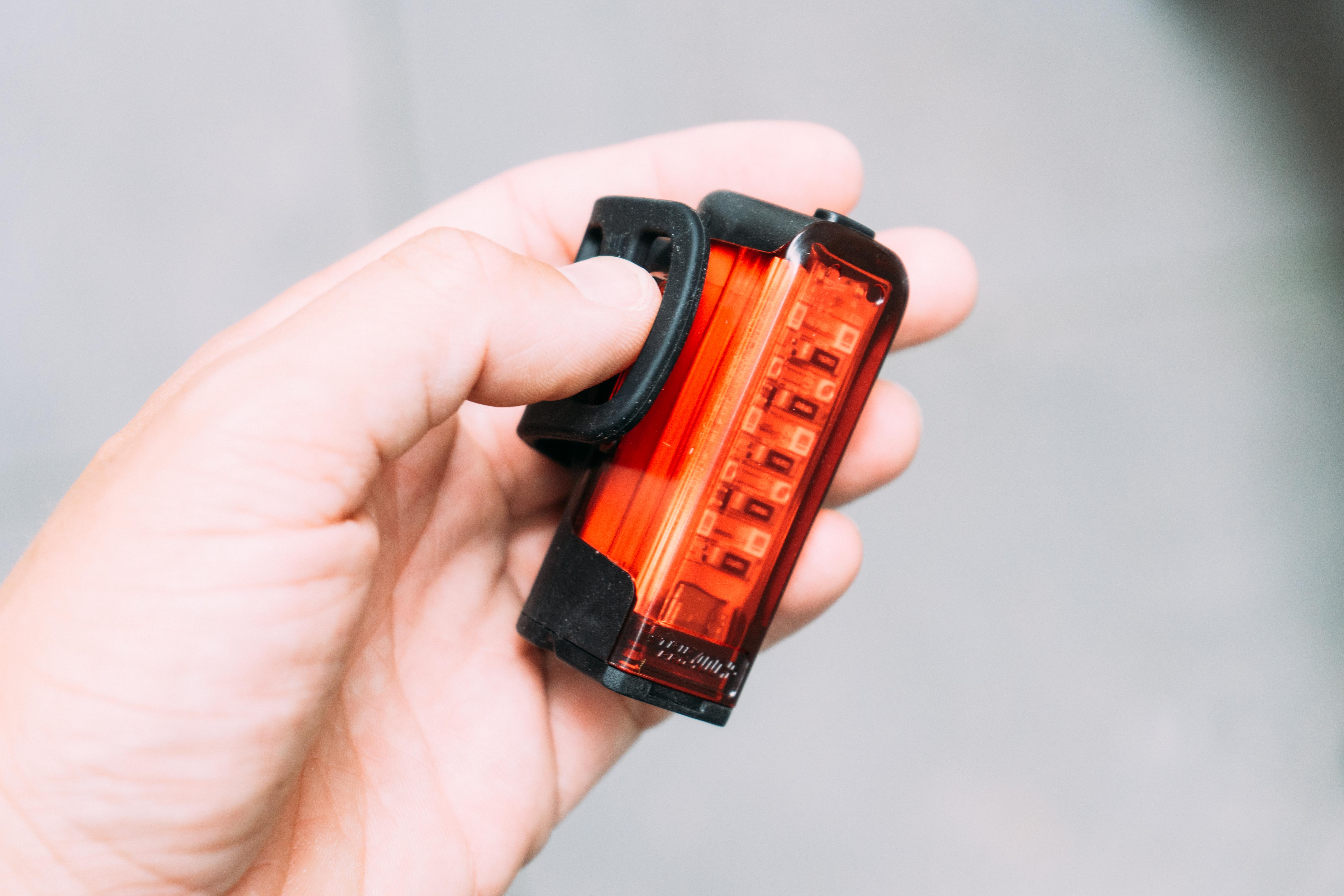
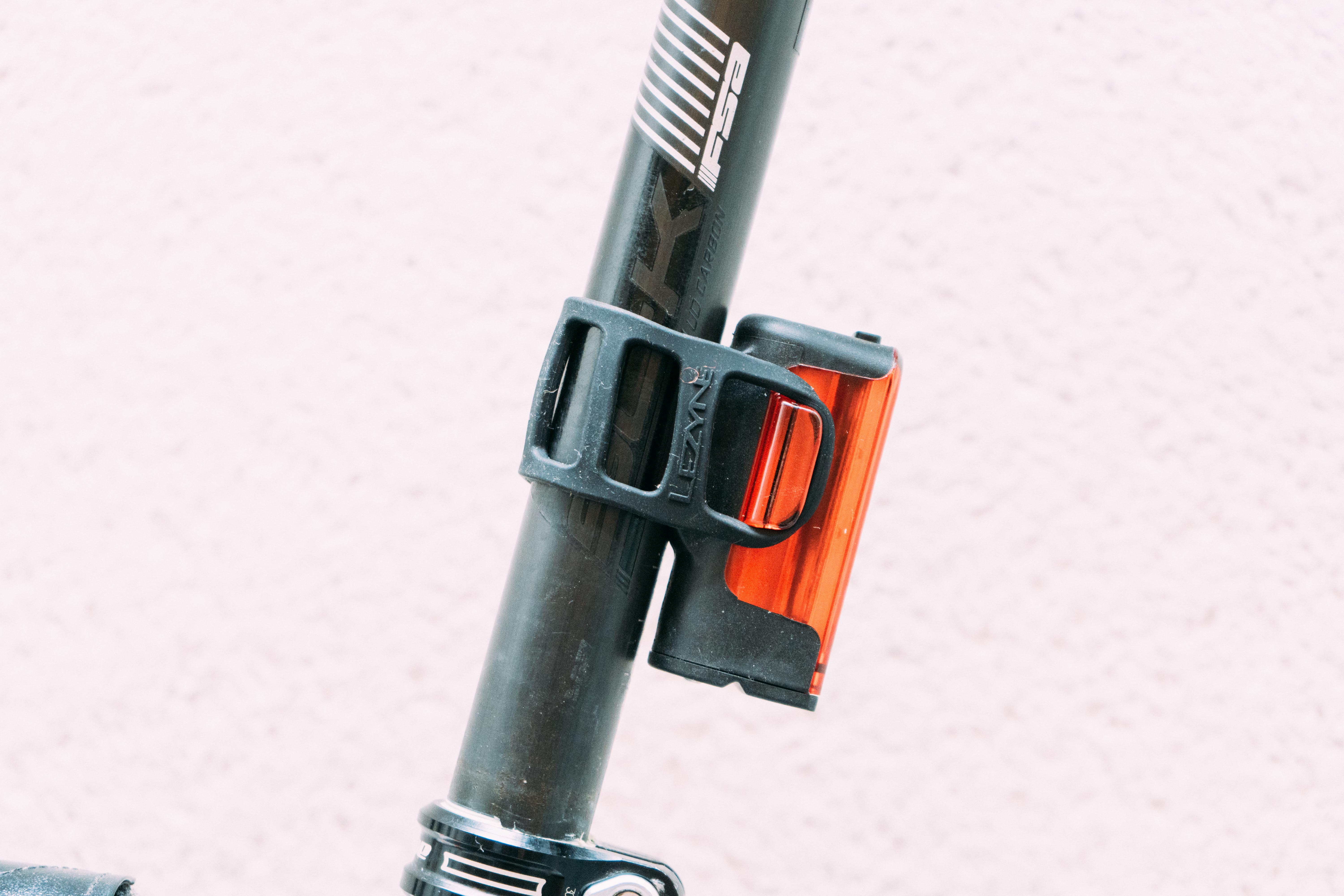
13. Lezyne Strip Drive Pro 400+
Specifications
Reasons to buy
Reasons to avoid
✅ You want the brightest rear light: It's the brightest by the lumen count, and if that's what you're after it is hard to look past it.
✅ You have an aero seatpost: The body design means the light can fix to round, D-shape, and bladed seatposts with the same rubber strap.
❌ You want a simple mode choice: With seven options on tap it can be confusing to get to the one you want quickly.
❌ You ride in a group often: Anything involving the highest 400-lumen output, whether in a flashing pattern or solid, is too bright for group riding. Lower power modes are available, but if you're commuting on busy bike lanes you're still going to be dazzling other road users.
There isn't anything wrong with wanting to fit the brightest rear bike like you can buy in an attempt to stay visible. If that's what you're after then the Lezyne Strip Drive Pro 400+ is the place to go. Its maximum 400 lumen output is massive, several times greater than some on this list, but with that added power does come some drawbacks.
On country lanes the added brightness will make you more visible from further away, but if you are running it at full power with anyone in close proximity behind you for any length of time (traffic, either bike traffic or cars) and you may run the risk of dazzling other users. SImilarly, it's overkill for group riding, though you can of course select a setting that doesn't use all 400 lumens, which is primarily there for daytime visibility.
The lower power flash patterns for night time use 80 or 50 lumens, though I am still tempted to just put it at least on the 200 flash for darker riding. In a city the ambient light is greater so there is less contrast if you find yourself overpowered.
There are seven modes on offer, and remembering which one you want takes a bit of dialling in. Cycling through them all takes time, and trying to watch the light for what it is doing does leave you a little stunned - it could really do with a shortcut double-press to cycle between flashing and solid modes I think.
Best rear bike light for safety
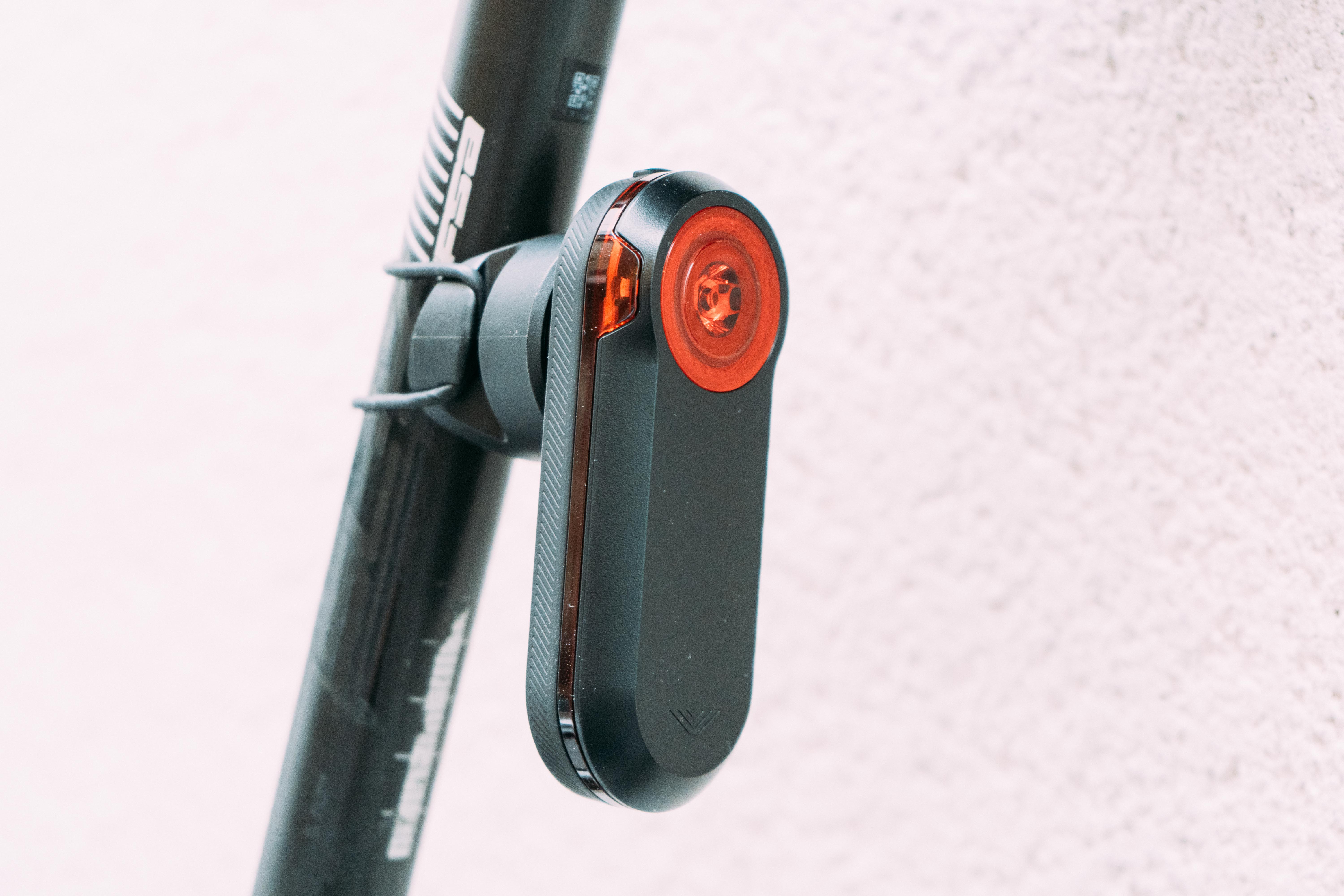
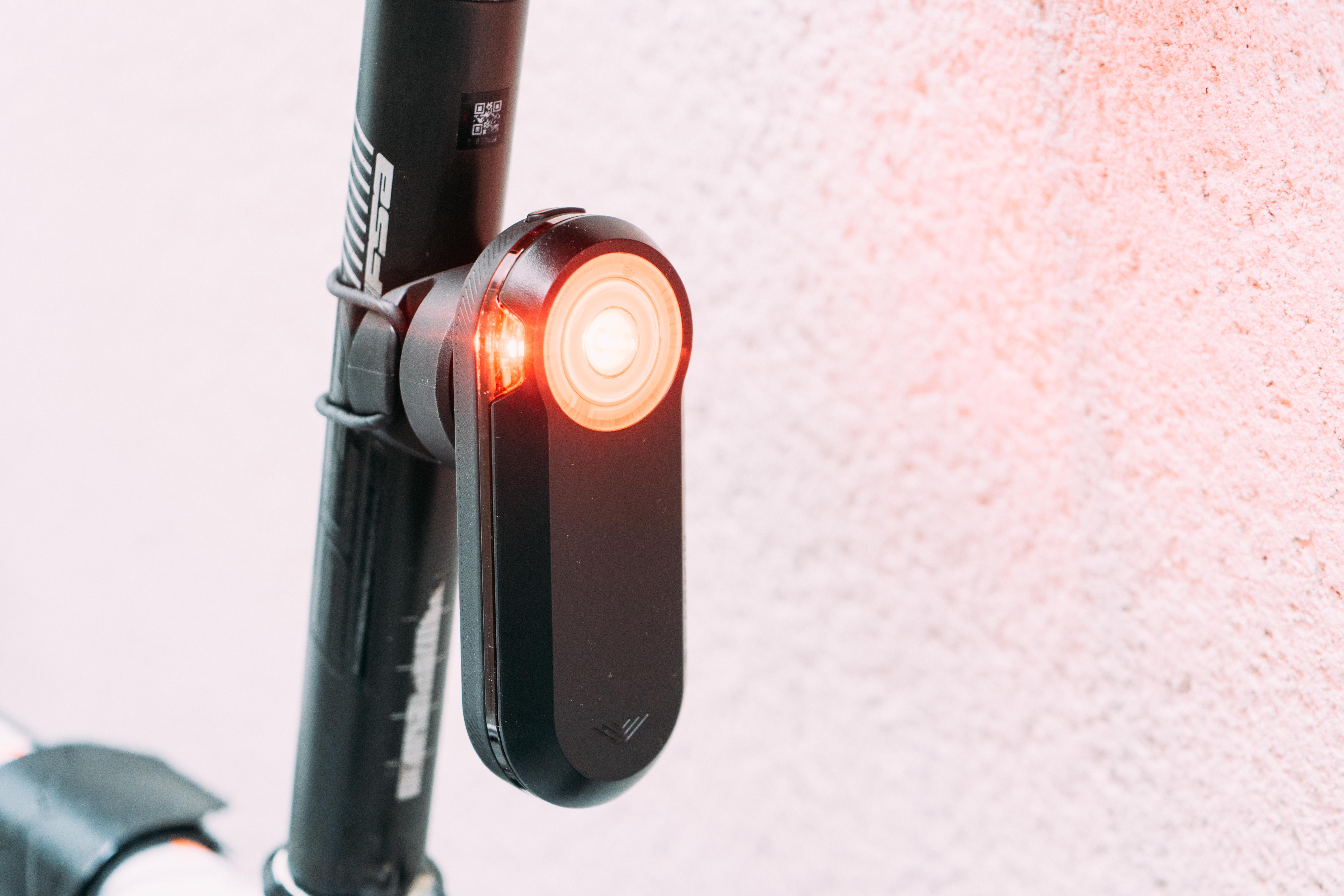
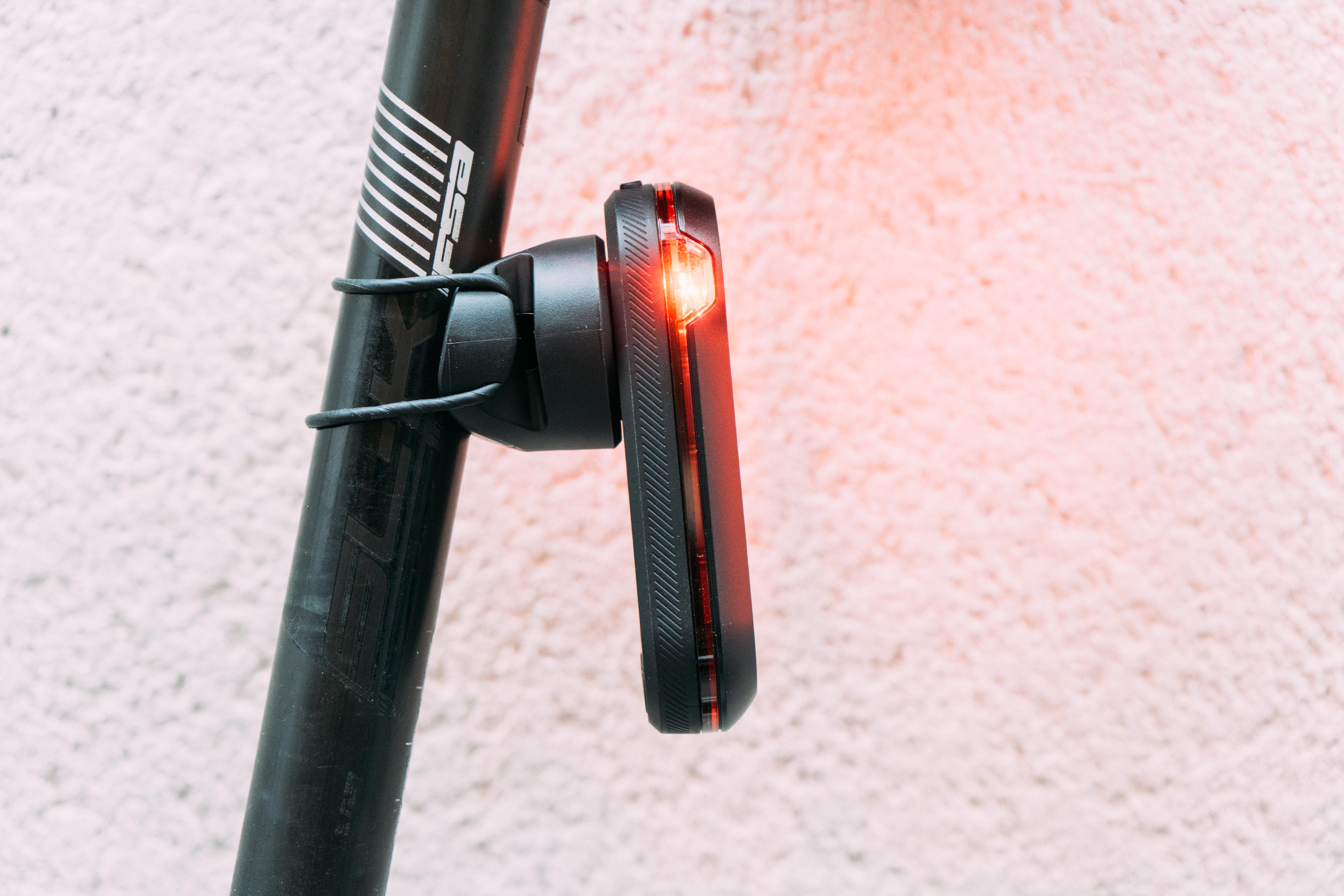
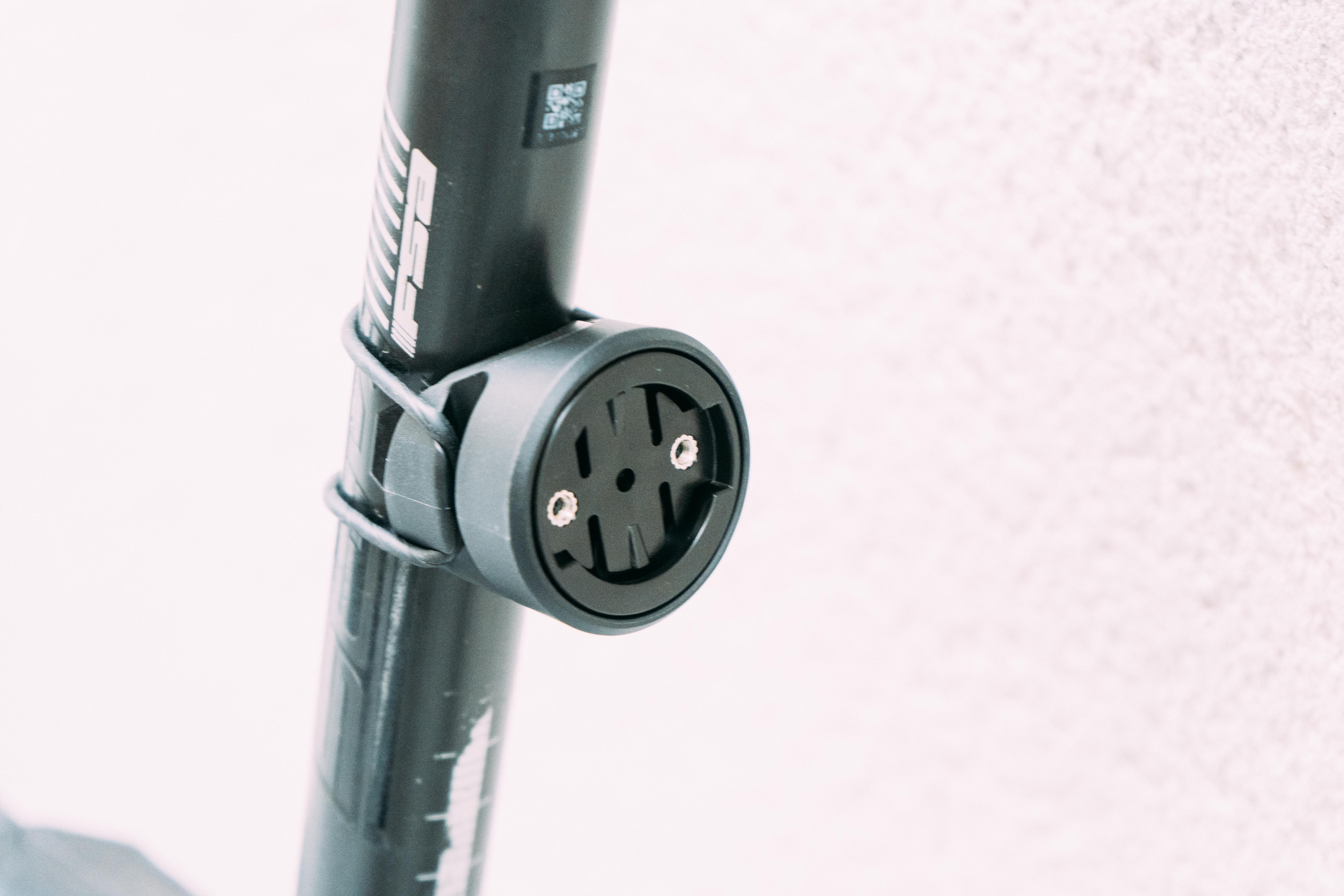
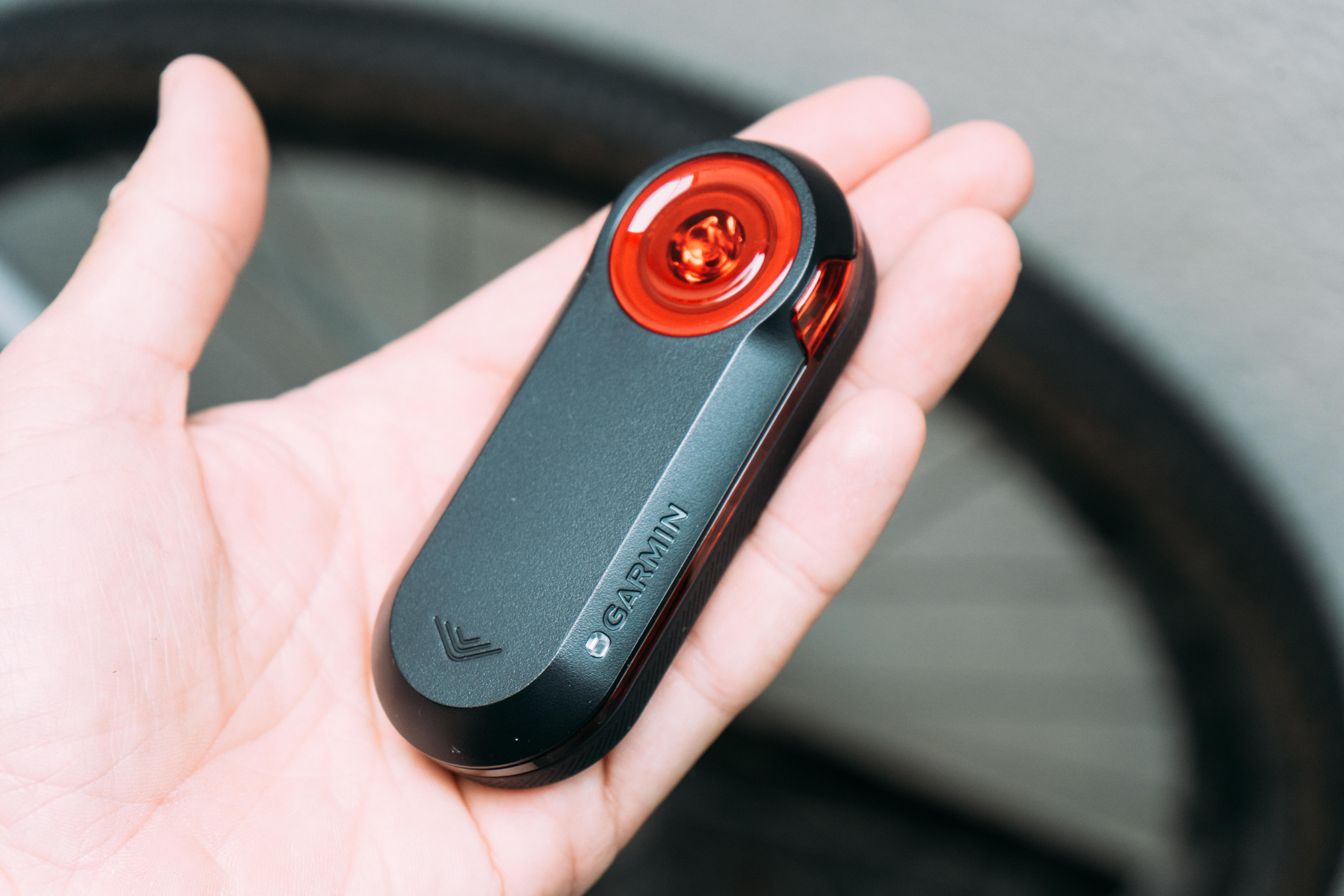
14. Garmin Varia RTL515
Specifications
Reasons to buy
Reasons to avoid
✅ You want to know when cars are coming: The inbuilt radar pairs with your cycling computer and gives you a warning of when, and crucially how fast cars are approaching from the rear.
✅ You want an adaptive light: Not only will it warn you of approaching vehicles, but the light will adapt accordingly to warn the vehicle of your presence.
❌ You want an easy, fit and go system: The Varia requires a bit more setup, and pairing to a device before you can get the most out of it.
❌ You're after a budget option: As rear lights go it's among the most expensive, but the added safety features are worth it if that's your aim.
Making other road users (by which I mean cars) see you is the number one aim of any rear bike light. without a mirror you can't see cars coming towards you from behind... Unless you're using one of the new cohort of radar-enabled lights. Of the slew out there the Garmin Varia RTL515 is the original and the best.
Ignoring the light for a second, the system, mounted to your seatpost or beneath your saddle rails, not only detects when a vehicle is approaching you from behind, but also at what speed. If a car is going to hit you then, sadly, it's not going to stop that from happening, but I find one of the worst things about cycling is when someone close passes you at speed. With the Varia you'll have an early warning system on your head unit, which is often worth its weight in gold.
There are three Varia radars. One without an inbuilt light, which I think is a little pointless nowadays, this one with an integrated light, and one that also has an integrated camera. Unless you are dead set on filming your rides for evidence the RTL 515 offers most of the benefits of the system without the additional upcharge, and so I think it's the better purchase.
In much the same way as the Boost-R, the Varia integrated light can react to what it is 'seeing', flaring up when it detects a vehicle to warn them of your presence, and dimming when riding in a group so as not to dazzle other riders.
If you want to know more about the Varia system then head to our review Garmin Varia RCT715 rear light. It is the camera-enabled one, but the system is the same and that way you get a flavour of both options.
Also consider
Front lights
Magicshine Ray 2600: Likely a viable contender for the best overall, but for now I haven't tested it sufficiently to make that call yet. Relatively inexpensive for the brightness, a wireless remote, auto-changing brightness, app customisation, mounts included for mounting it under an out front mount, and you can use it as a power bank too.
Trek Commuter Pro RT: Another really great option with a well-shaped beam. As the name suggests it's primarily designed for commuting, and so unlike the Outbound Detour you can't mount it under the bars, and you can't charge it up while it's in use. If those things don't bother you then it's a great buy and can be picked up a lot cheaper than the outbound option when it's on sale.
Magicshine Monteer 12,000: Insanely bright - the brightest on the market in fact - but with such an enormous battery pack that it renders it massively overkill for all but extreme mountain bike scenarios. You can charge your laptop from it though.
Exposure Toro: To me this was caught somewhere between the brand's Race and Maxx-D models. If you want more light than the Race can offer then the Toro offers many of the same advantages, in a slightly bigger, slightly heavier package with another bulb.
Knog Blinder 900: Essentially the same as the Blinder 600, but brighter. If you like the sleek look then brilliant, and it's a decent light, I just found that for a light of this brightness you are perhaps more likely to sling it under a computer and the Ampp900 mounting system, while it requires an adapter, felt a little more secure.
Rear lights
Garmin Varia UT800: A smart headlight with the same name as the popular rear radar, the UT800 can automatically adjust the brightness of the beam depending on your speed. In order to achieve this it needs to be paired with a Garmin head unit, so Wahoo/Hammerhead users this is probably one to steer clear of.
Magicshine SEEMEE 100AD: The little brotherx to the SEEMEE 300. Smaller, and without the downward facing light, but still packing a lot of features in, including a rear radar to automatically flare up when a car is detected. Another one with the potential to jump into the top list with some testing.
Garmin Varia RCT715: Essentially the same as the Varia in the guide, but with an added camera. It's as good at being a radar and a rear light, but you'll be able to capture any particularly egregious drivers in the act.
Exposure Blaze: Much like the Boost R, with the same features, just in a slightly bigger, slightly more expensive package and a corresponding jump in maximum brightness.
How to choose the best bike lights for you
After all my hard work you still aren't sure what you need? That's ok, let's work through it. If you are only commuting, or only really riding in the city then you really don't need an all-singing all-dancing option like the Exposure Strada. There's enough ambient lighting from the streetlights, cars, and businesses that being seen is usually more important than seeing. Something around 600 lumens like the Knog Blinder 600 is perfect for this, as it's inexpensive, bright enough, and portable between bikes.
If you want something a bit brighter because, like me, your commute involves some unlit areas, then bump this up to 900 or 1200 lumens depending on how well lit you want. For years I used an 800 lumen light everywhere and while it wasn't ideal it did the job just fine.
You only really need to start investing heavily in posh lights like the Exposure Strada, Exposure Race, or even the Outbound Detour if you're spending longer riding in the dark then the occasional trip to work. If your winter recreational rides only really start or finish in the dark for an hour or so then you can get away with a relatively inexpensive option. The Strada especially is a brilliant bit of kit, and if you can afford it then it can open up a whole new world of night time riding, but be honest about your use and you might save yourself some cash.
At the rear things are more simple. You don't need to worry about seeing, only being seen, so everything is much the same in terms of brightness. The Lezyne Strip Drive Pro is so bright to make it useful in the daytime, so don't be concerned that a rear light of 'only' 100 lumens or so isn't going to be visible in the dark; it is.
You basically have to choose your feature here: Price, burn time, maximum brightness, size, or added side visibility. Generally speaking each does one of these the best, but all are good enough to be considered excellent general use options.
Smart lights are great if you can take the time to invest in setting them up. Rear radar is excellent from a safety standpoint, and auto-adjustment of brightness is a great way to conserve battery, but again, if you're only riding in the dark for an hour or so then do you need to pay for incredible battery saving tech?
What kind of bike light do I need?
Show answer ▼
If you're just commuting then a basic set of clip on front and rear lights will do, about 50 lumens for the rear and 400-600 for the front. For road riding look to get a more powerful front light, up to about 1,200 lumens, that'll allow you to see on poorly lit or unlit lanes when the need arises.
For gravel, bump the front lumen count up to about 1,500 or more depending on your speed and the technicality of the terrain.
Do I need a smart light?
Show answer ▼
Smart lights is just a catch all term for lights with automated features. Many in this guide have them: Auto-dimming, auto-brightening, radar, brake light functionality, pairing with other lights etc. These features are all good if they're what you want, but they're just added extras. If you just want a light without bells and whistles then that's fine too if it fits your use case. Most smart lights are also able to operate as 'dumb' lights too, future proofing you to some degree.
What is a lumen?
Show answer ▼
In simple terms a lumen is how bright something is. Technically it is the measure of 'luminous flux', with one lumen being equal to one candela of luminous intensity, in the visible spectrum, over a solid angle of one steradian.
There's a load of jargon in what a candela is, but all you need to know is that it is basically the brightness of one normal candle. A steradian is a maths-y term for a cone projected out from the central point of a sphere.
To bring that all together, a lumen is one candle's worth of visible light projected out on a predetermined cone. It doesn't actually measure 'brightness', as that is determined by distance from the light source too, but in the real world, a light with more lumens is going to be brighter.
How many lumens do I need for a bike light?
Show answer ▼
Now we know what a lumen is, how many do we need? Generally speaking a rear bike light should be at least 40-50 for night riding, up to 400 for daytime visibility.
A front light for commuting should be at least 200 lumens, though in my opinion 600 is the sweet spot for commuting so you can actually see where you're going for short, darker sections. Up to 900 lumens will stand you in ok stead for general after dark riding, but if you want to enjoy yourself and not squint then I advise you to for something over 1,000.
If you're riding off road, where the environment is naturally darker thanks to tree cover and being away from light pollution then you'll want 1,500 at least. More will make your life easier, but you only really need to get into 3,000 or more when you're riding faster, or on more technical terrain.
Mega-lumen setups like the Magicshine Mounteer 12,000 will basically allow you to forget that it's night time for a bit and ride as normal, but there's a significant weight penalty and I really don't recommend it for most uses.
It may feel correct to think that your lights for being seen should be brighter at night, but if daytime visibility is your aim then the brighter settings are there for daytime, where the contrast between the bike lights and the ambient light is greater.
What is the law for bike lights?
Show answer ▼
The law differs from country to country, and from state to state, but as a rule you should run at least 'be seen' light front and rear during the hours of darkness even if you aren't legally obliged to do so. There isn't much more to it than that - to do otherwise is making what is already a risky activity even more so.
The only thing to note is that in Germany there are laws governing the shape of the beam of your lights so that they don't blind pedestrians and other road users. This comes under the StVZO rules, outlined below.
Should my bike lights be flashing?
Show answer ▼
A flashing light is more eye catching, and so will make you more noticeable to drivers. However, in the dark a flashing beam can make it harder for other road users to judge your position properly. In unlit areas a solid front beam is recommended, while the jury is out at the rear. A flashing front lamp is perfect to add daytime visibility.
An ideal solution is to have a high intensity 'be seen' beam at night, bolstered by a smaller light with a flashing pattern. Some lights have this system built in, with a constant beam that also flashes with a high intensity blip.
At the rear the same rings true, though the jury is out on the best way to set lights up. Personally I prefer the slower flashing patterns from the like of the Magicshine SEEMEE 300 or the Knog Mid Cobber, which are less dazzling.
What is a StVZO light?
Show answer ▼

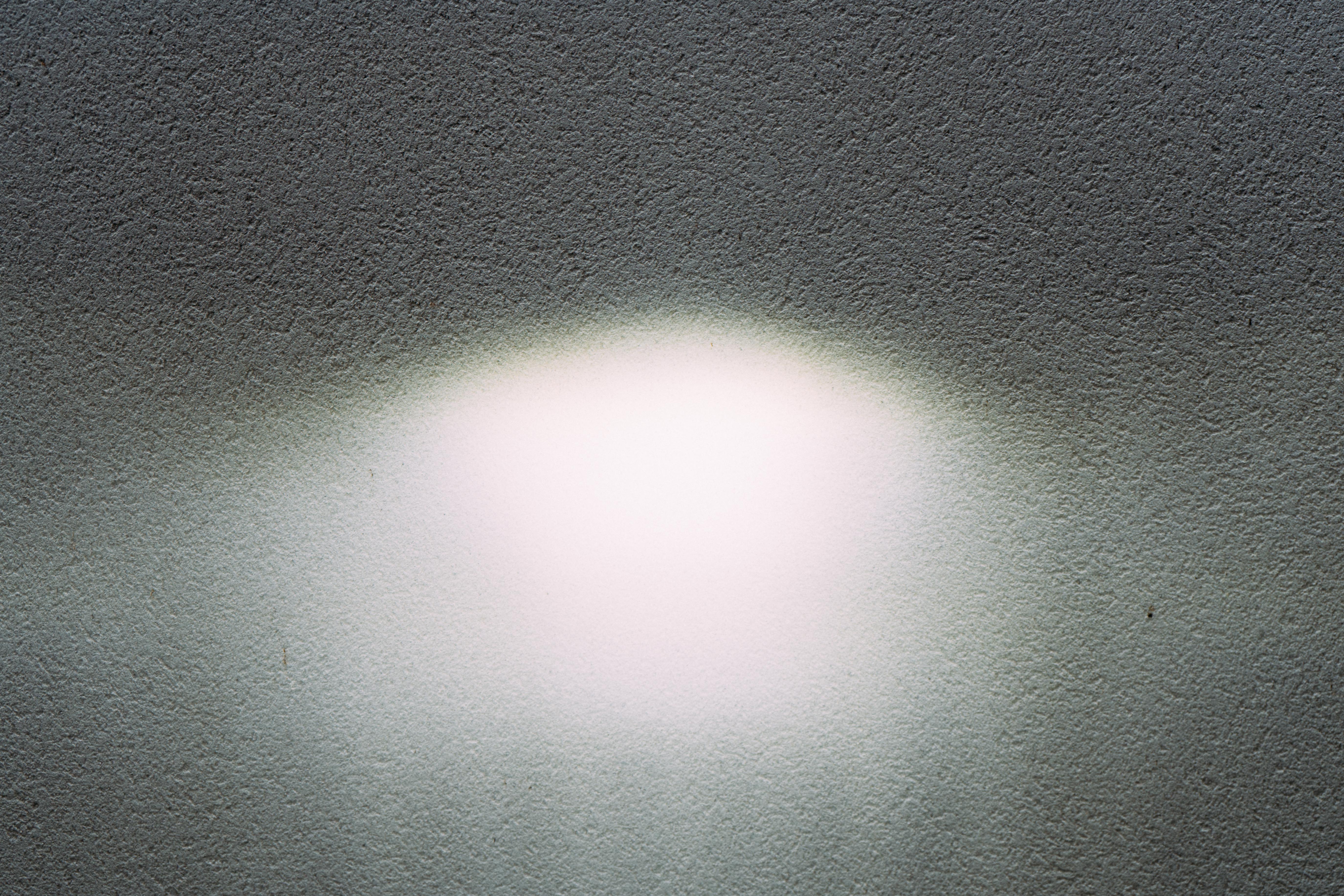
StVZO bike lights are named as such because they meet the requirements of Straßenverkehrs-Zulassungs-Ordnung, German Road Traffic Registration Regulations. They're specifically designed to shine a focused beam of light that points to the road ahead, rather than emitting a wide beam that spreads outwards and upwards and puts oncoming road users at risk of being blinded.
Basically StVZO lights have a sharp cutoff at the top of the beam. Plenty of non-StVZO-compliant lights also have a cutoff beam - the Outbound Detour for instance - but they aren't technically legal in Germany even though they fulfil the same function.
What about dynamo lights?
Show answer ▼
Those eagle eyed amongst you will have noticed that there are no dynamo lights here. If you're unfamiliar, a dynamo light derives its power not from a battery, but from the rotation of the front wheel, so as long as you're moving, you have light. They are rather more complicated, and so for ease they haven't been added here so as to avoid any unnecessary confusion.
I do use dynamo lighting myself on my own general tourer/commuter/do-it-all machine, and am extremely fond of my SON 28 hub and Edelux II lamp setup. It is about as good as dynamo lighting gets, but that's a discussion for another guide entirely.
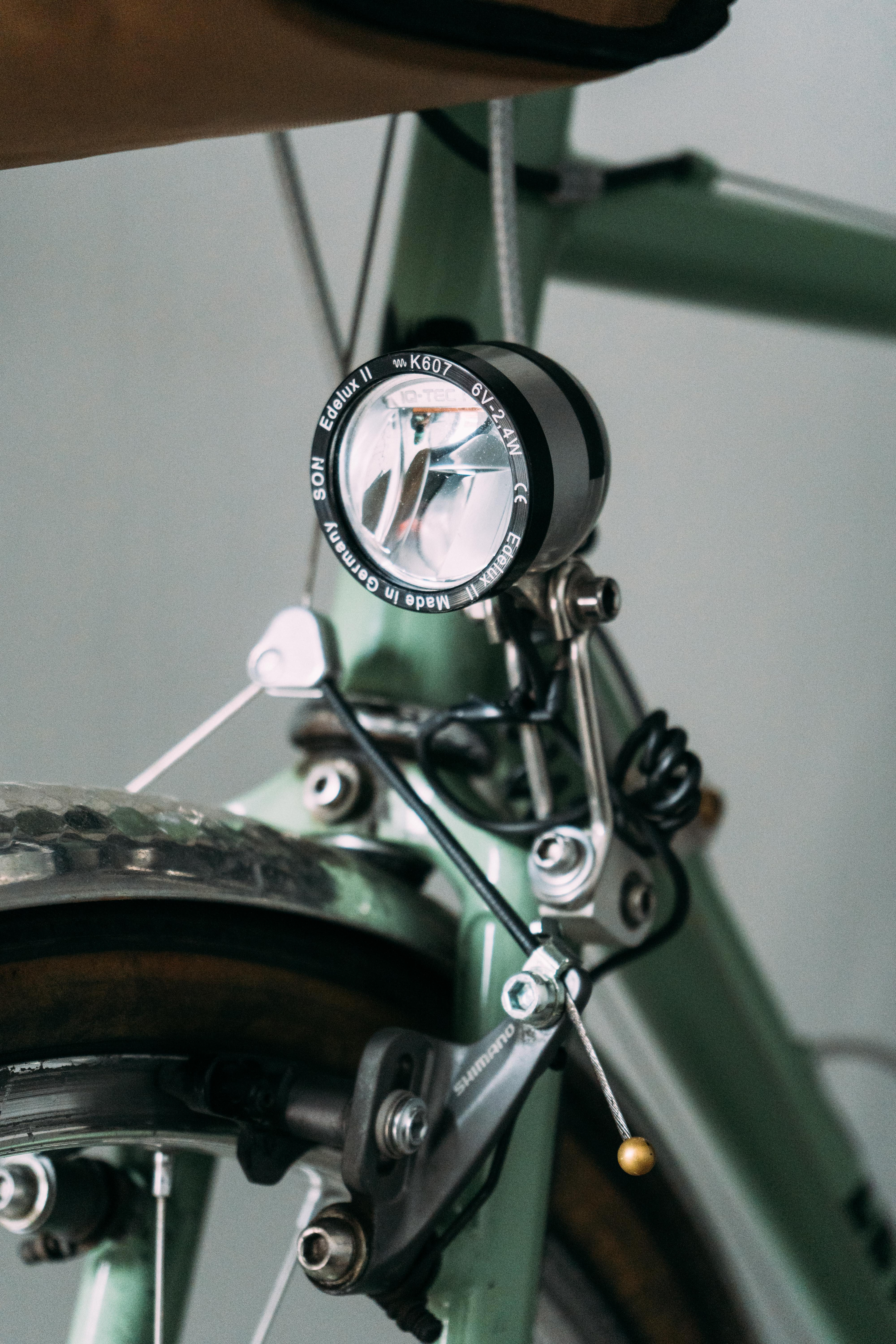
What is Lux and why aren't StVZO lights measured in Lumens?
Show answer ▼
In the majority of cases, the output of StVZO lights is measured in Lux rather than Lumens. Lux is used because it’s a measure of how much light is projected onto a surface (called luminance), whereas lumens simply refers to how much light can be produced.
Lumens is all about potential, but Lux is about how much light you can actually use in the real world.
Do I need backup lights?
Show answer ▼
Legally speaking you don't need one, and if you're meticulous about charging your lights up then you may well never need one, but if you're forgetful it may be a good idea to carry a small spare for at least the rear. Also, sometimes things break. All the lights here are of decent quality, but wear and tear can affect all tech, and having a light that isn't working is legally and from a safety standpoint the same as having no light at all.
A lot of modern lights will have a 'get you home' feature where if the power drops below a certain level then the light will automatically drop to the lowest drain setting so it preserves what little juice is left.
Rather than simply carrying two rear lights for example, I like to integrate an extra set in a neater way. Cateye makes some excellent tiny lights that clip into the ends of your handlebars. They are dirt cheap, and while prone to getting stolen they do make you appear much wider to cars than a single light source.
Likewise, an additional helmet light is always helpful, and unusual lighting like that on offer from the Redshift Arclight pedals helps improve your visibility without messily clipping more things to your bike, and adds failsafes into your system should any single light fail.
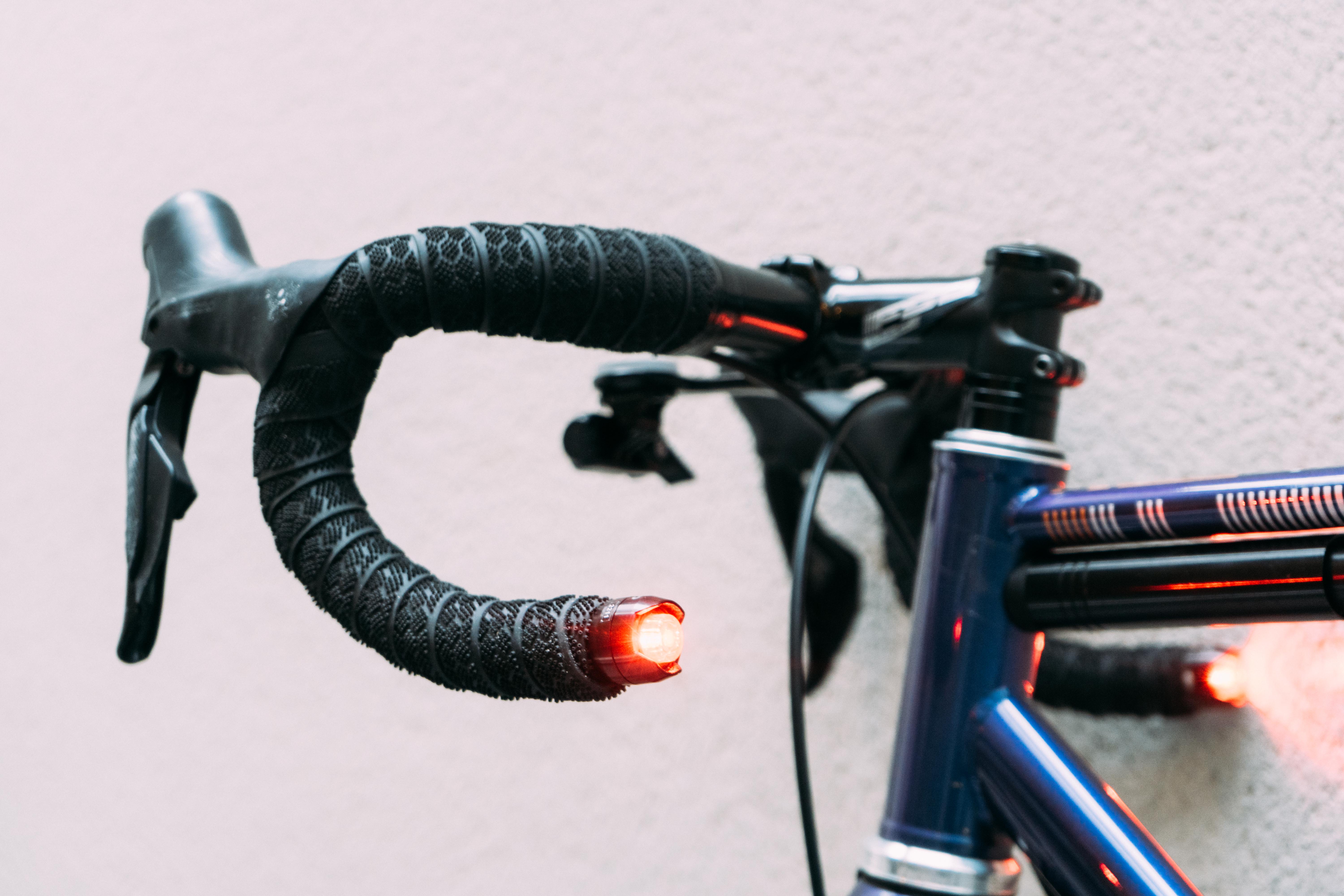
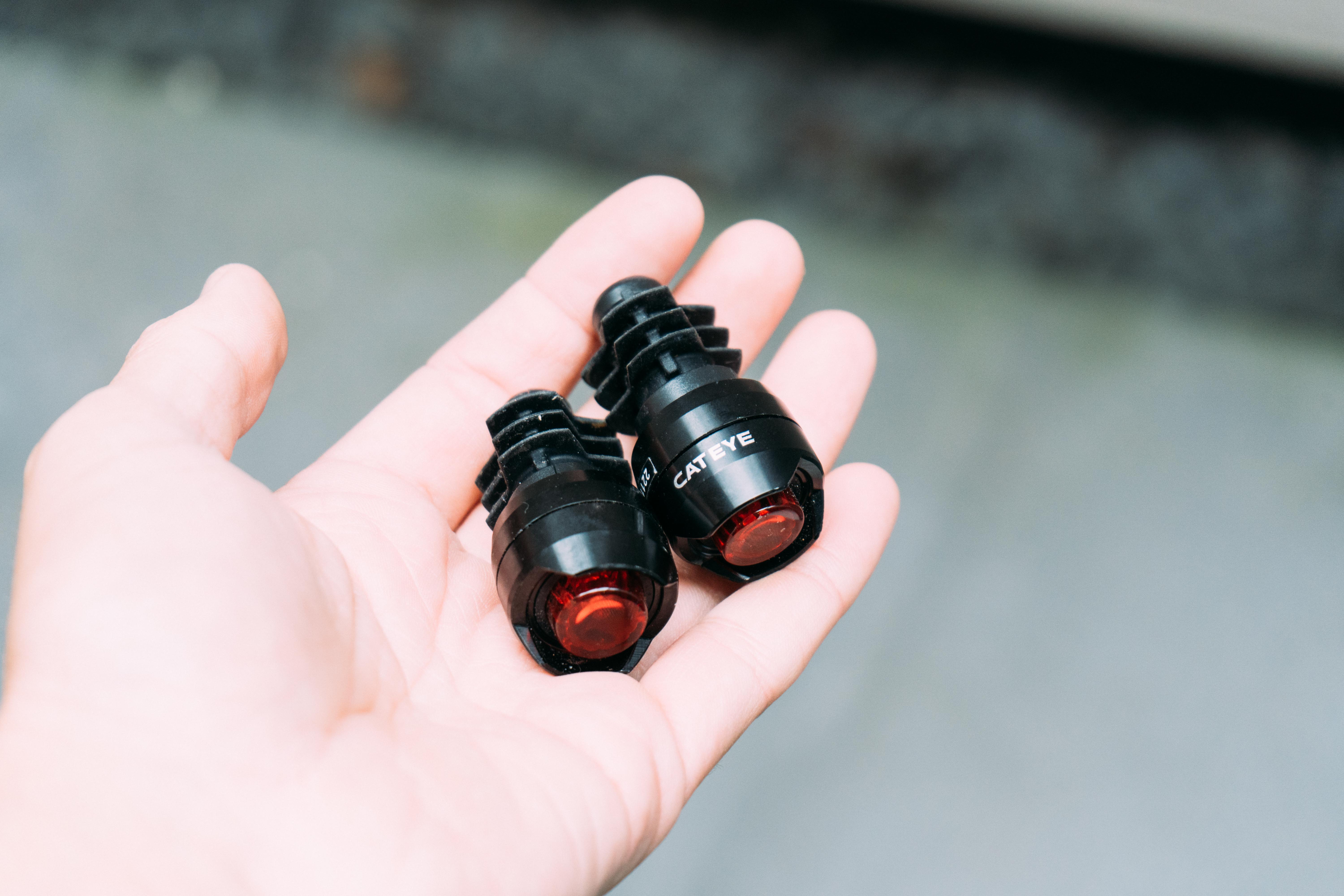
How should I mount my bike lights?
Show answer ▼
The usual way is clipped onto the top of your handlebars. This does remove a bit of real estate and isn't as neat as some other options, but it does give you easy access to the buttons that control the light modes. If you're running an out-front computer mount though you can find the extremely intense light directly exiting the front of the bike light will obscure your computer screen.
An increasingly common setup is to mount the light underneath one's bike computer. This keeps it out of the way, the light doesn't interfere with reading your stats, and you aren't going to bang your knees on it. It is harder to access the light controls here though. A word of warning, bike lights can be heavy, and if you're going to mount one under your computer then invest in a quality computer mount. Also if you're using a light with a cutoff beam then remember to keep it the right way up.
Avoid plastic entirely, and I really would avoid those cheaper ones you can find on eBay that mount via your stem bolts. I have snapped both. A plastic computer mount sent an Exposure light and my computer flying down the road at 65km/h, and while this is annoying and potentially expensive it is not nearly so dangerous as having one or two stem bolts suddenly become loose after a pothole. If in doubt, clip it to your bars.
You can also buy adapters that screw into things like fork eyelets, allowing you to bolt lights to your fork legs. Remember to do this on the fork leg closer to oncoming traffic so the front wheel doesn't obscure your light.
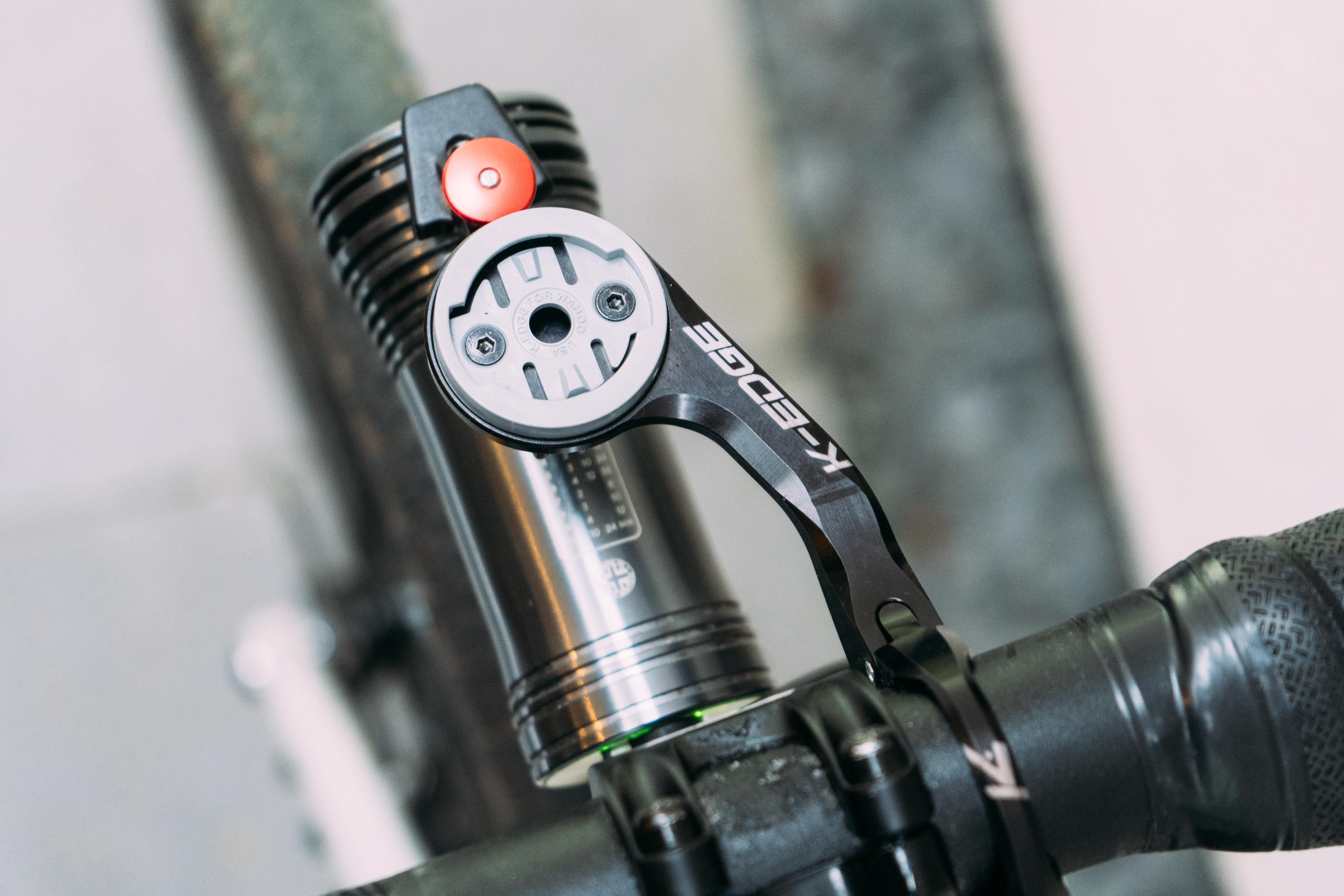
Do I need different lights for gravel riding?
Show answer ▼
As long as your bike light is of sufficient brightness then there isn't really any reason it can't be suited for road and gravel. Cutoff beams don't work so well off-road though, so stick to a good old-fashioned cone.
If you're riding fast or technical gravel then look to the world of mountain bike lights. The tech there is geared up for this sort of thing, and lights like the Exposure Race have features like 'Reflex' mode, where the light will automatically increase in brightness the faster you go.
What is an IP waterproof rating? IS IPX-6 good?
Show answer ▼
IP is the 'Ingress Protection' rating, or how well whatever object you're dealing with is at keeping water out. The ratings are as follows:
- IPX-0 No protection
- IPX-1 Protected against condensation or water falling vertically
- IPX-2 Protected against spraying water when tilted up to 15 degrees vertically
- IPX-3 Protected against spraying water when tilted up to 60 degrees vertically
- IPX-4 Protected against splashing water from any angle
- IPX-5 Protected against low-pressure water stream from any angle
- IPX-6 Protected against high-pressure water stream from any angle
- IPX-7 Protected against water immersion for 30 minutes to a depth of 1 meter
- IPX-8 Protected against continual water submersion in under water conditions
For the purposes of bike lights, IPX-6 is the one to aim for, though you do see IPX-5 and IPX-4. Remember, when riding at speed, rain becomes water hitting your lights at high velocity from various angles, and if you don't have mudguards then your rear lights especially are beset by a near constant torrent of water. I have managed to kill inferior lights in under an hour before, so if you ride in the rain then pay attention here.
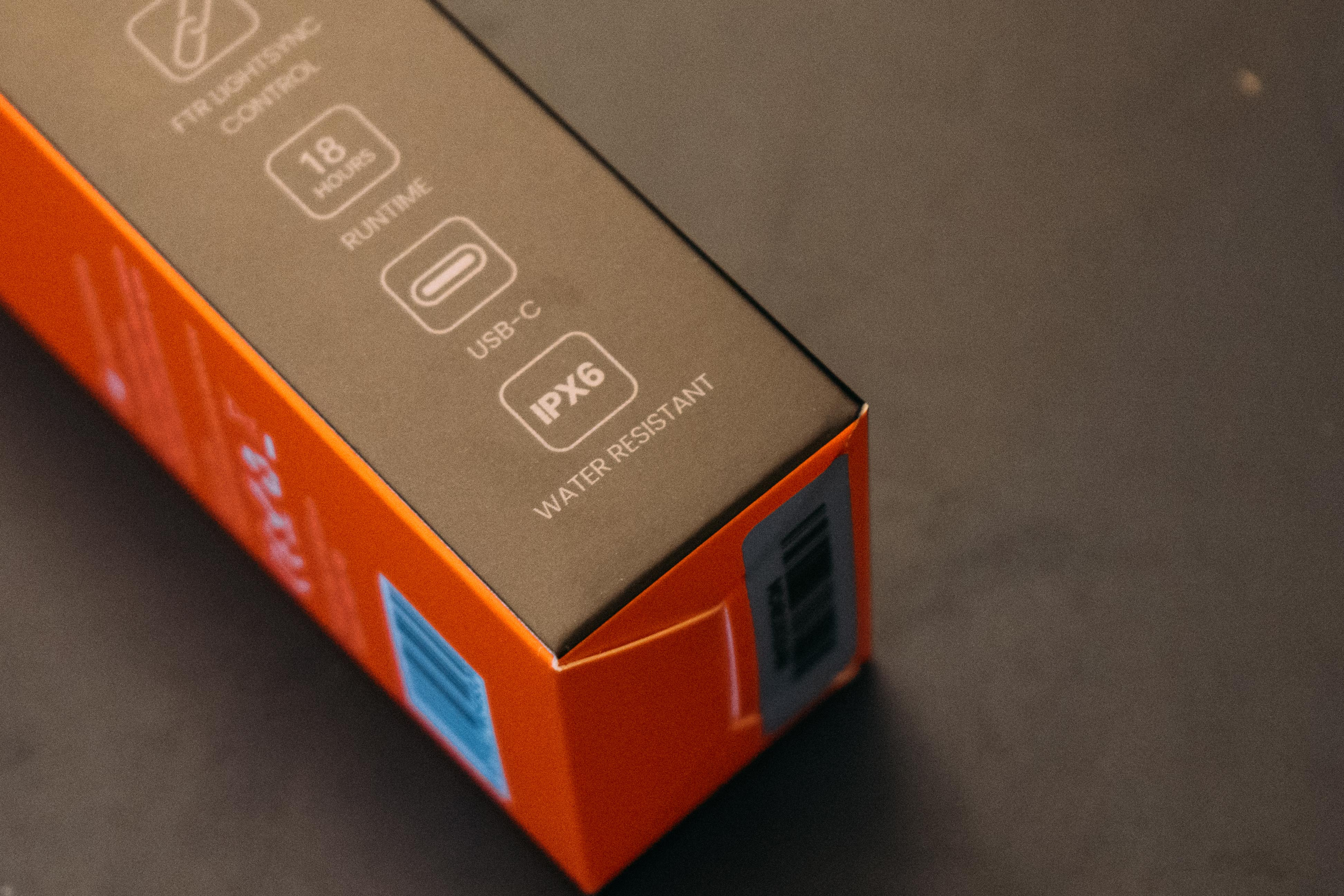
What battery type is best for a bike light?
Show answer ▼
More or less every bike nowadays has an internal lithium ion battery, charged by a USB cable. Gone are the days of changing a pair of AAA batteries, thankfully - avoid these, as they are still sold, as they're a pain in the backside.
Mountain bike lights often come with a larger, separate power pack that straps to a top tube, or fits in a frame bag for gravel, to save mounting a giant ingot to the bars. It's slightly more clumsy, but they do allow you to see better when it's very dark indeed.
How long should my bike light battery last?
Show answer ▼
Always overestimate your needs and underestimate the specs. If you are trying to ride through the night on an epic adventure the last thing you want to start worrying about is an ever-dwindling light supply. Look at how long your ride will last then make sure you have a light that gives a comfortable buffer. Then bring an extra just in case.
For commuting things are a little less serious but you should still overestimate your needs. After a long day at work and a rainy ride home it's very easy to forget to charge your light. A longer battery is more convenient because you will need to charge it less.
Whatever your need, keep in mind that brighter lights have bigger batteries and you can turn them down. A 2000 lumen light will require a bigger integrated battery than a 1000 lumen light because some people will need a reasonable burn time at full power. Instead, you can halve the power and double the burn time plus if you ever need more light, it's there.
Why are bike lights so expensive?
Show answer ▼
High quality modern lights have a lot built into them. There are active sensors that detect other light sources and your own motion to adapt to the conditions. Heat management is built into bigger lights, as well as bigger batteries so you can go further between charges while using less power.
All of this comes at a price, and while you can get some really cheap clip on lights that, legally speaking, will keep you out of trouble, if you're serious about safety, being seen, and seeing where you're going you do get what you pay for here.
How do we test bike lights?
Testing the best bike lights means a lot of hours riding in the dark. After an initial inspection and rundown of the specs everything is pitted against the environment it was designed for, and then some. Commuter lights are thrown into rush hour traffic to and from the Cyclingnews office. Year round I go into the office twice a week, which is an hour riding each way in the dark in the winter months. Half of the commute is on inner city streets and main roads, and the other half on an unlit railway path.
Road lights head out onto unlit lanes to hunt for PR's while everyone else is on the turbo, and lights aimed at gravel riding head off into the woods to see if they can pass muster not only as a light source, but in terms of their ability to withstand muck and grime - I have killed a brand new light in under an hour before simply from getting it too wet.
My usual rides are between two and four hours, though occasionally a lot longer even in winter, and daytime running the whole time tests out lights' daytime credentials. I also swap the lights between road, gravel, and commuting/general pub duties to see how they stack up not just in illumination but in useability, which is especially important with things like aero seatposts.
Everything is weighed independently, without mounting hardware, as many lights come with a simple rubber strap, while others come with a range of options that vary in weight.
So far I must have tried at least 20 different options, ranging from those bright enough to land a helicopter in the wilderness through to those barely able to challenge a tealight. Everything I recommend has to pass my own 'pub test', which is that, if my friend asked me in the pub what they should buy for a certain situation, this is what I'd point them to.
Read more about how Cyclingnews tests for our product recommendations.
Get The Leadout Newsletter
The latest race content, interviews, features, reviews and expert buying guides, direct to your inbox!

Will joined the Cyclingnews team as a reviews writer in 2022, having previously written for Cyclist, BikeRadar and Advntr. He’s tried his hand at most cycling disciplines, from the standard mix of road, gravel, and mountain bike, to the more unusual like bike polo and tracklocross. He’s made his own bike frames, covered tech news from the biggest races on the planet, and published countless premium galleries thanks to his excellent photographic eye. Also, given he doesn’t ever ride indoors he’s become a real expert on foul-weather riding gear. His collection of bikes is a real smorgasbord, with everything from vintage-style steel tourers through to superlight flat bar hill climb machines.